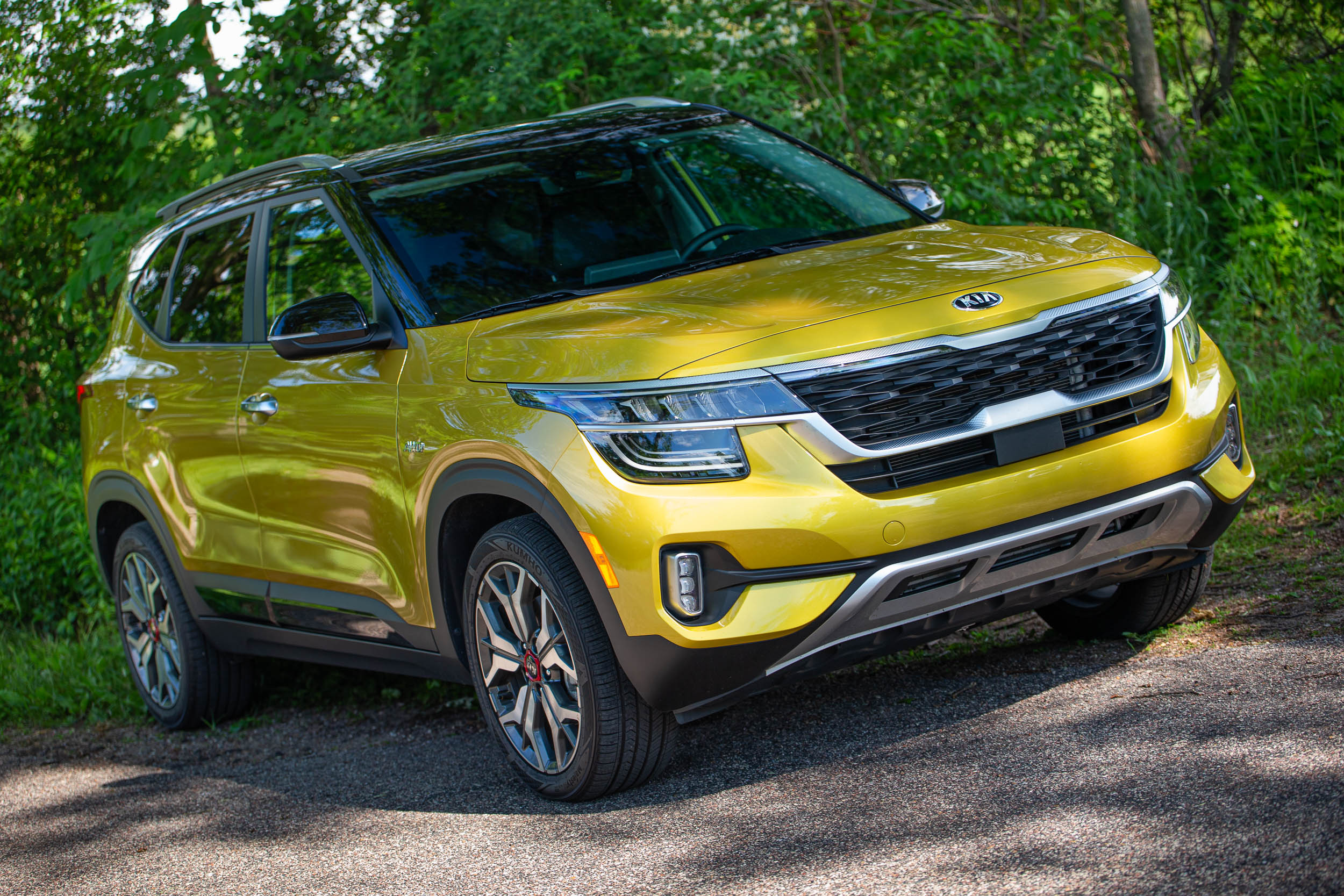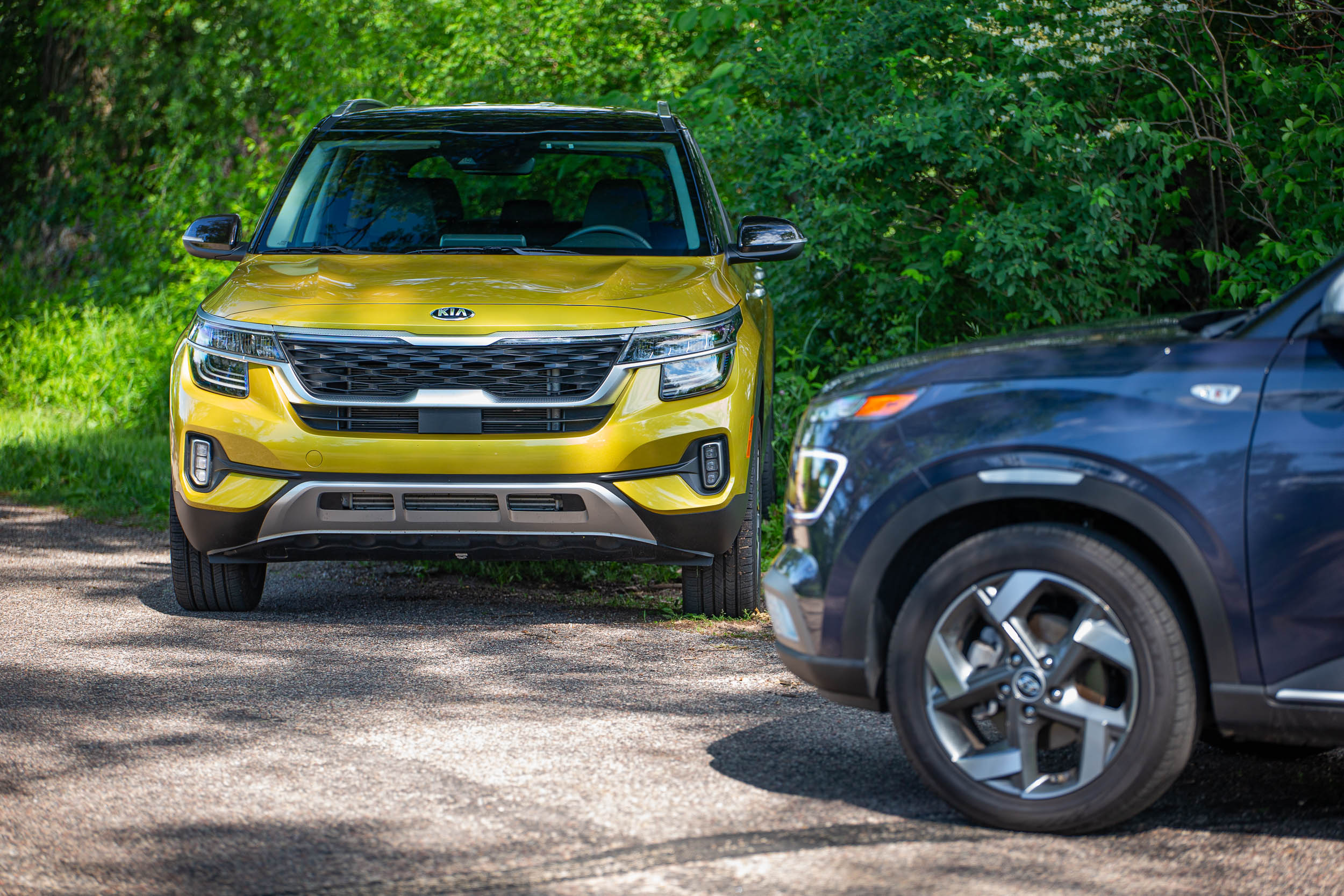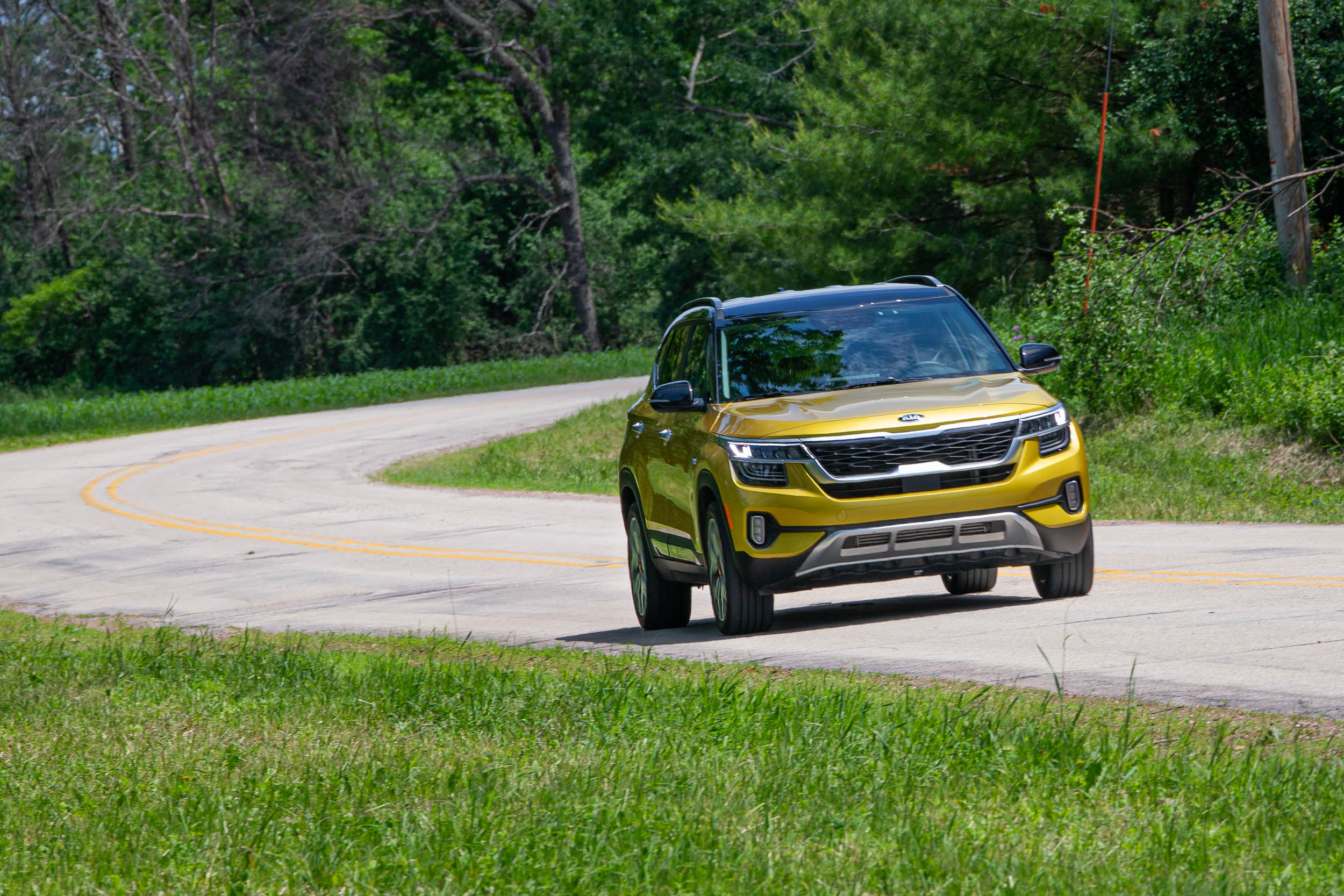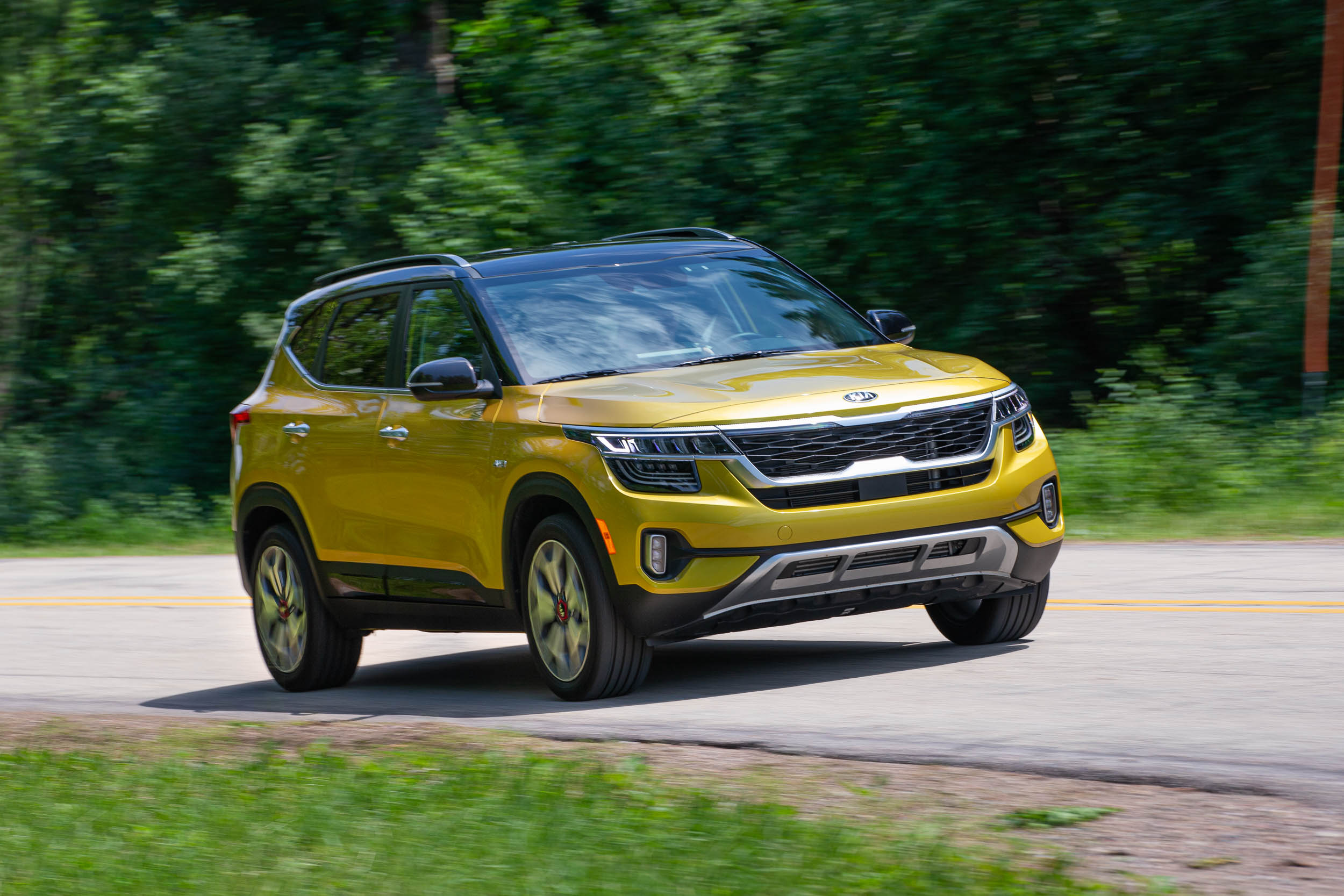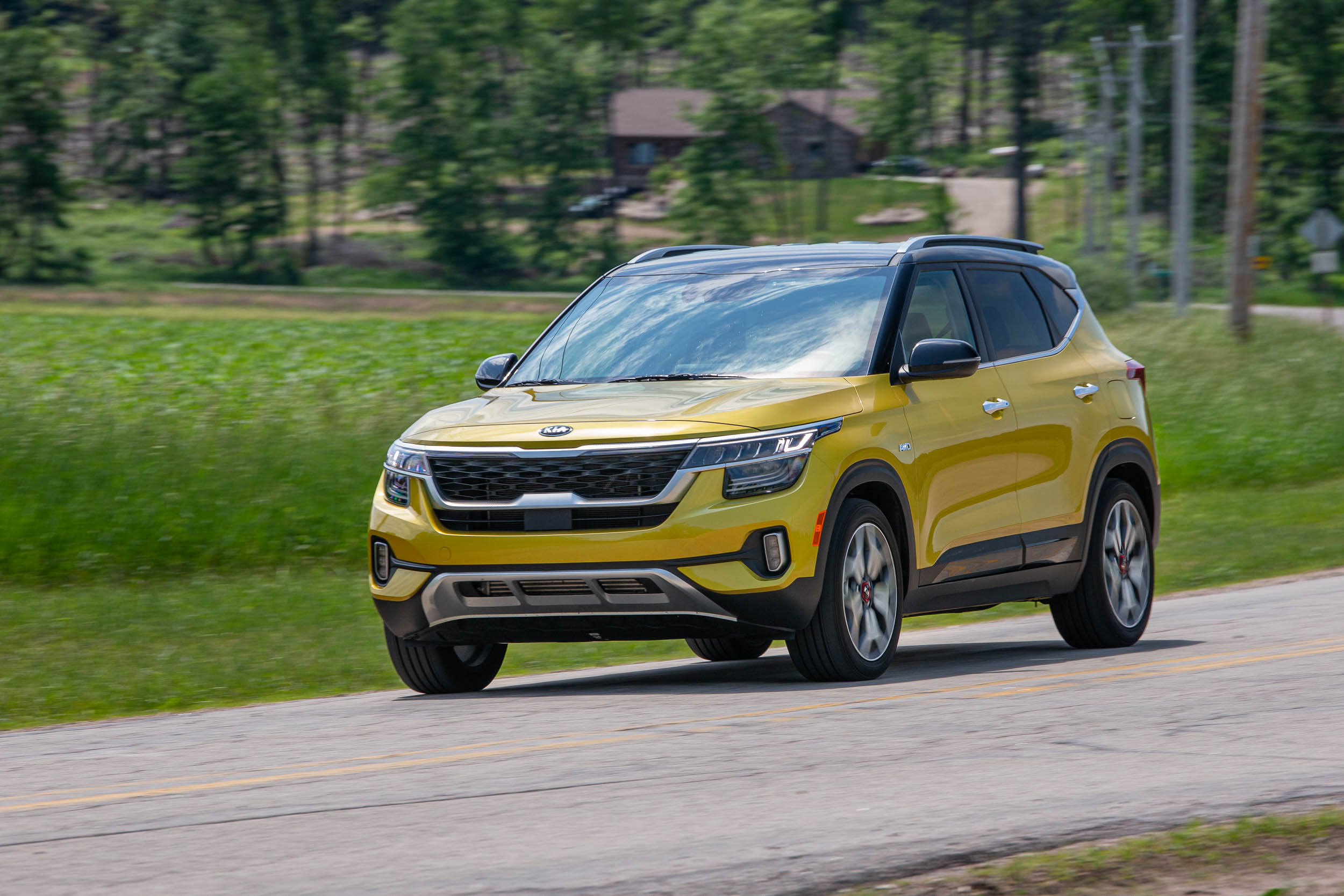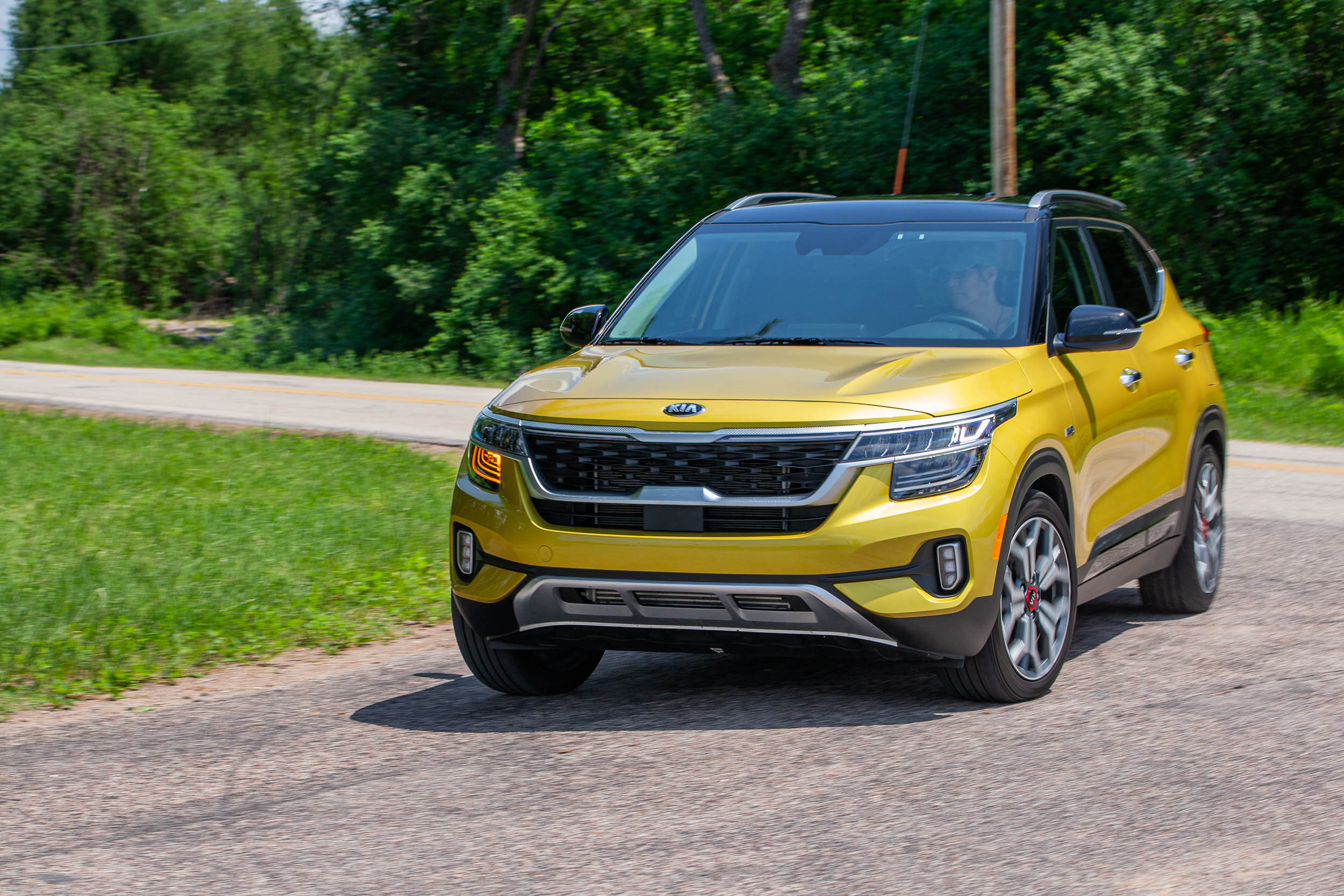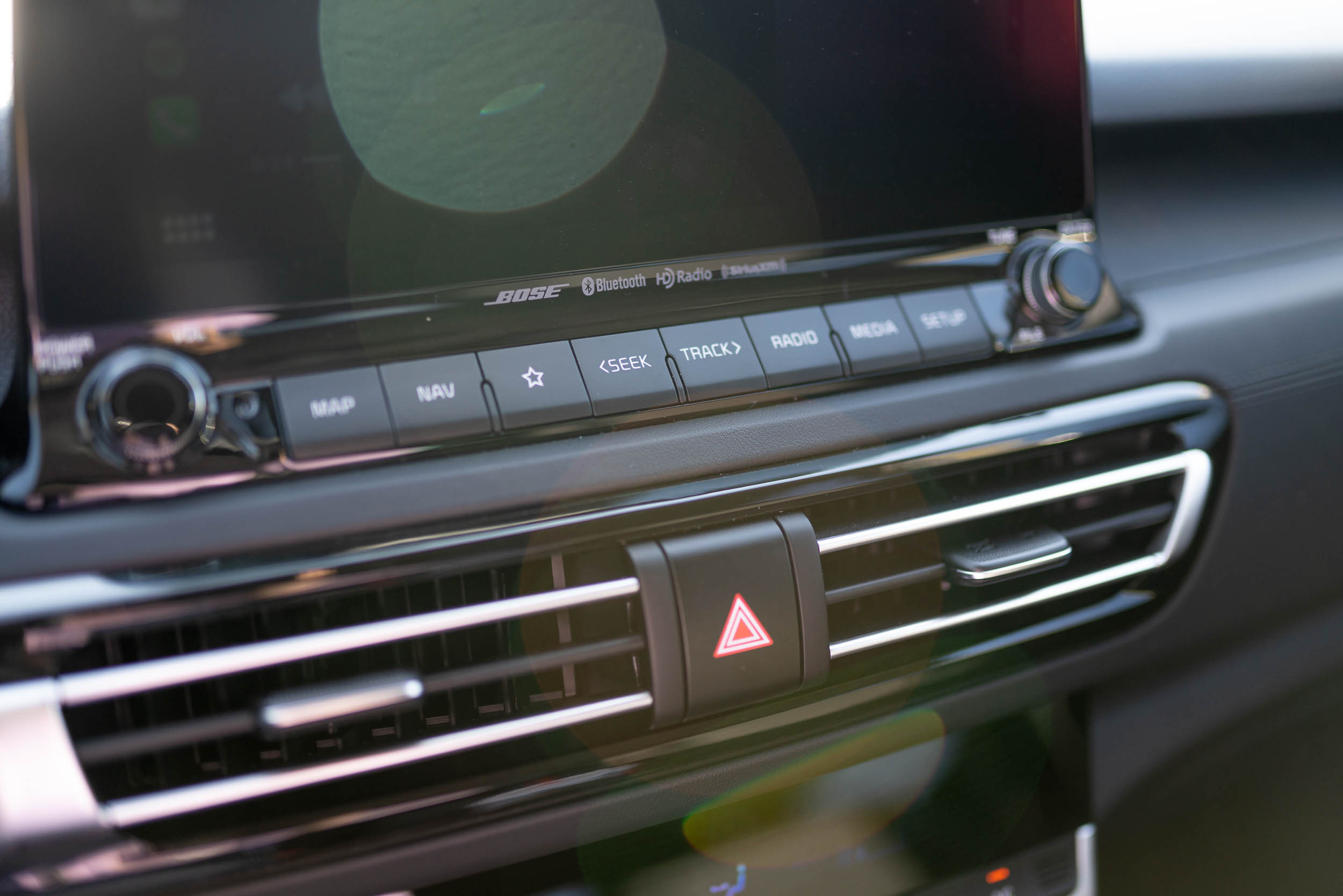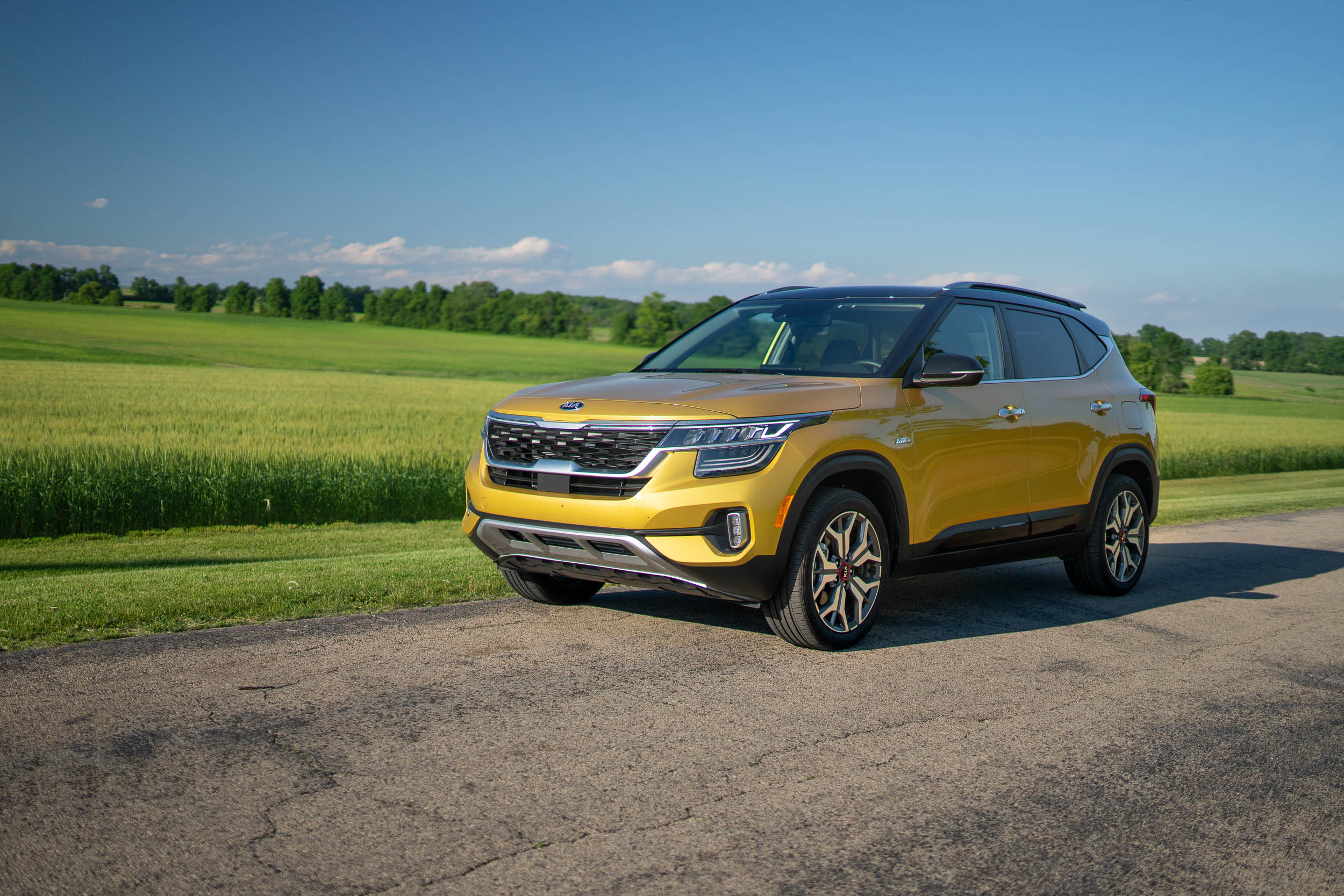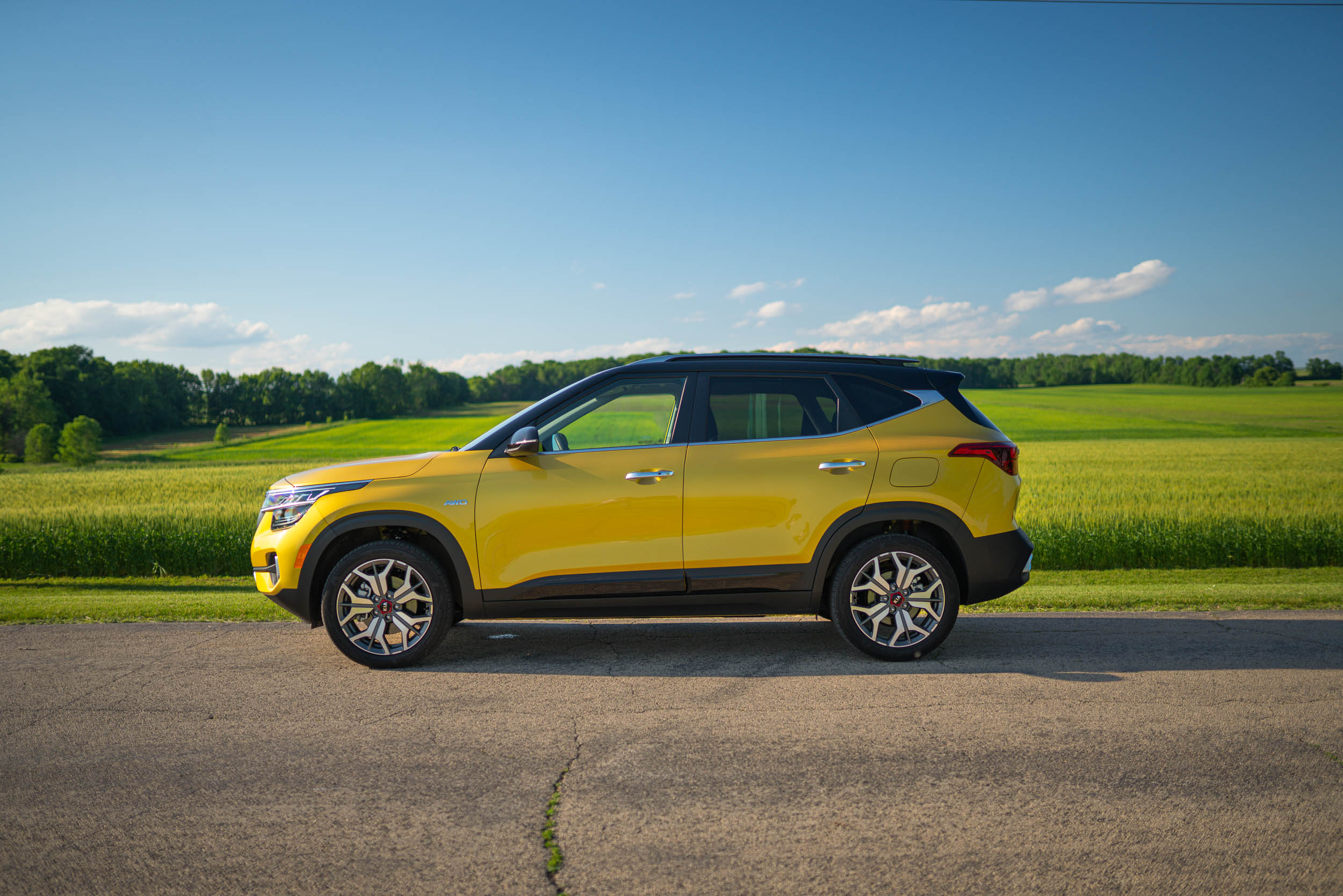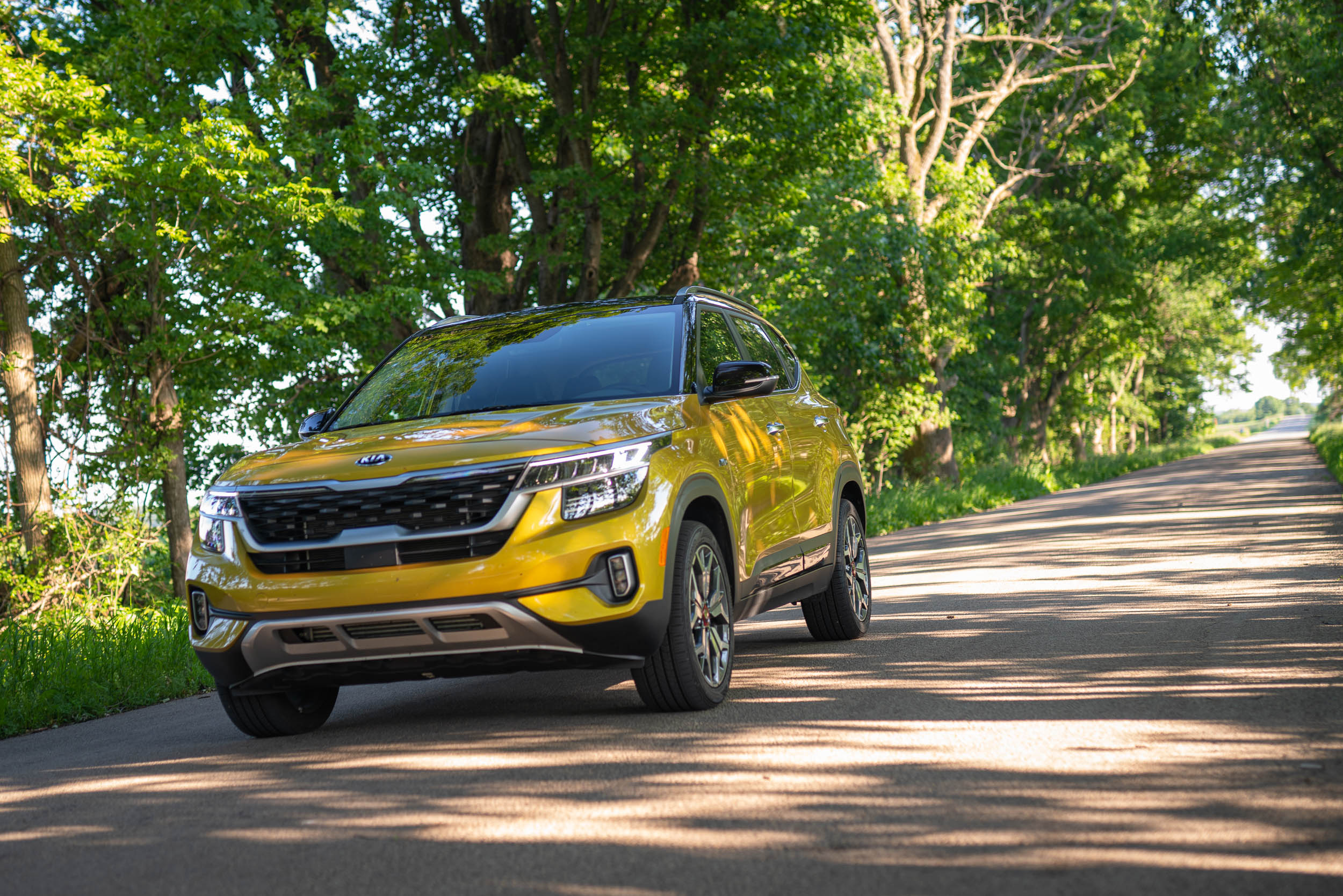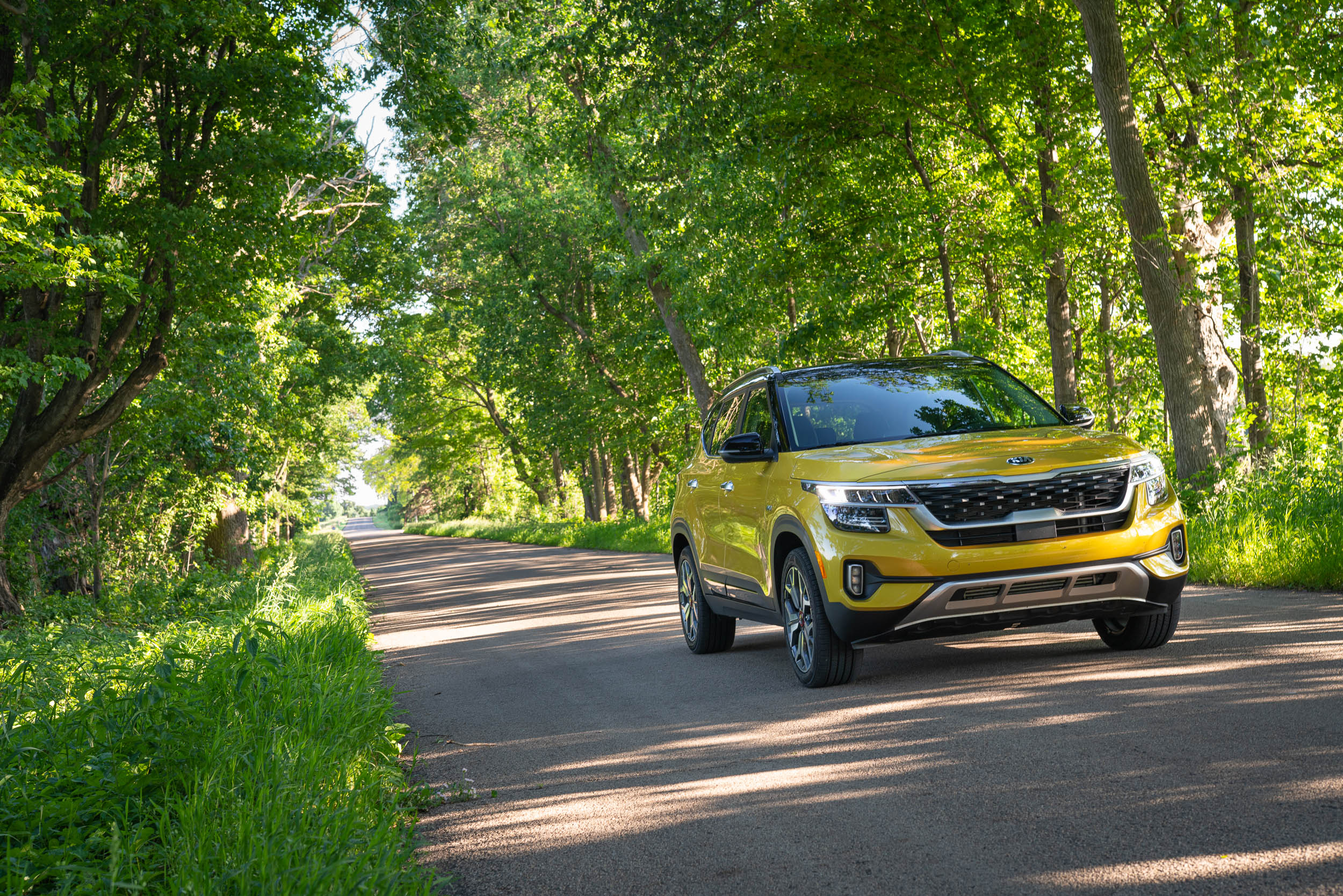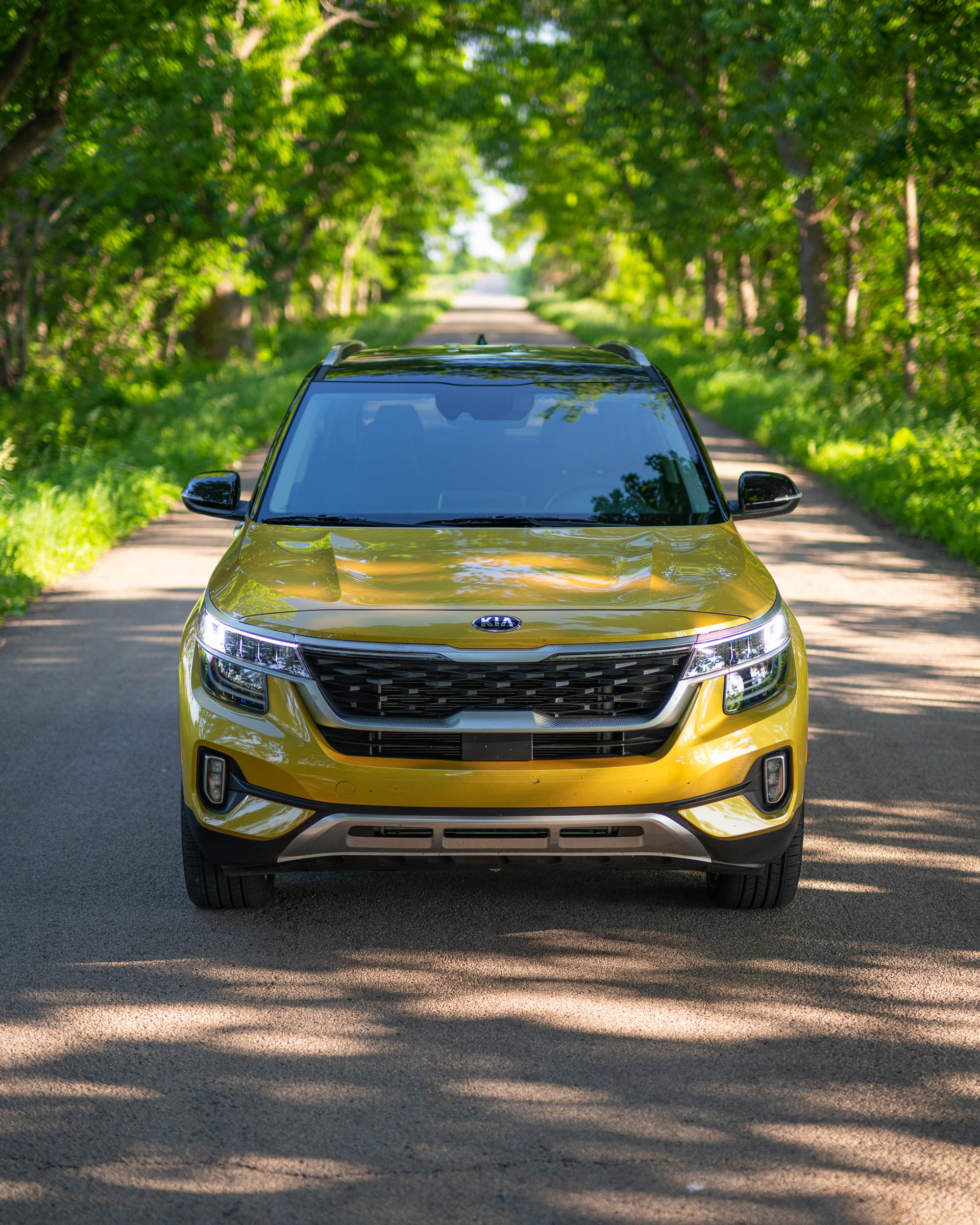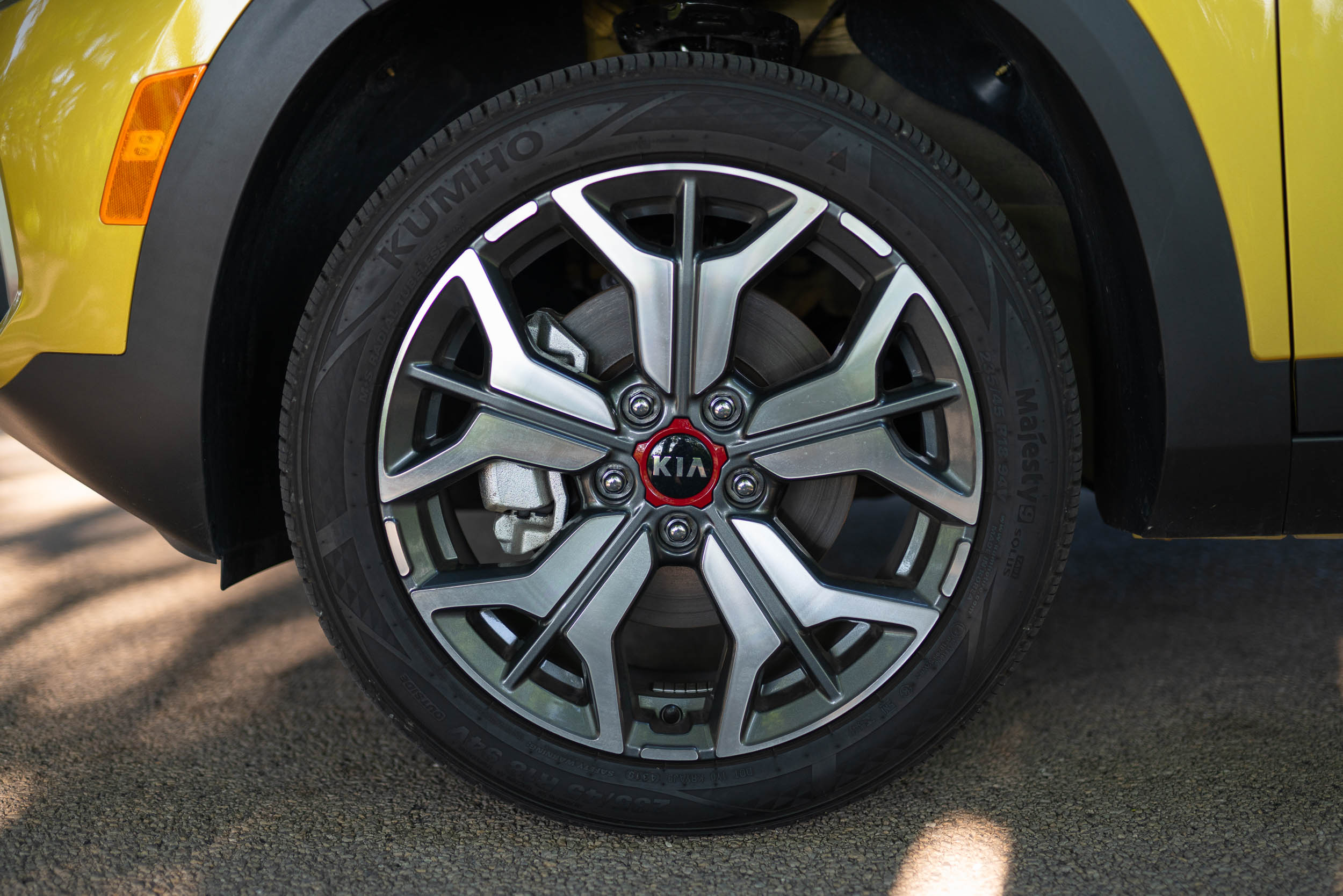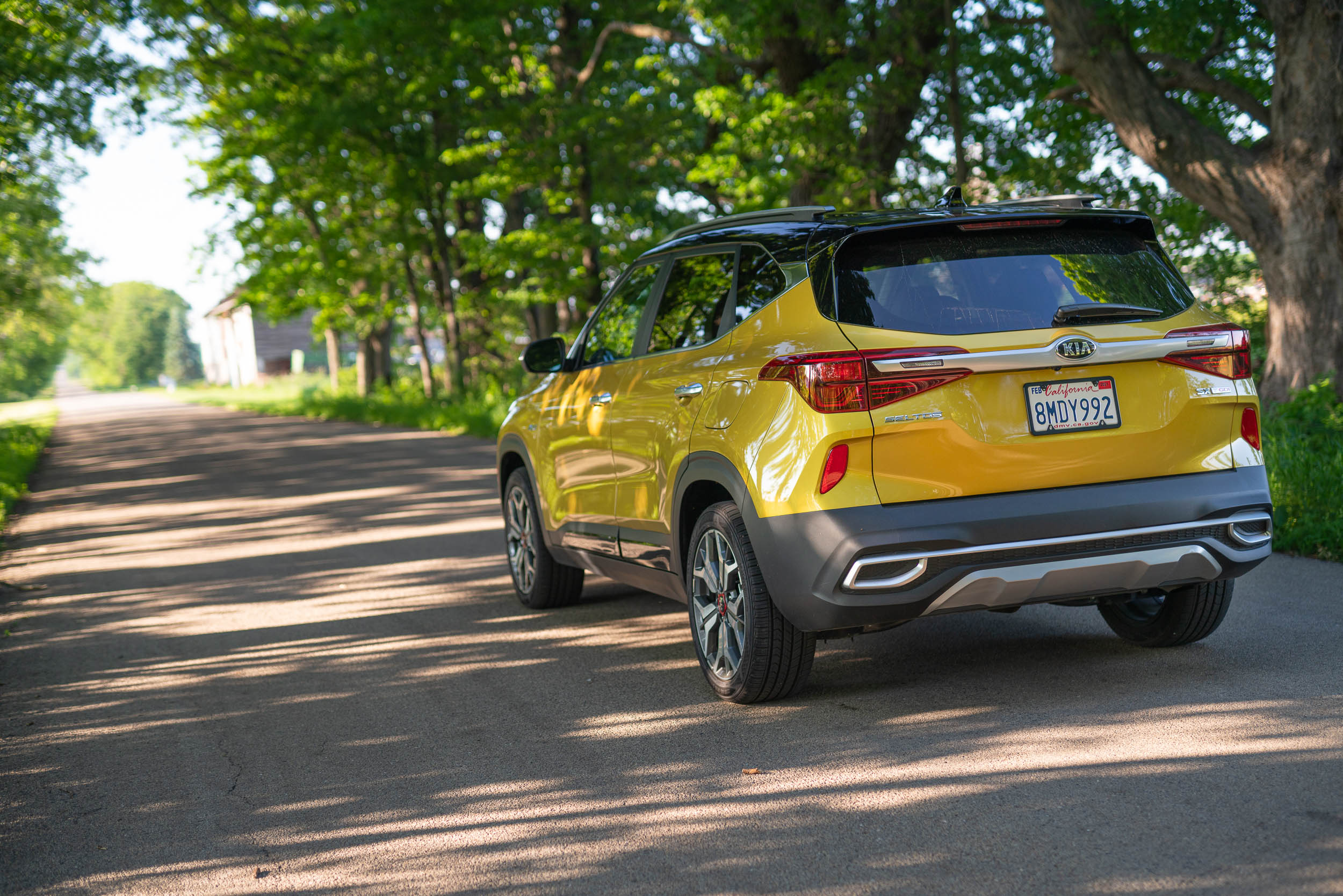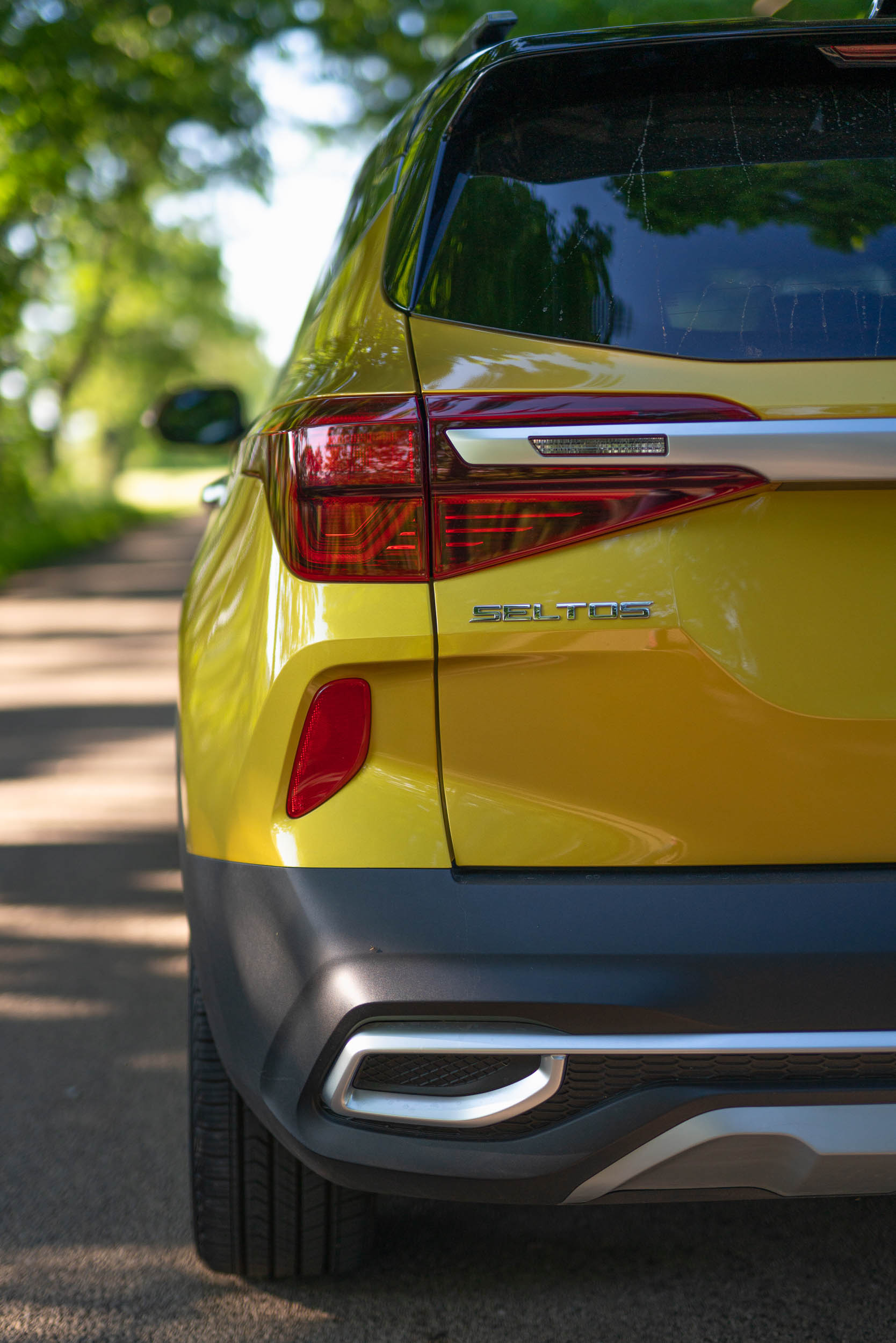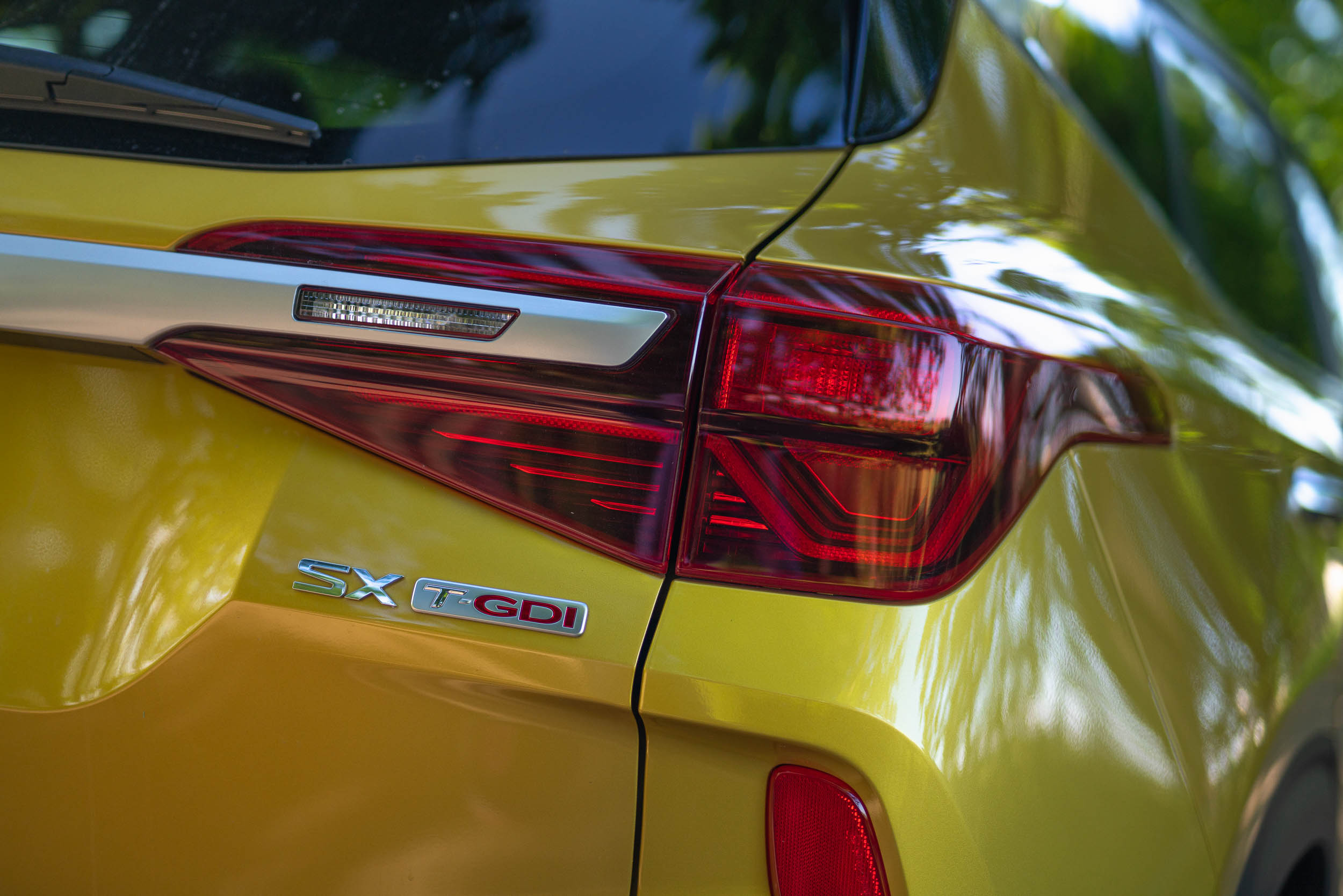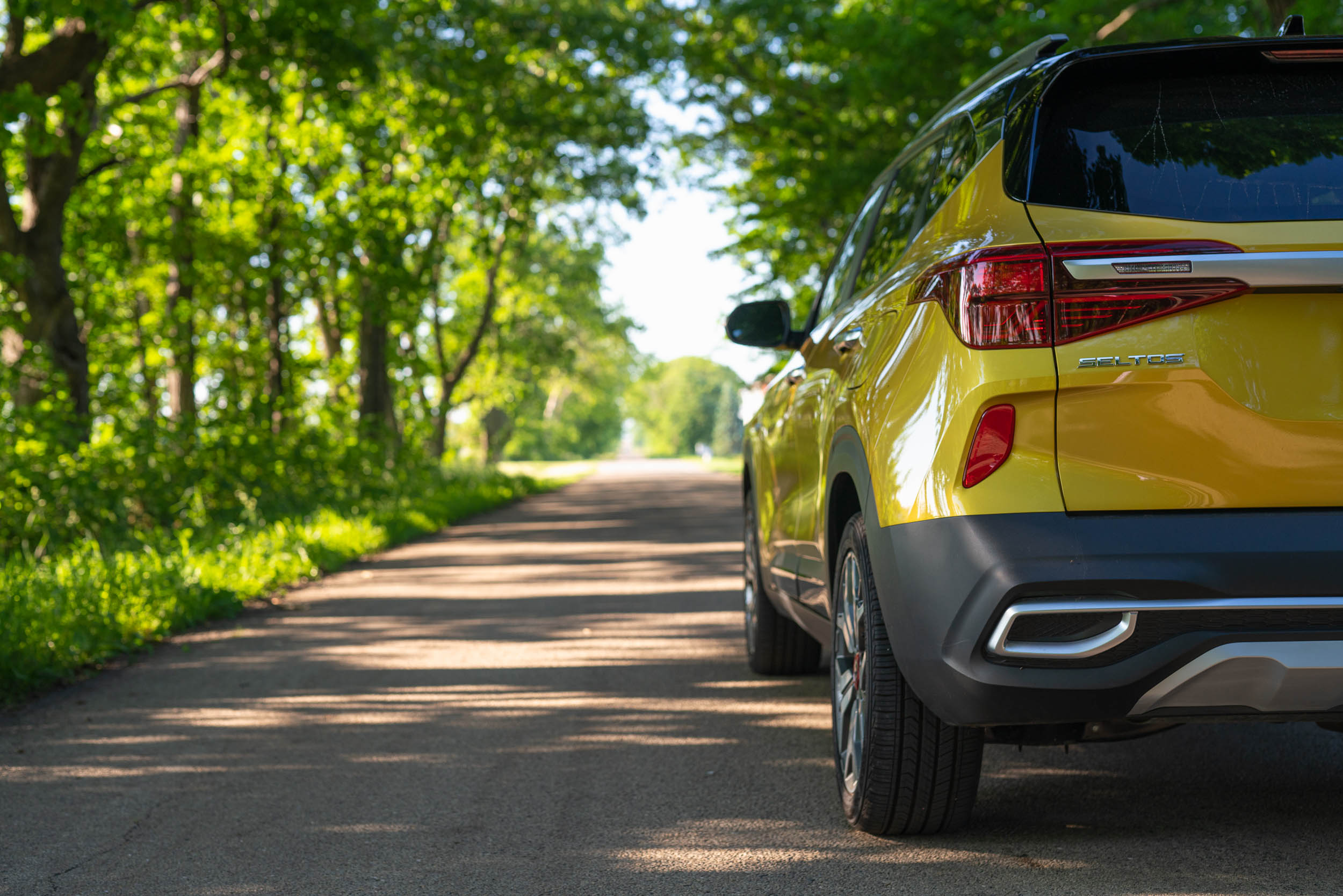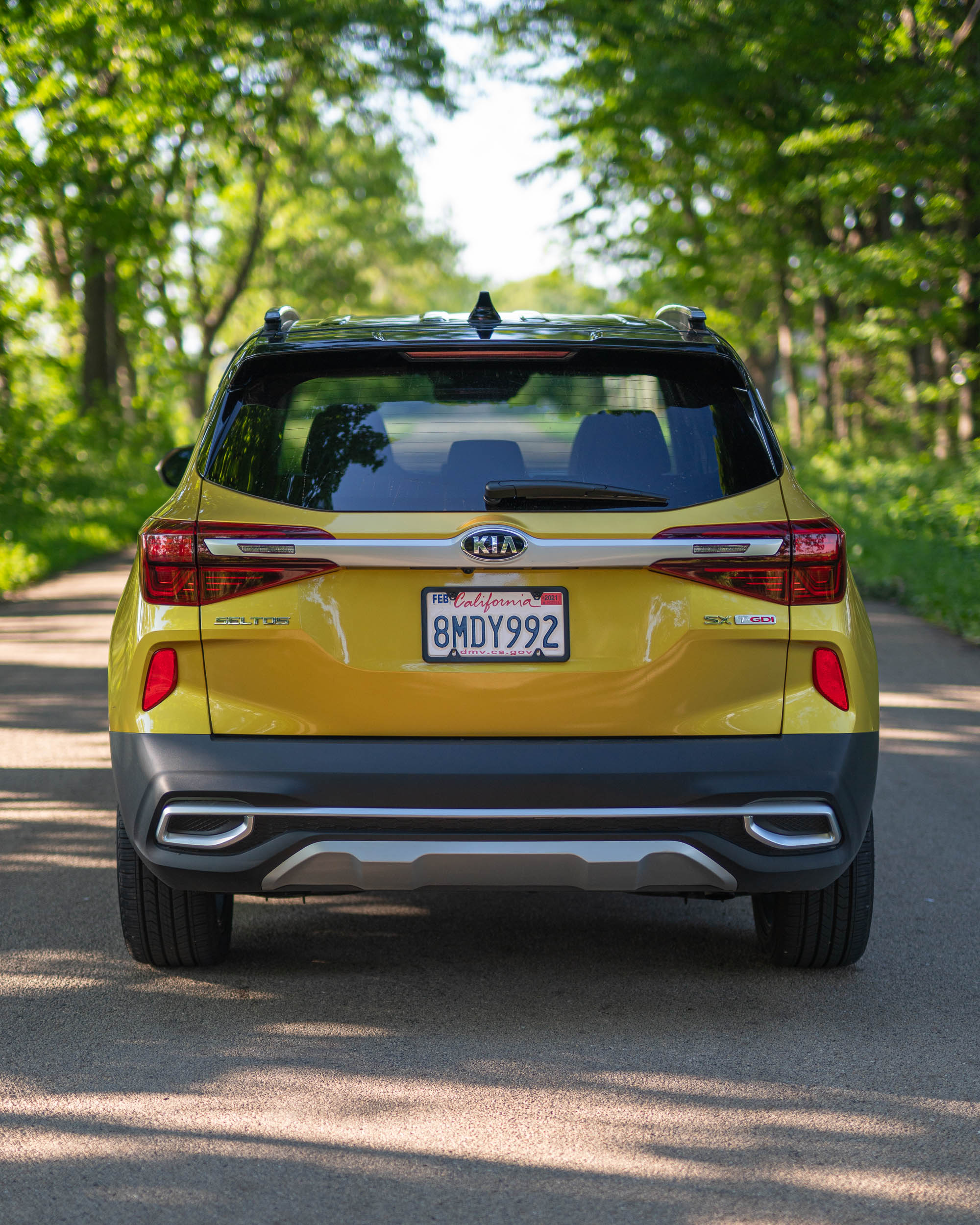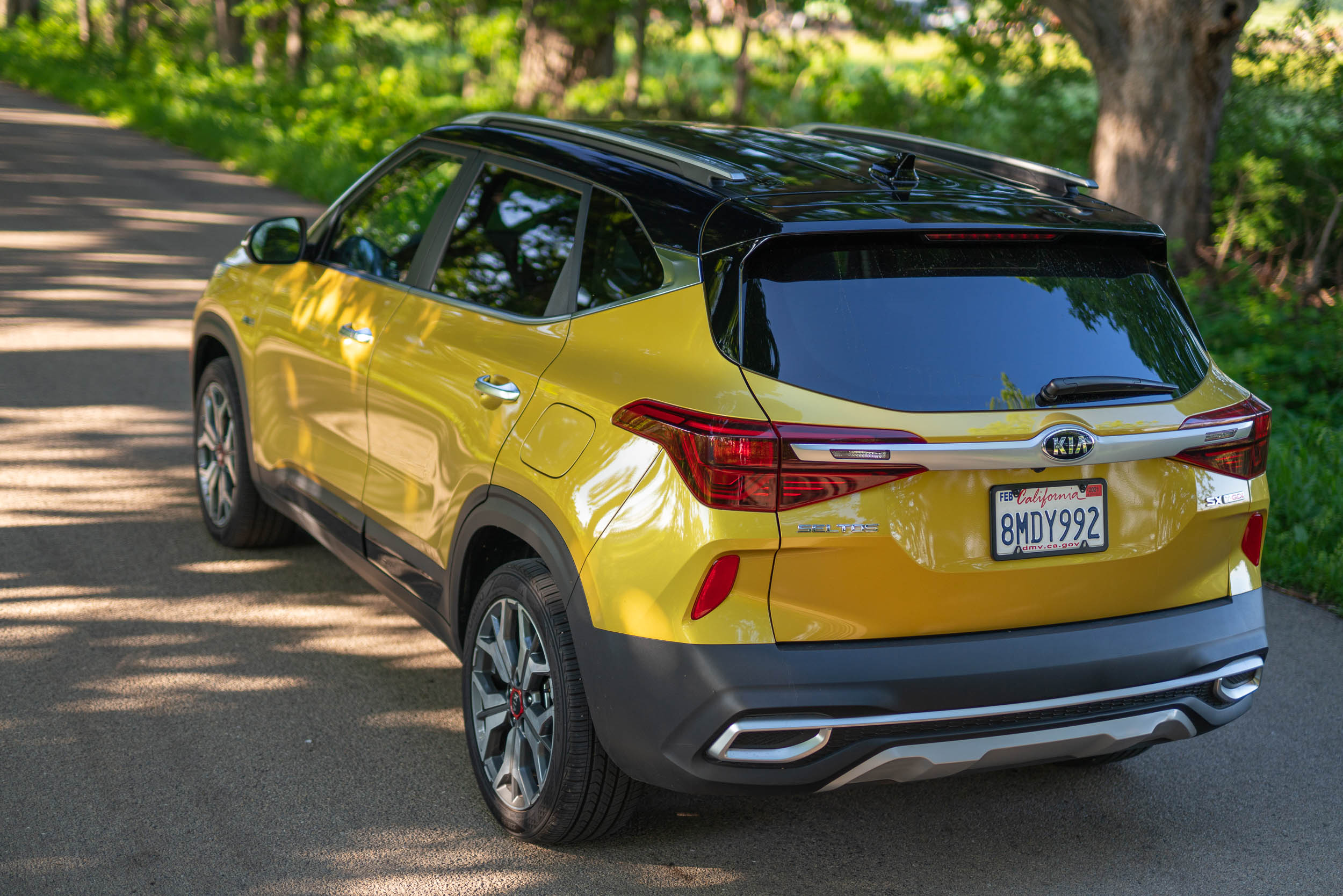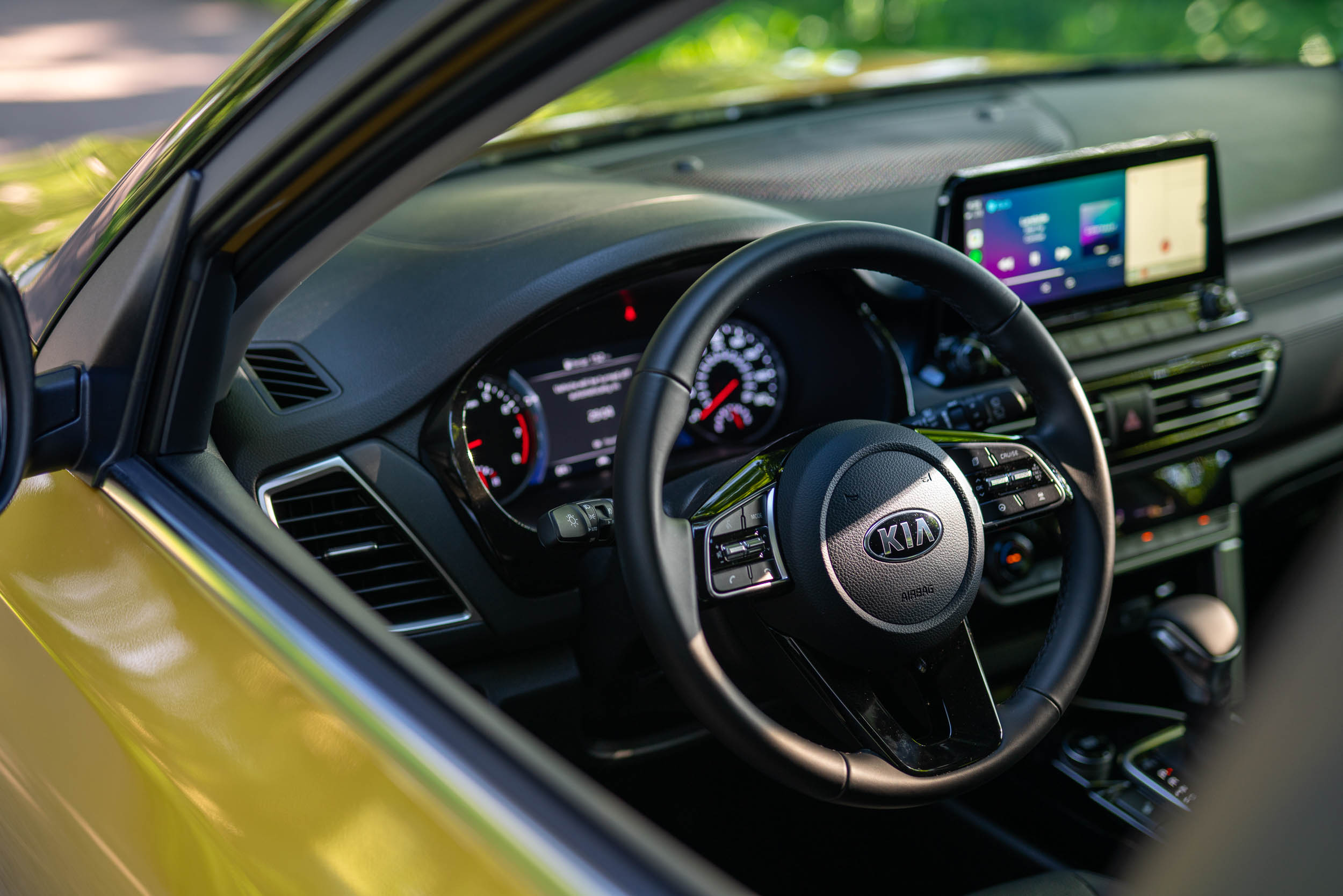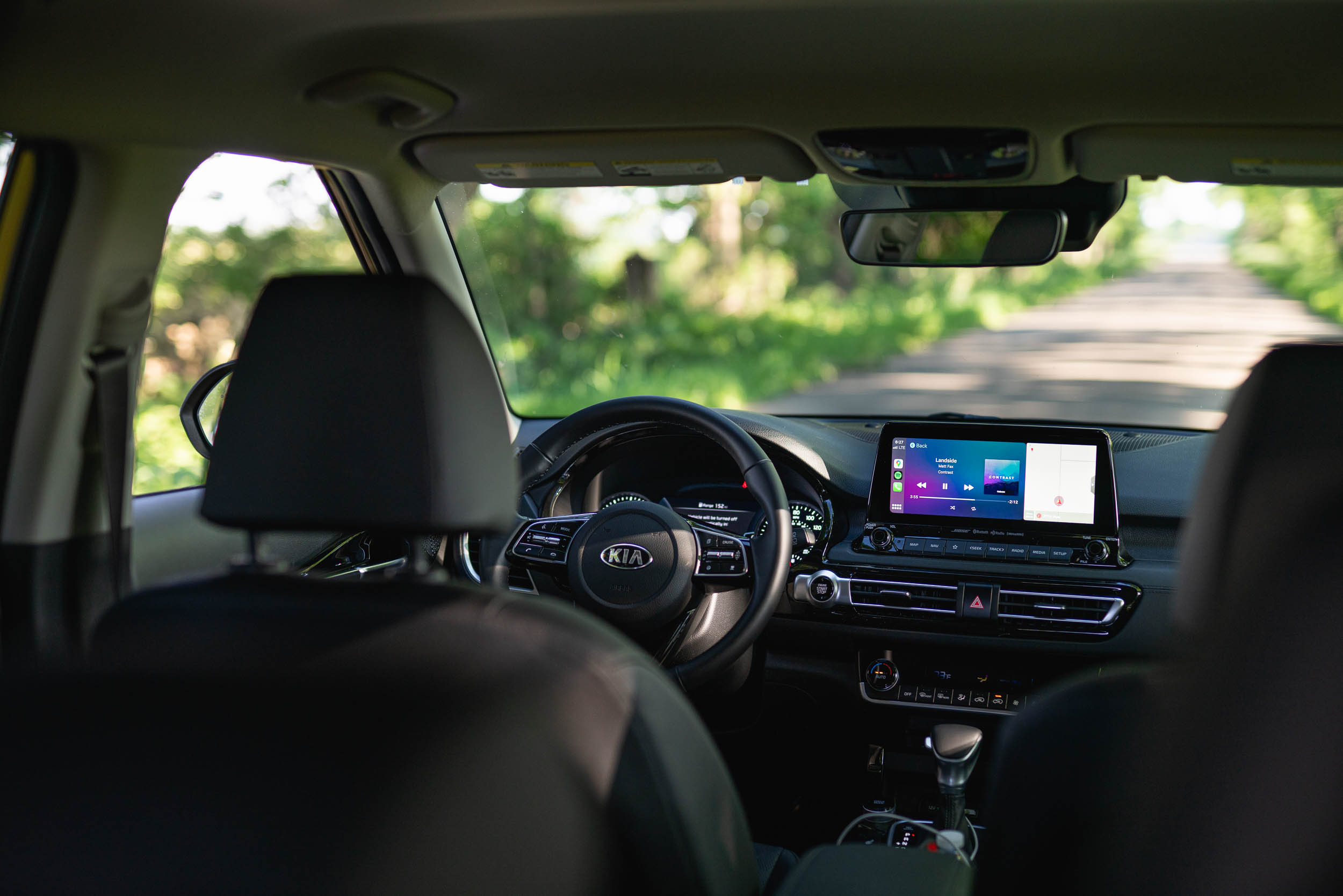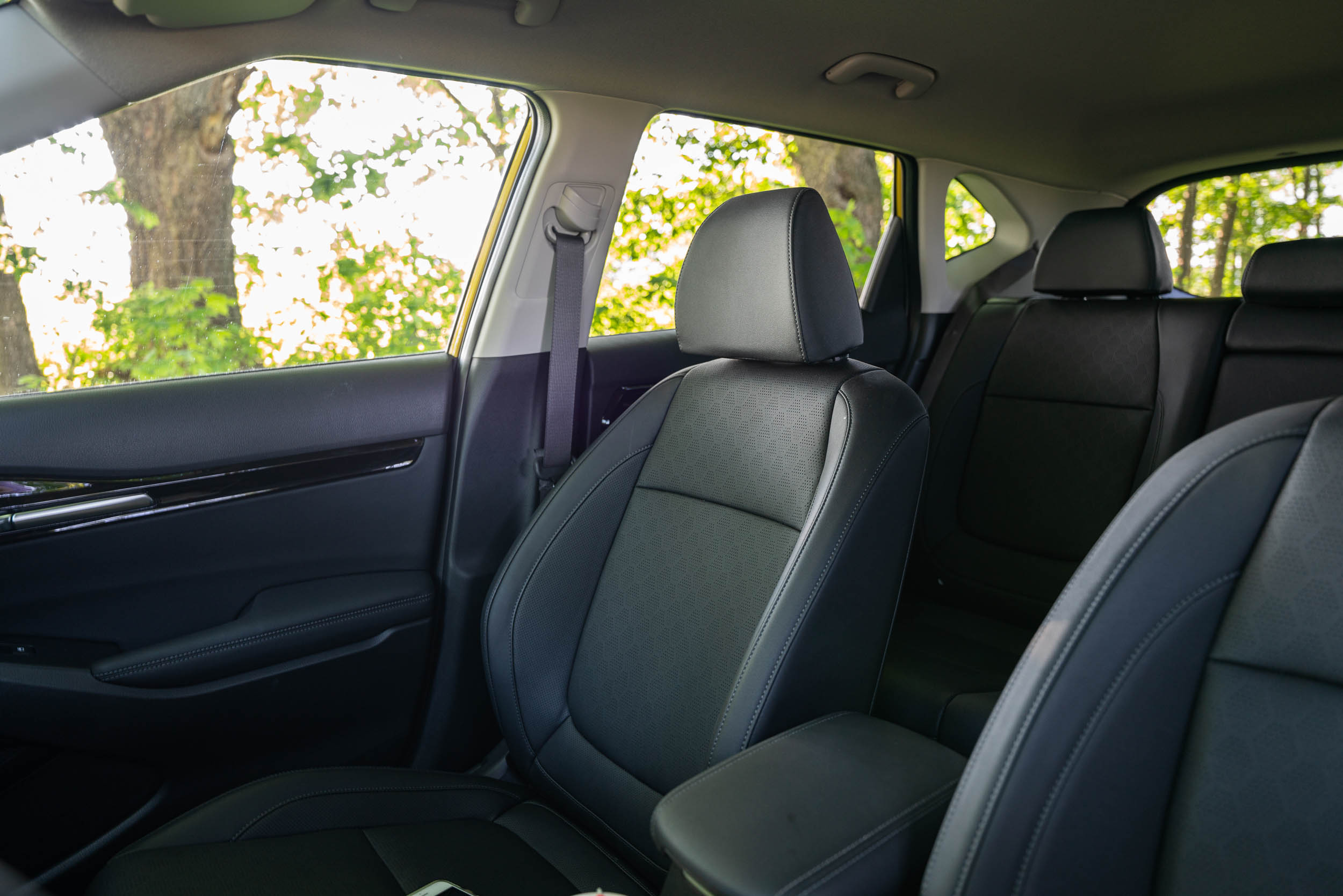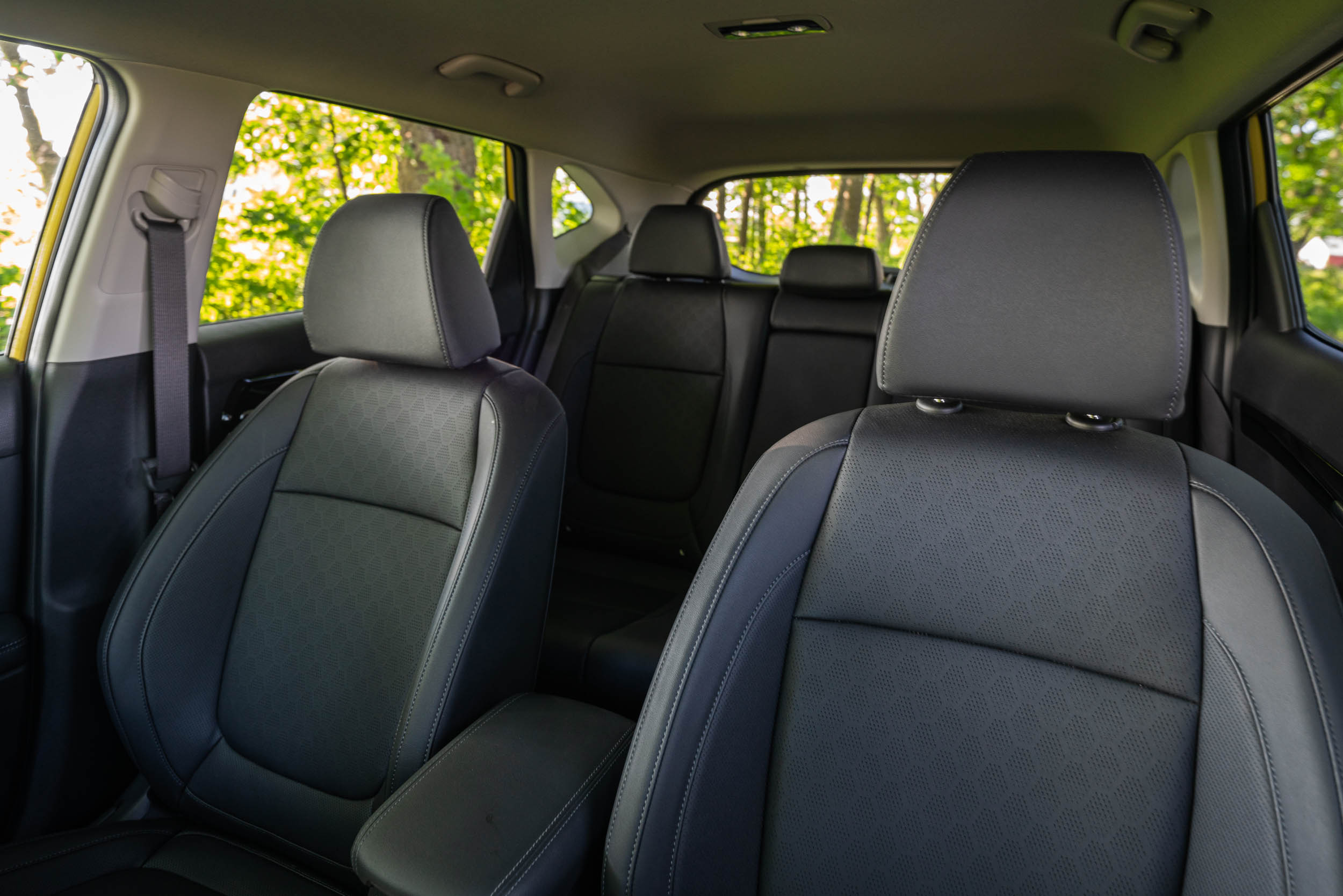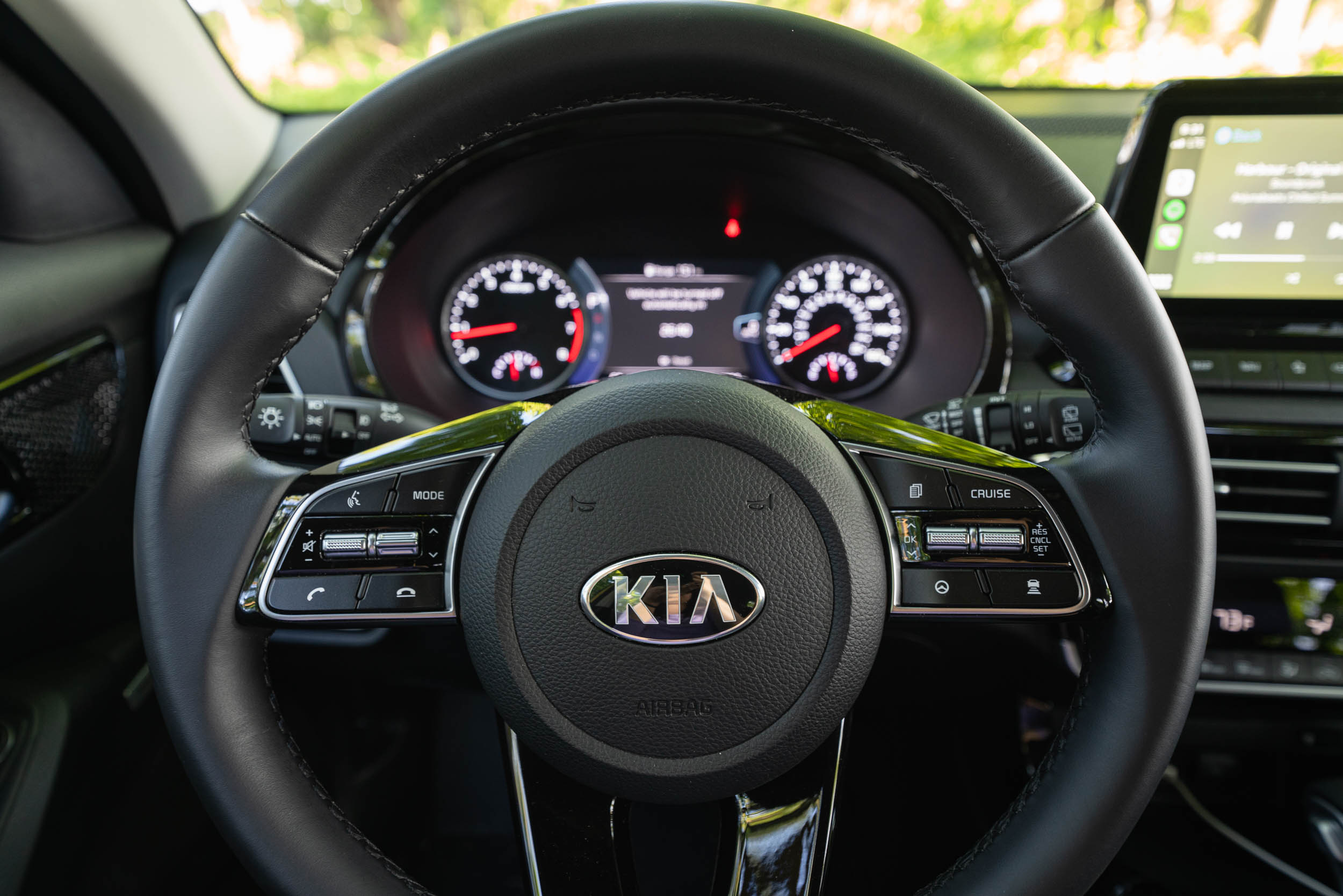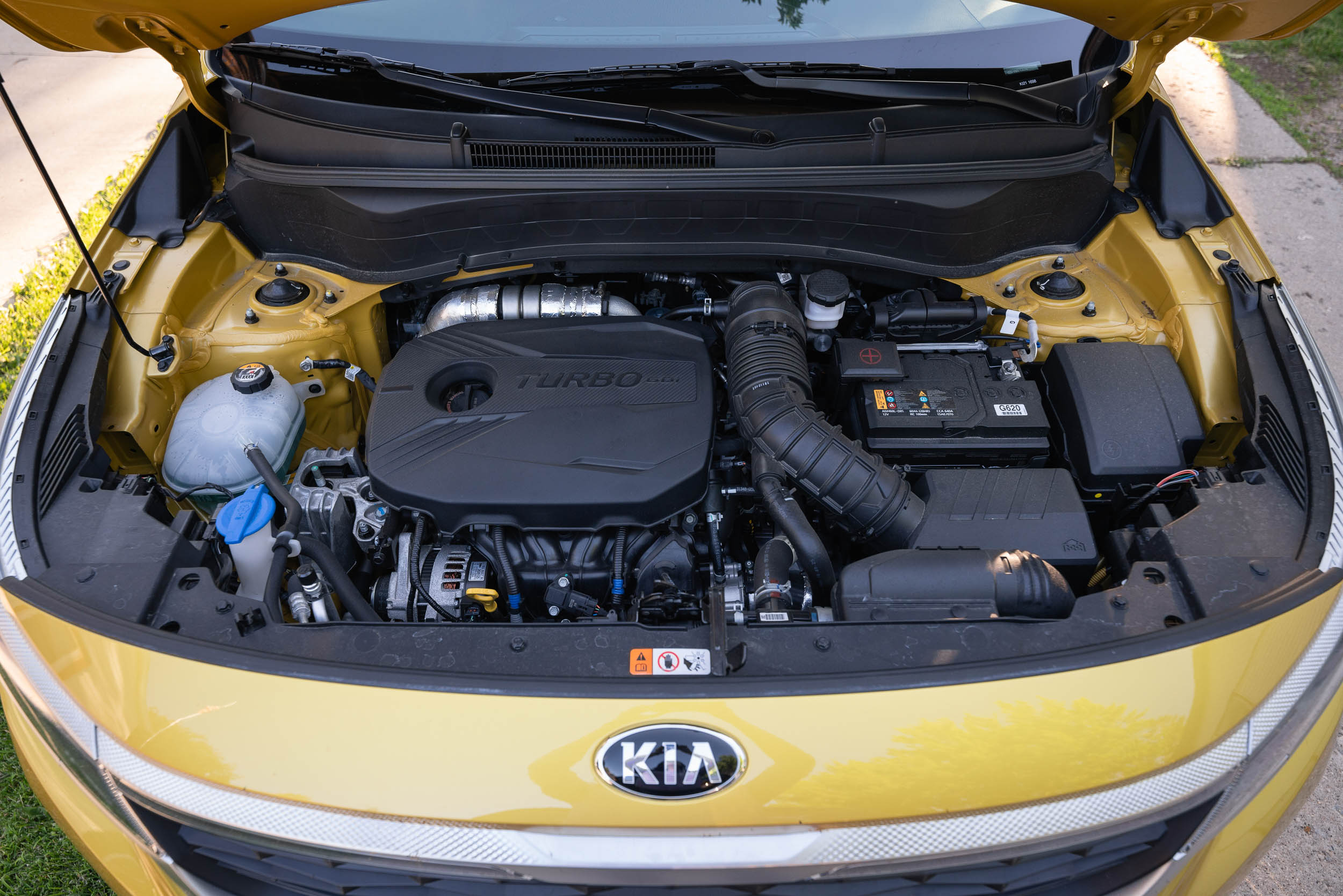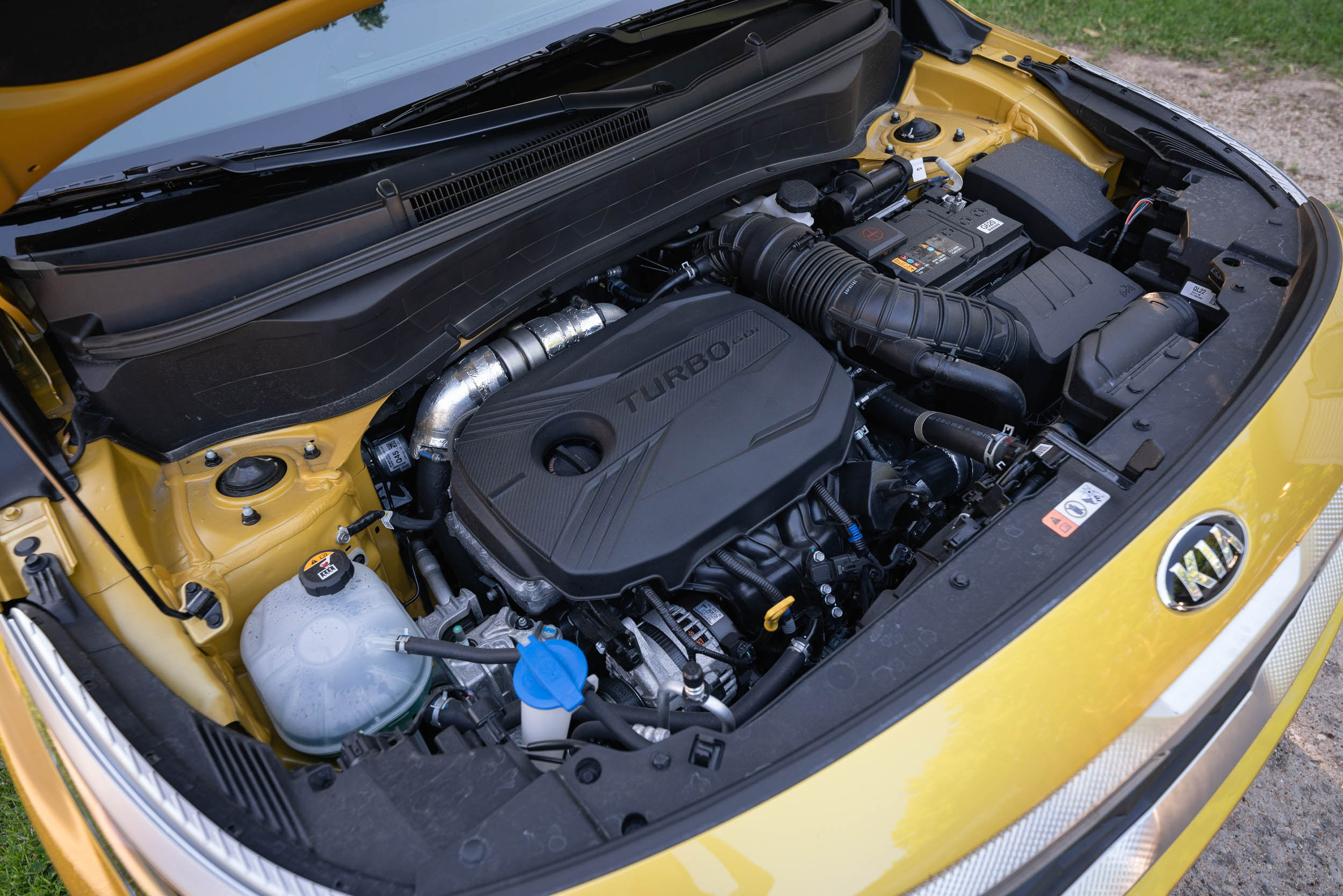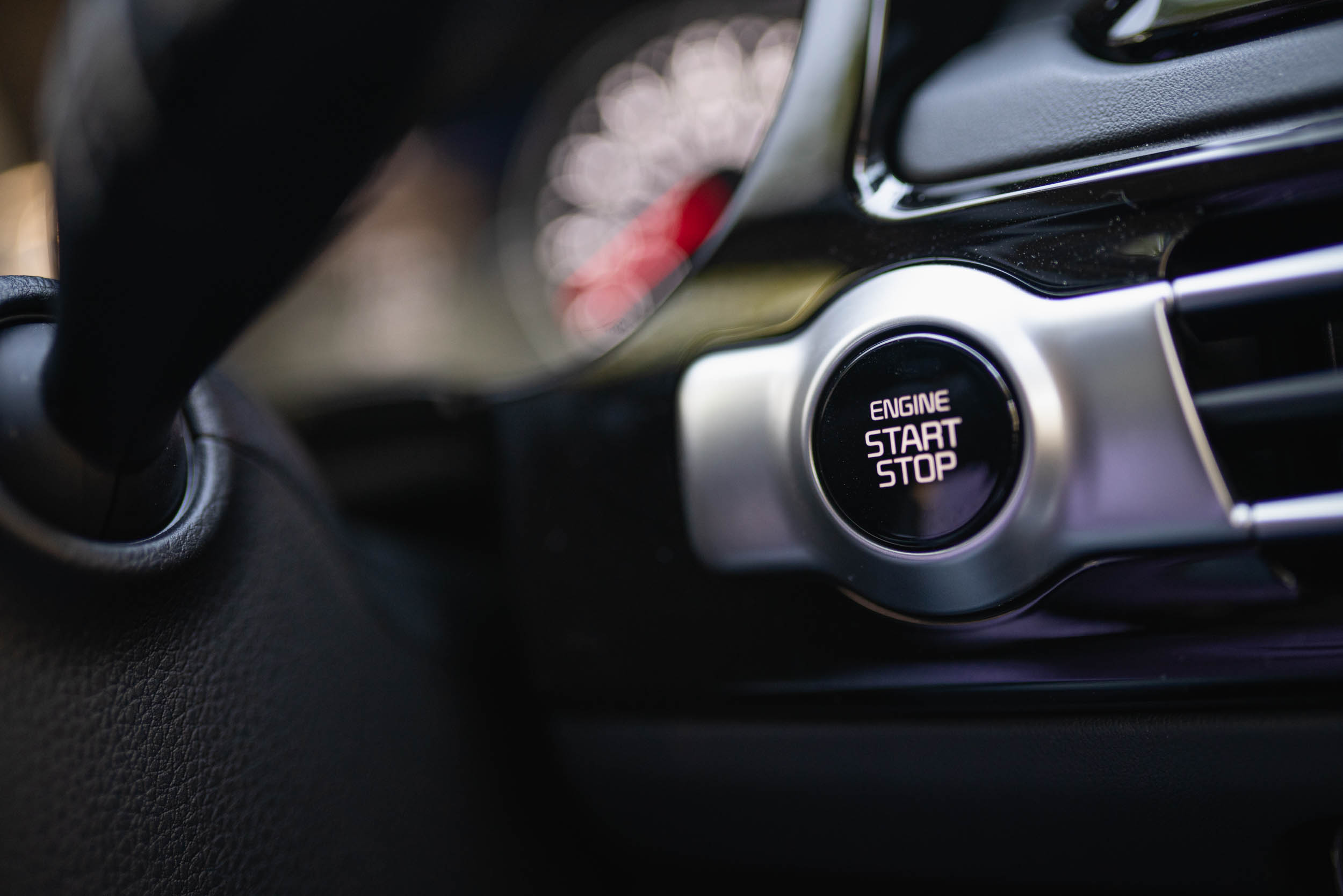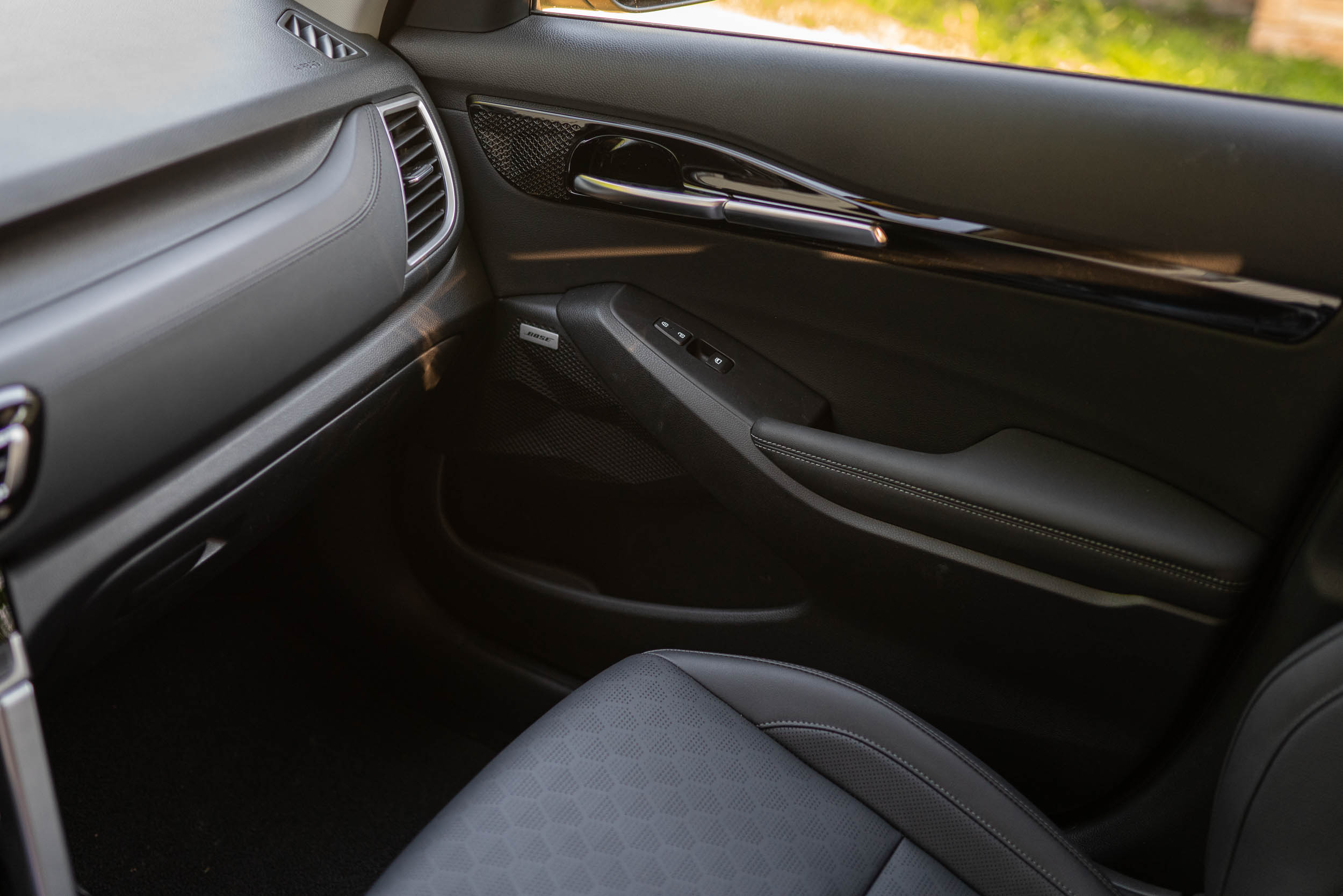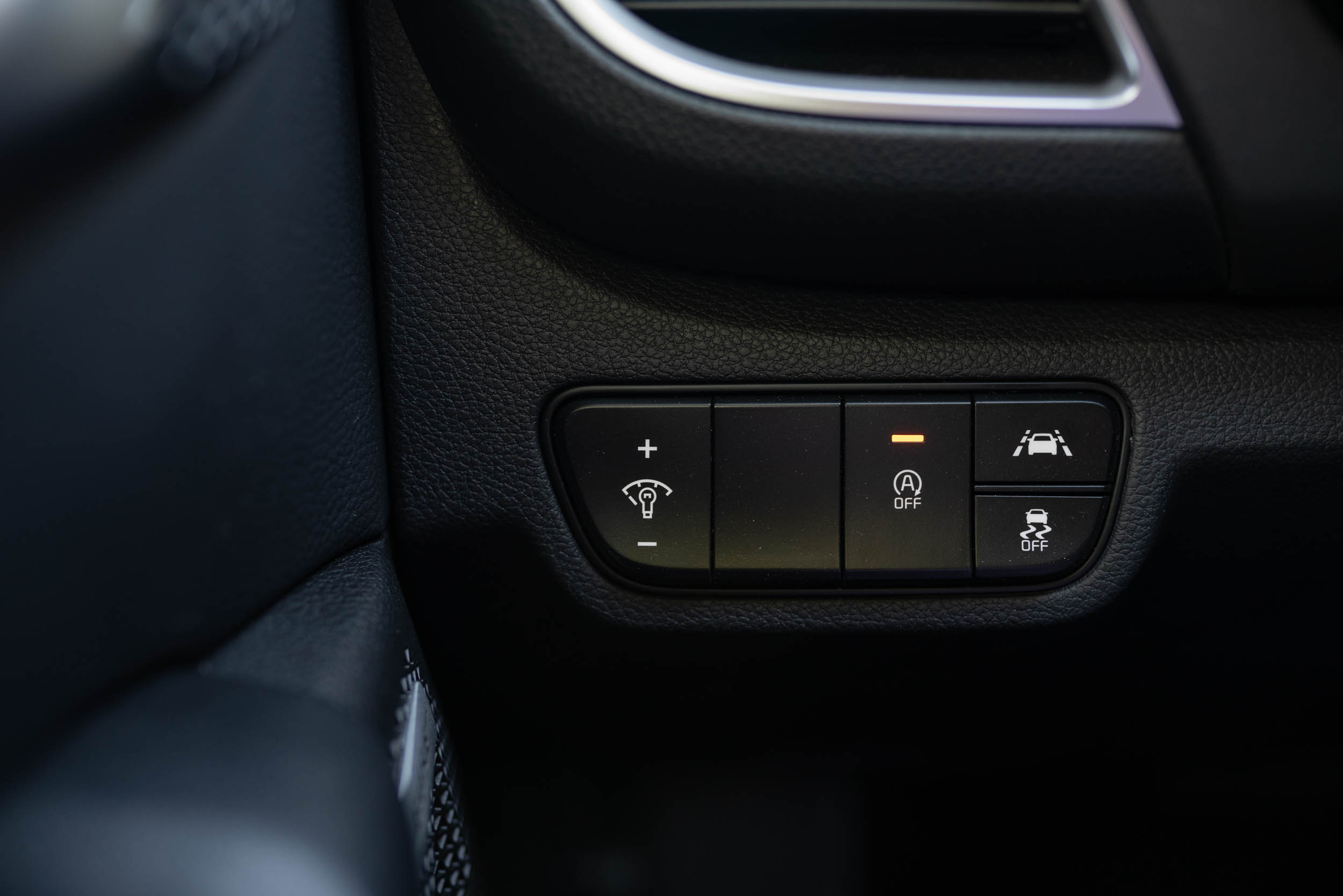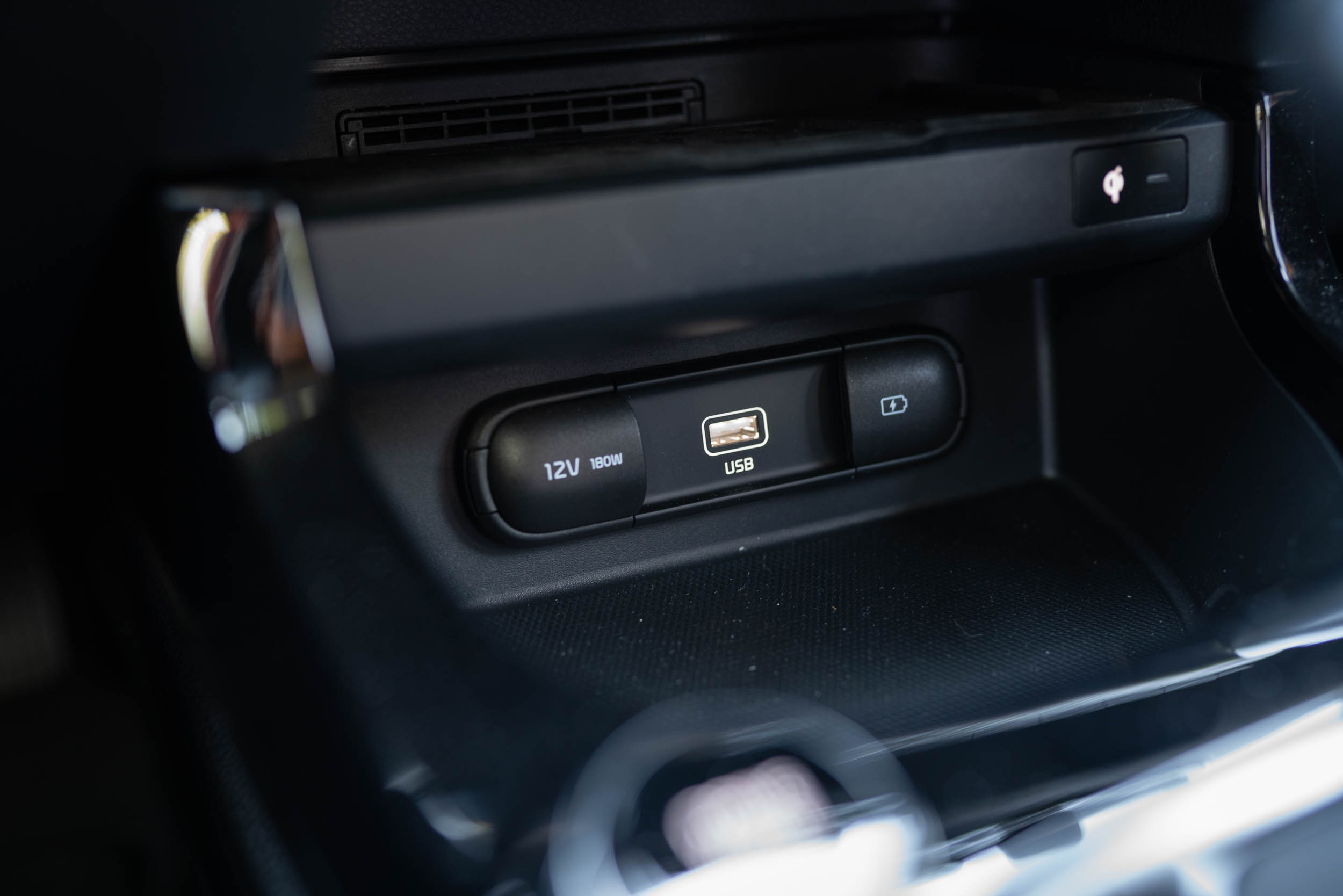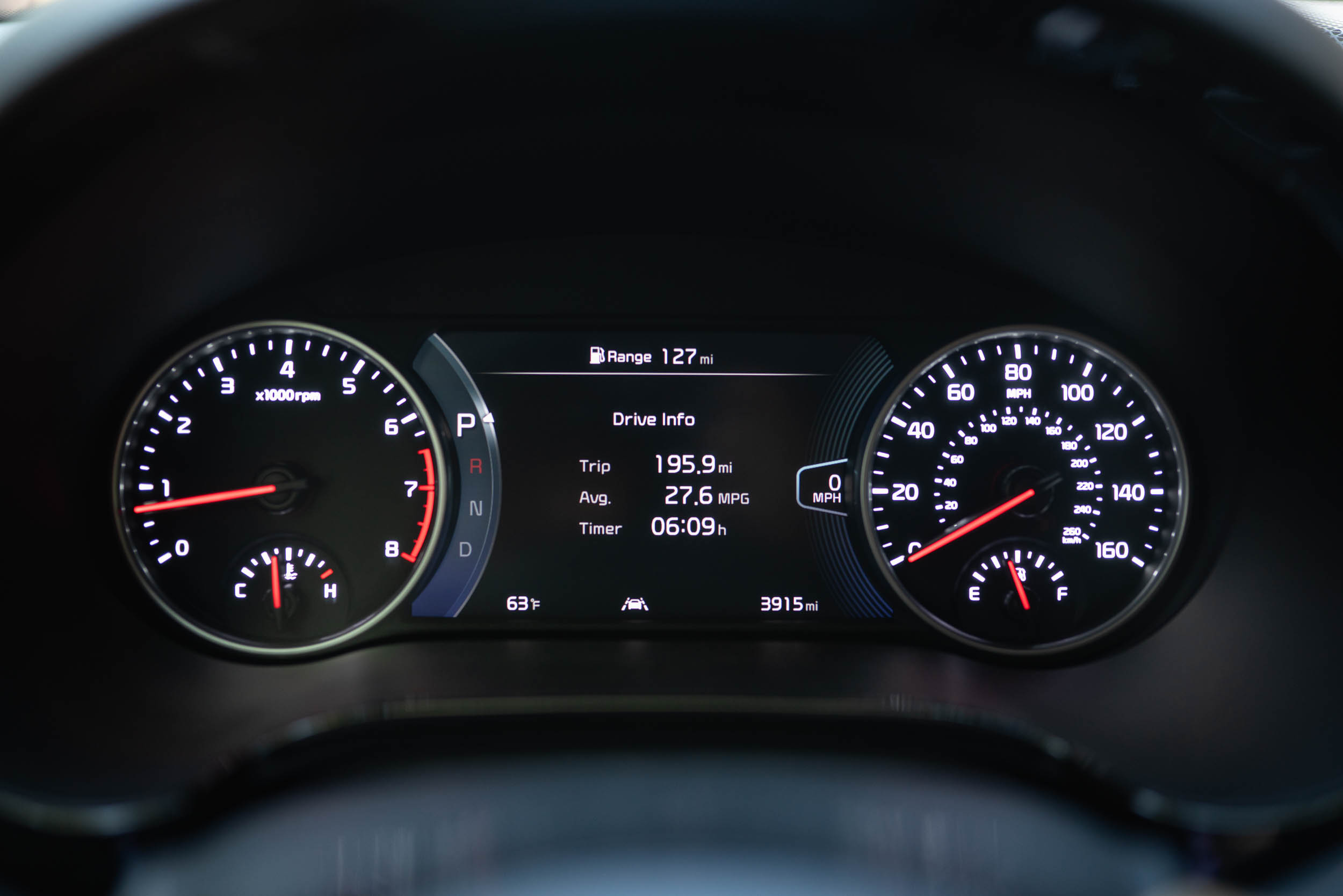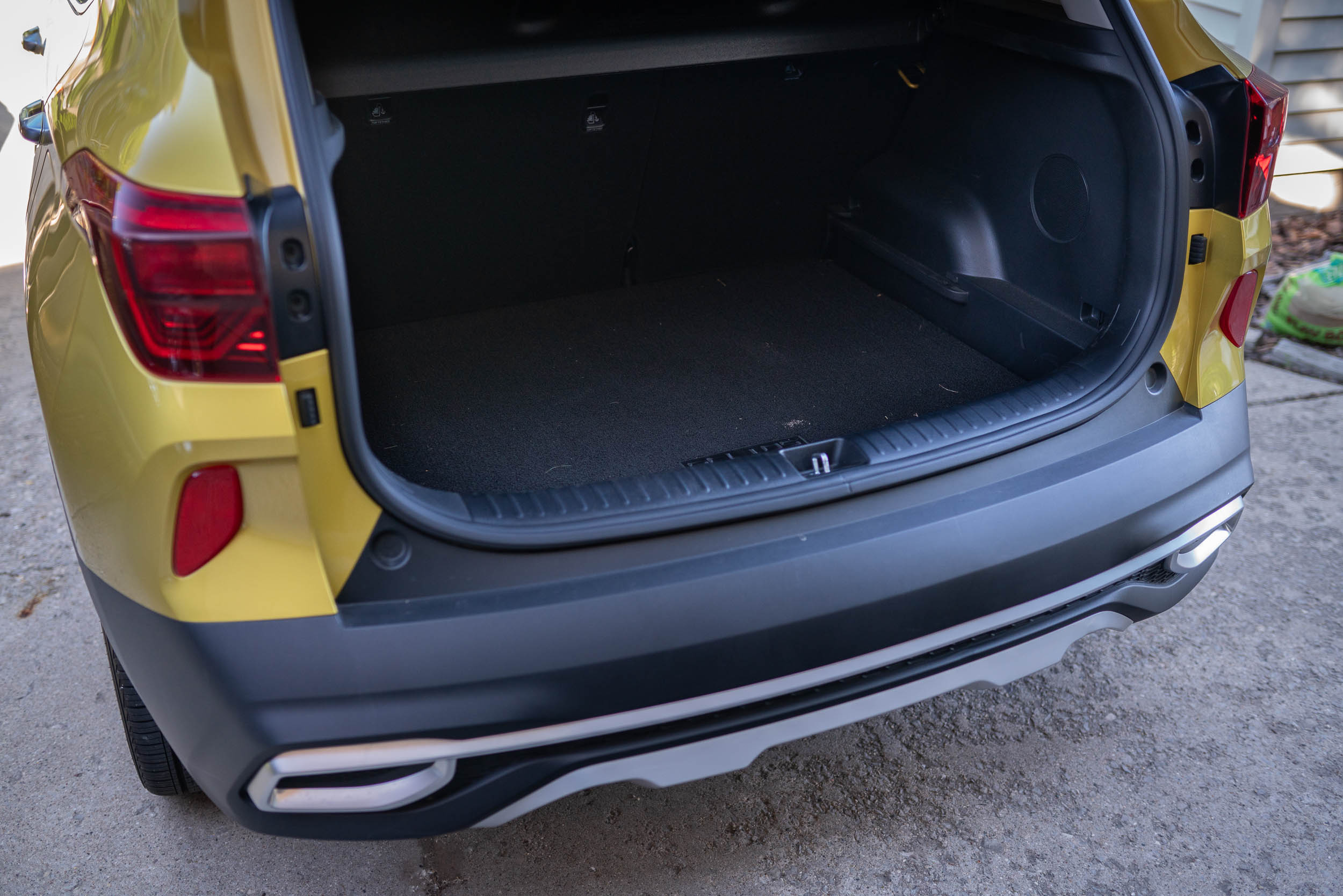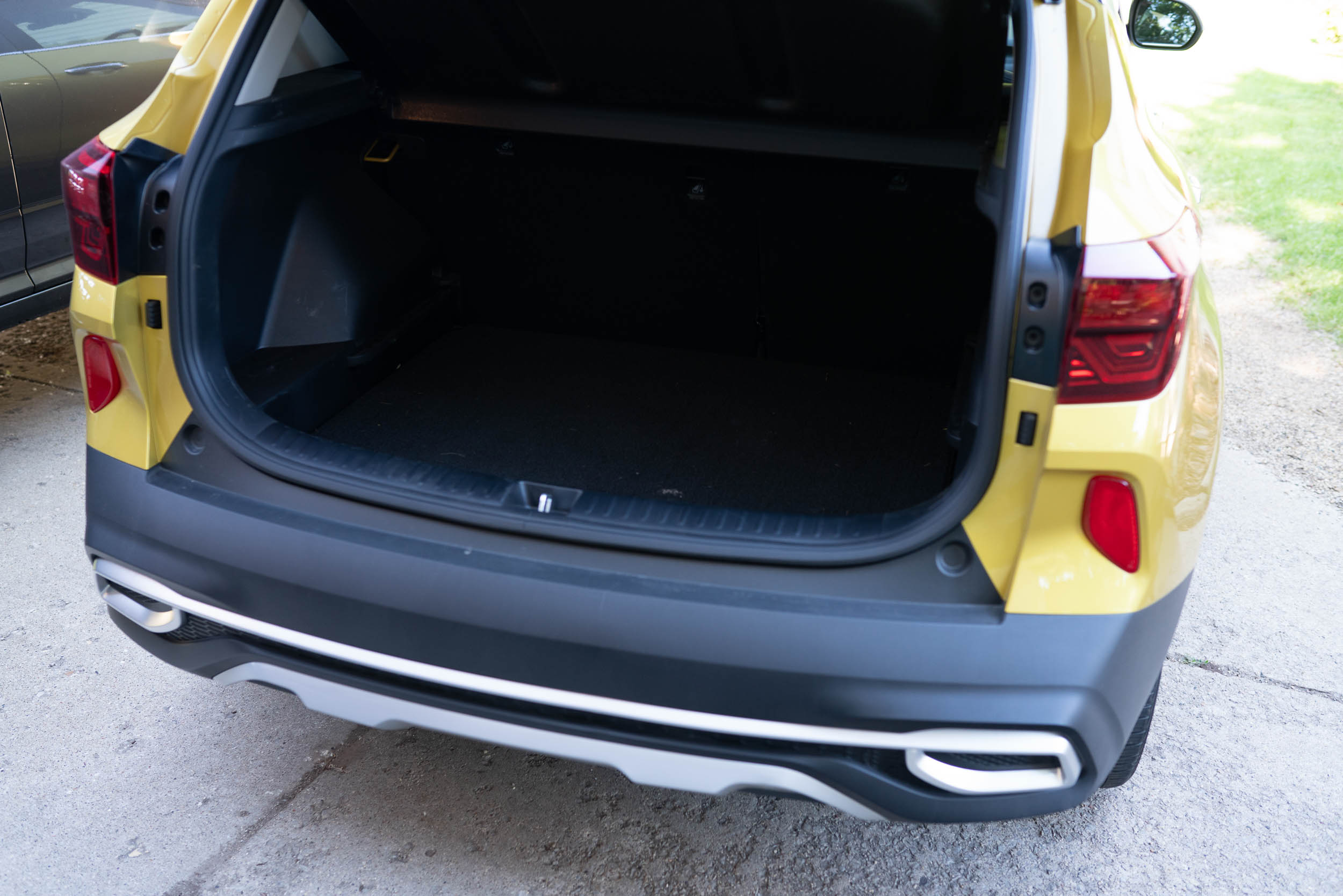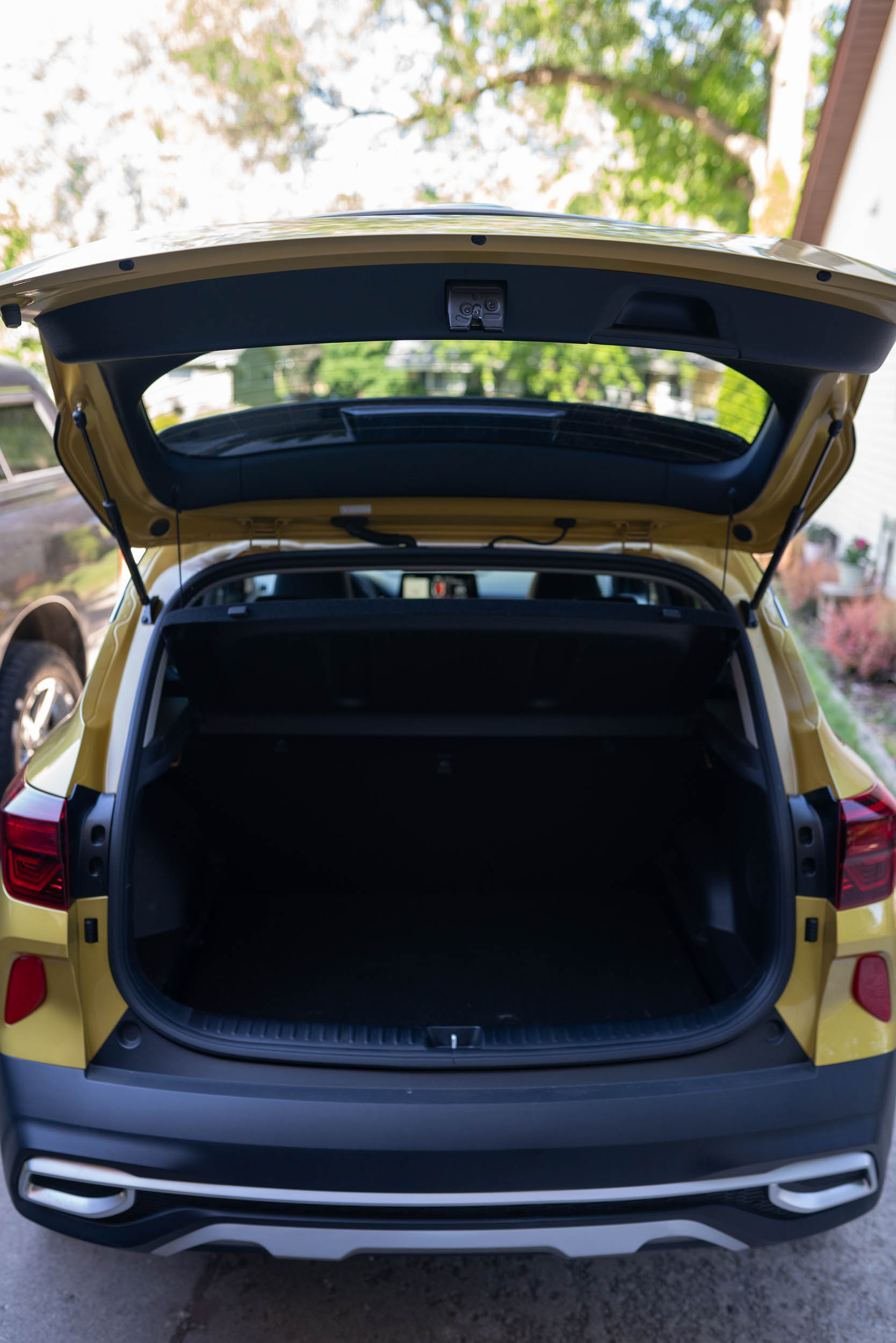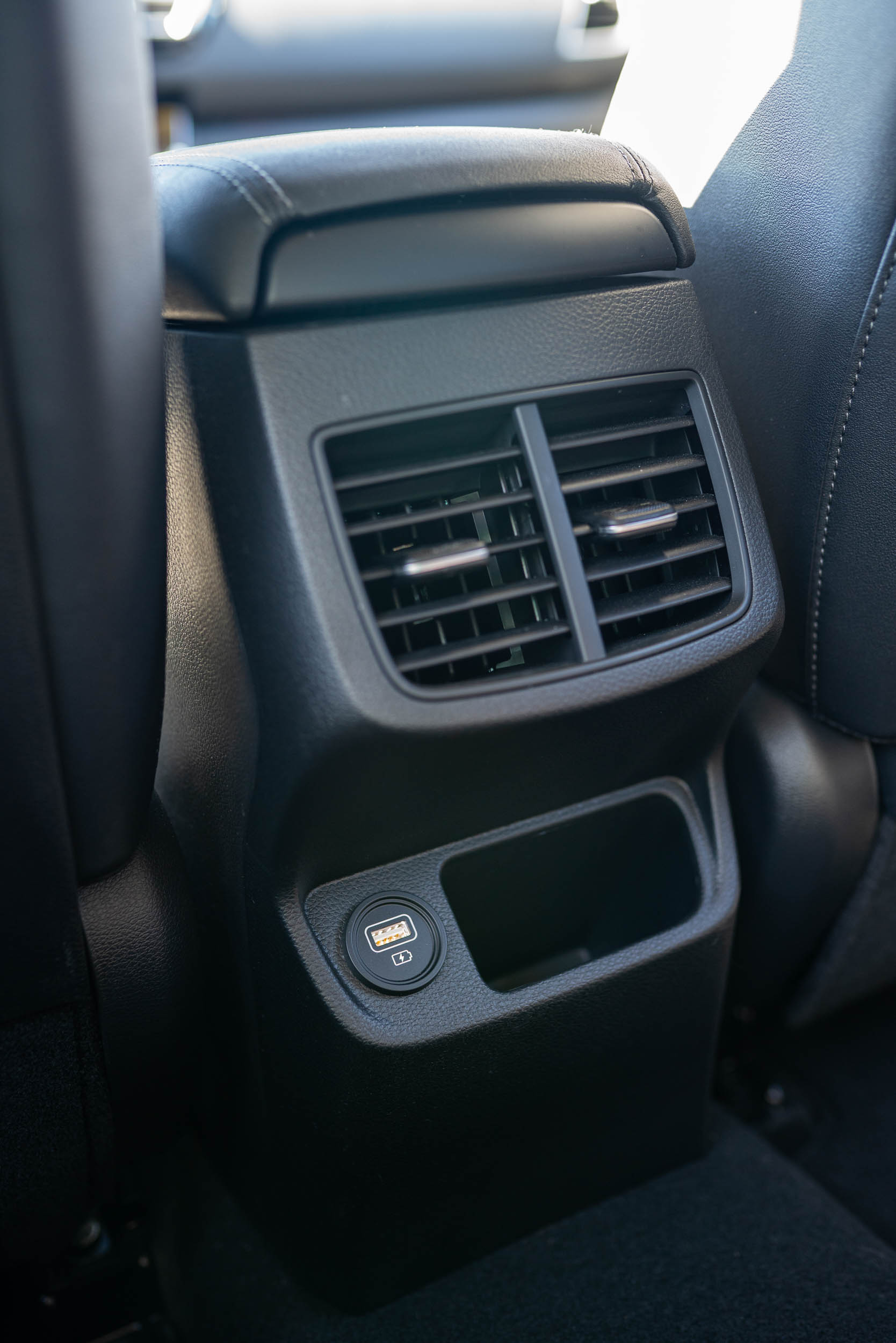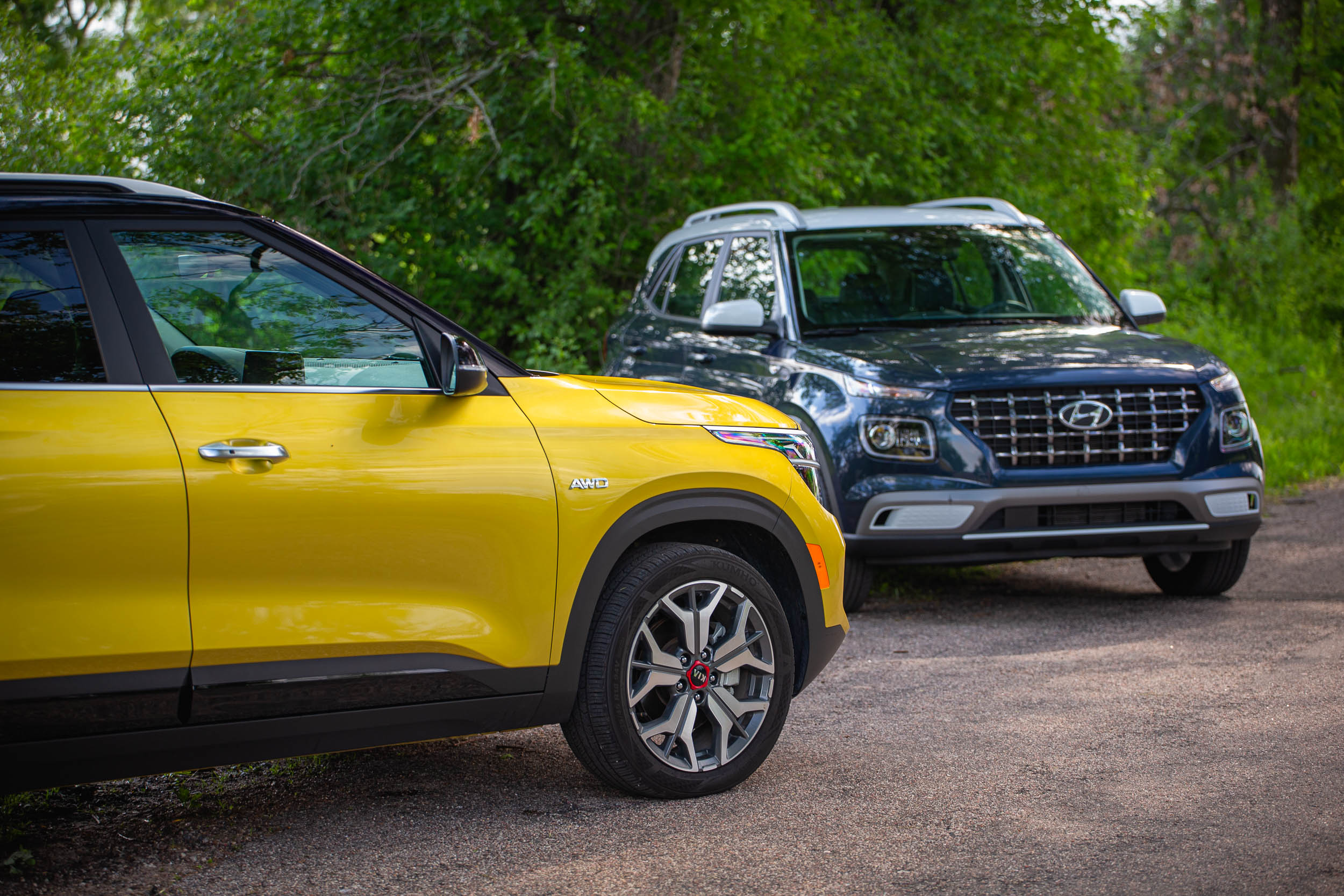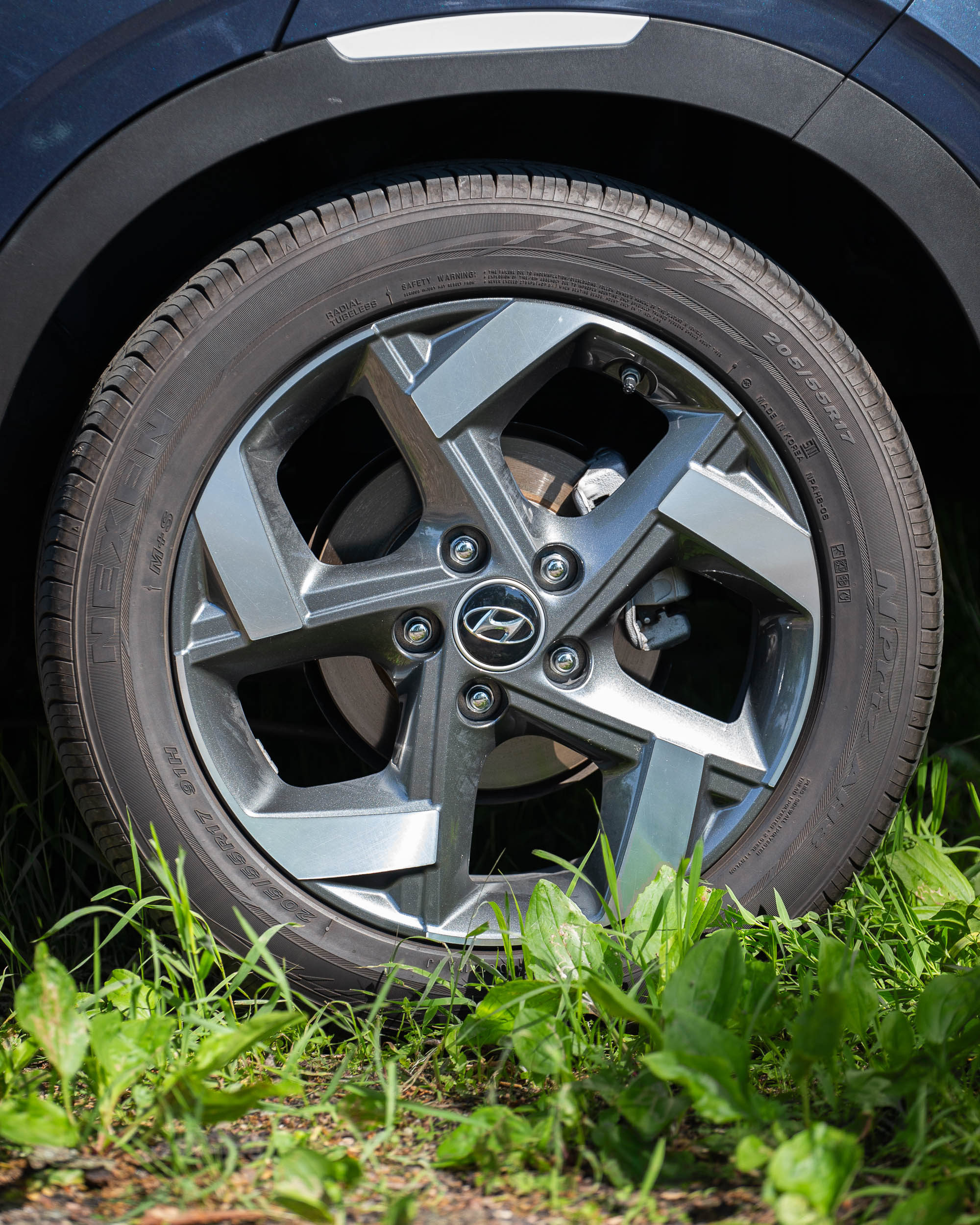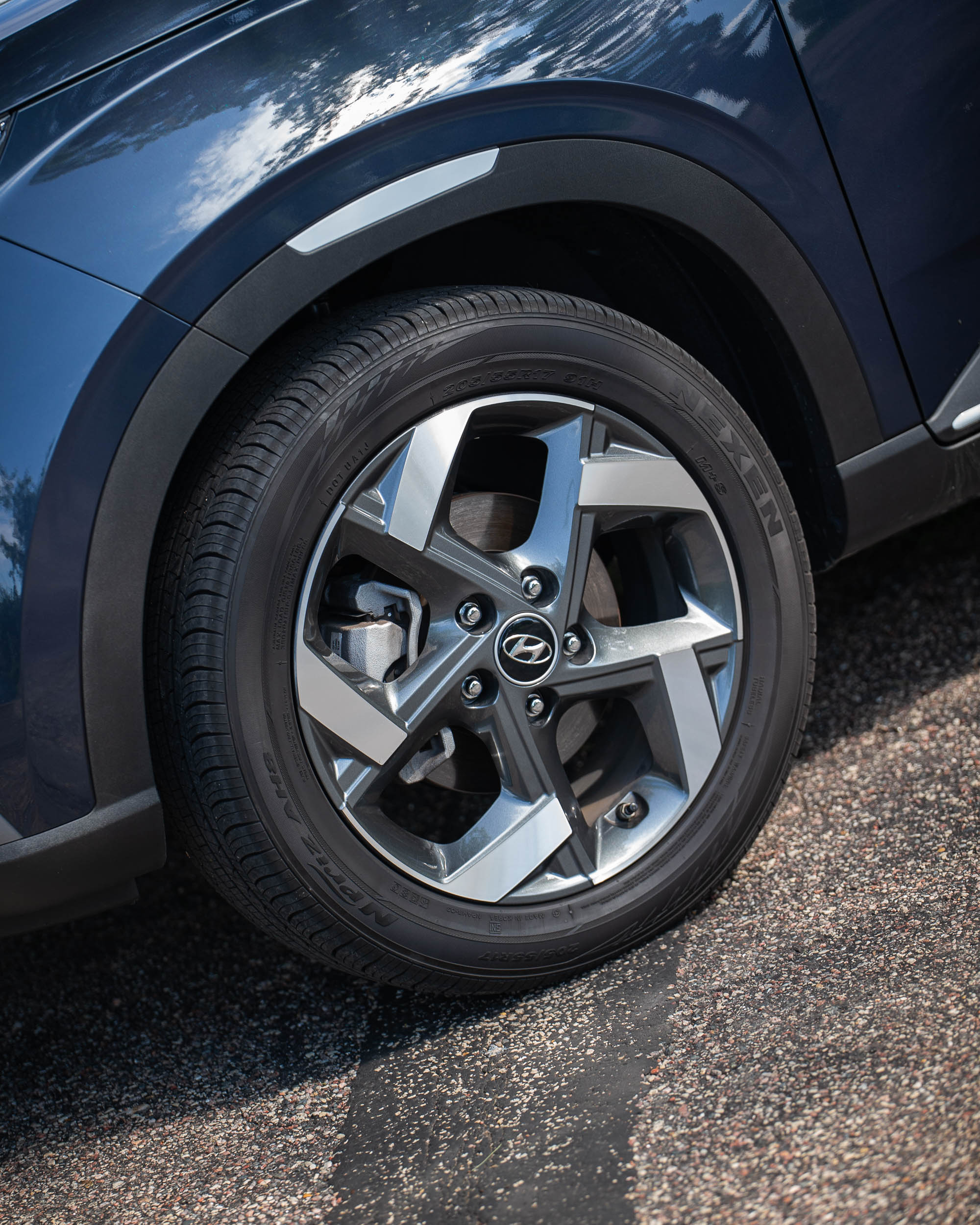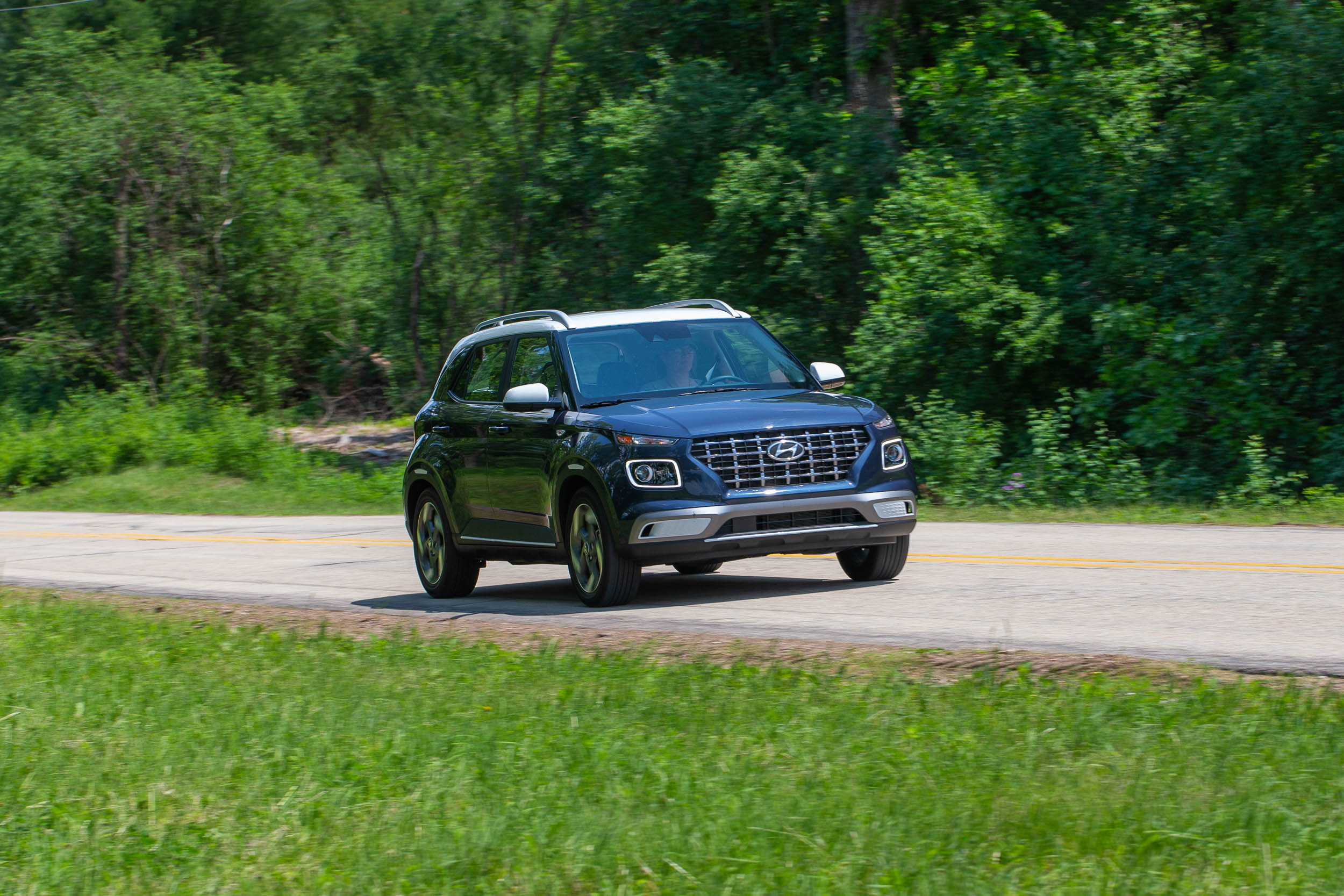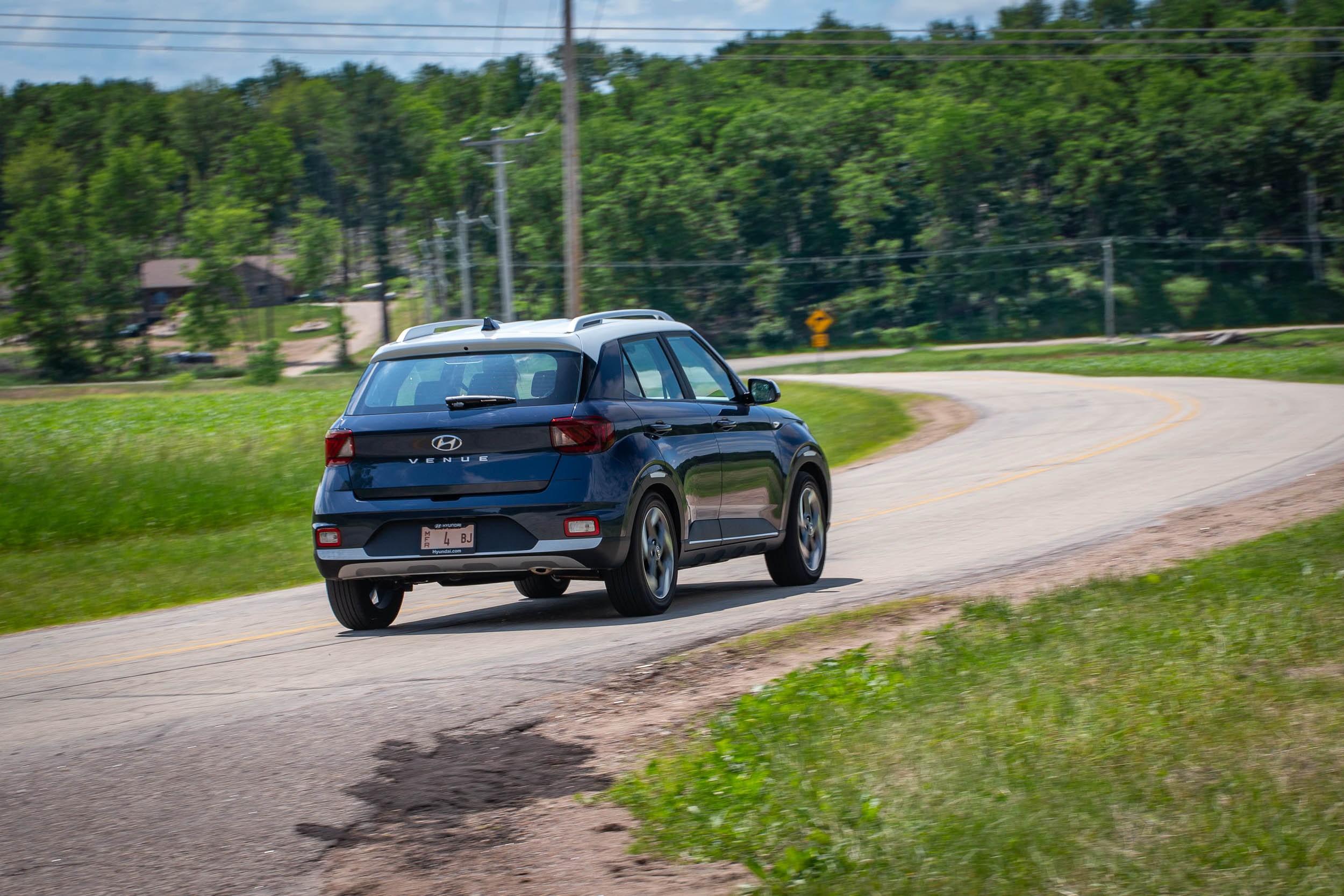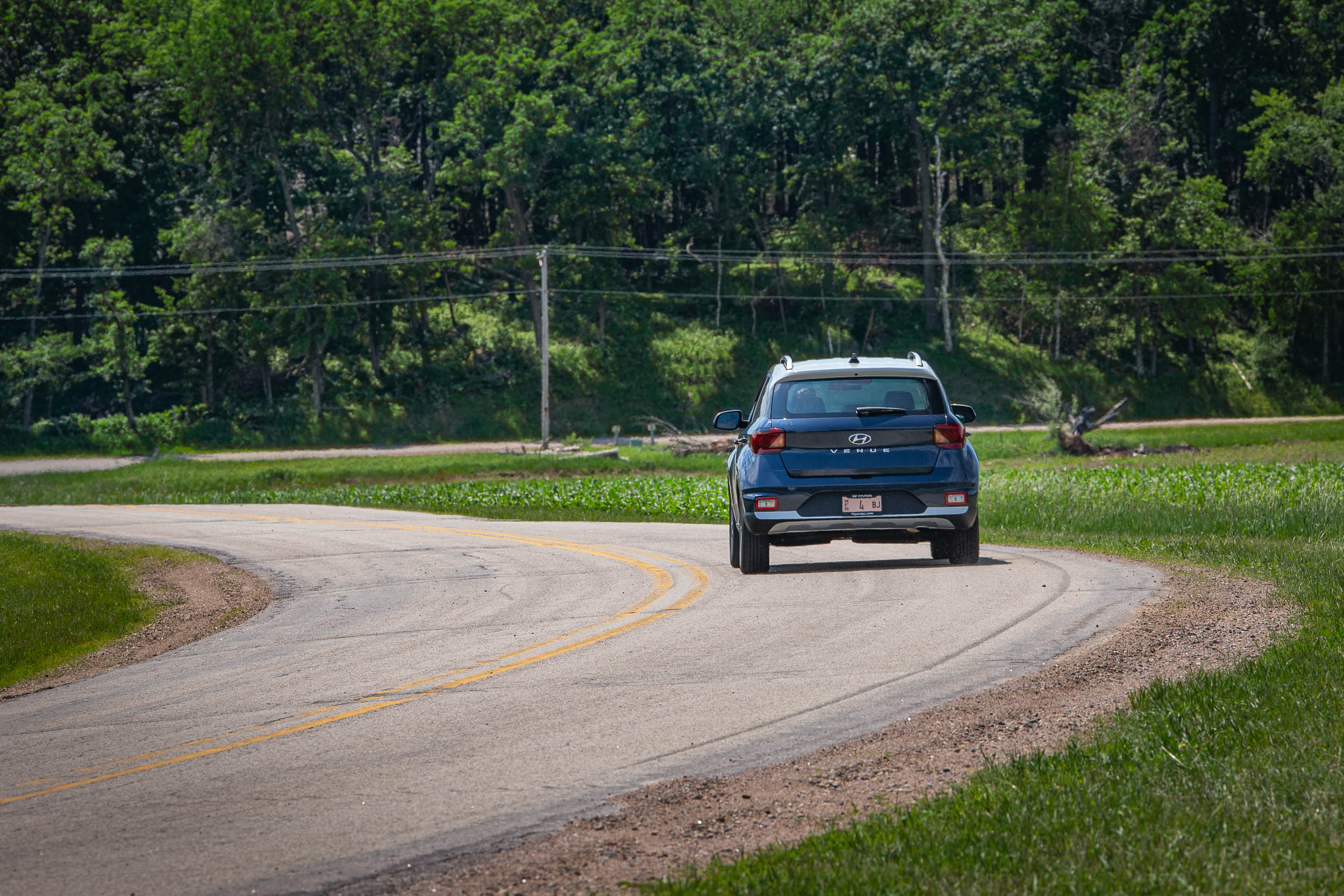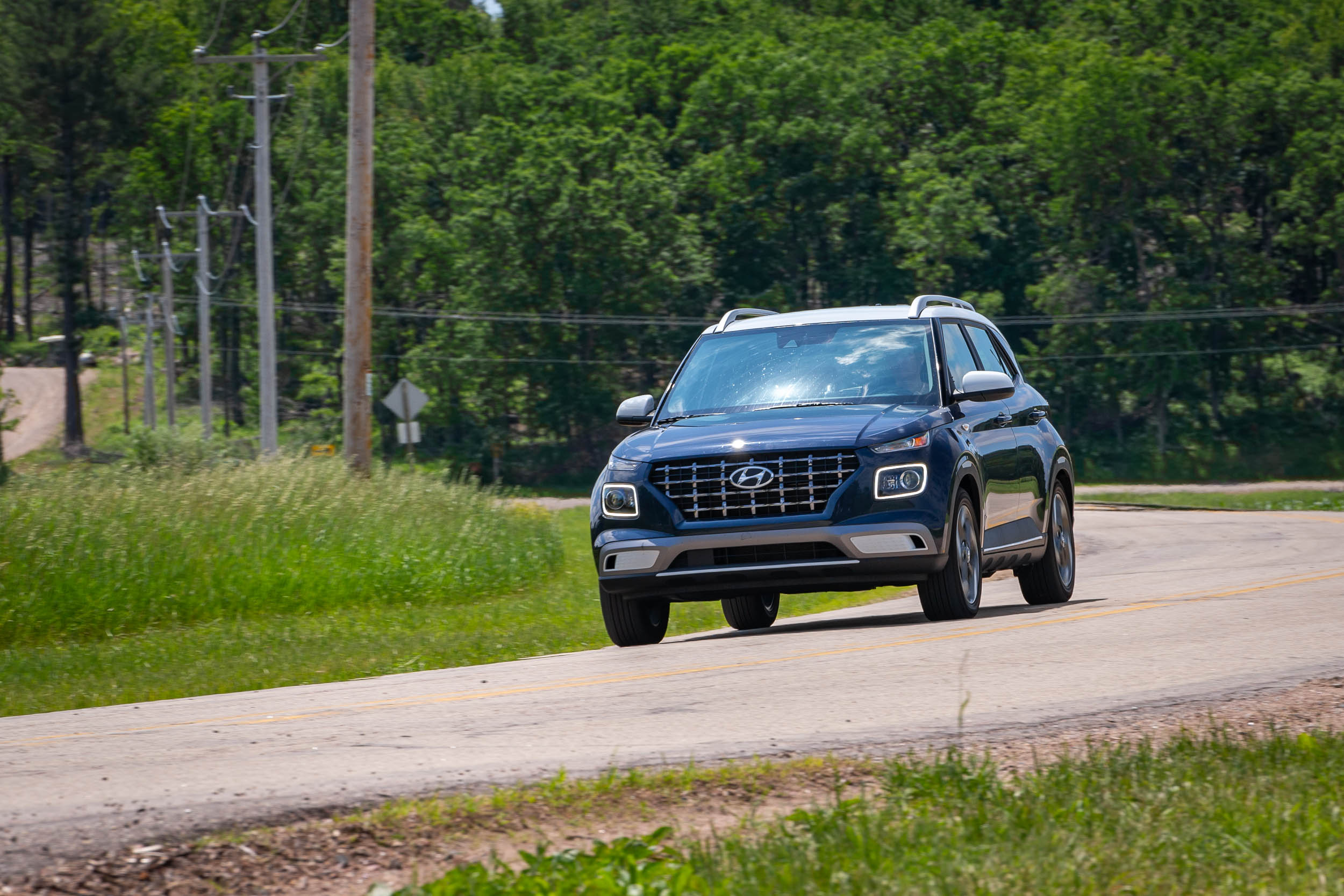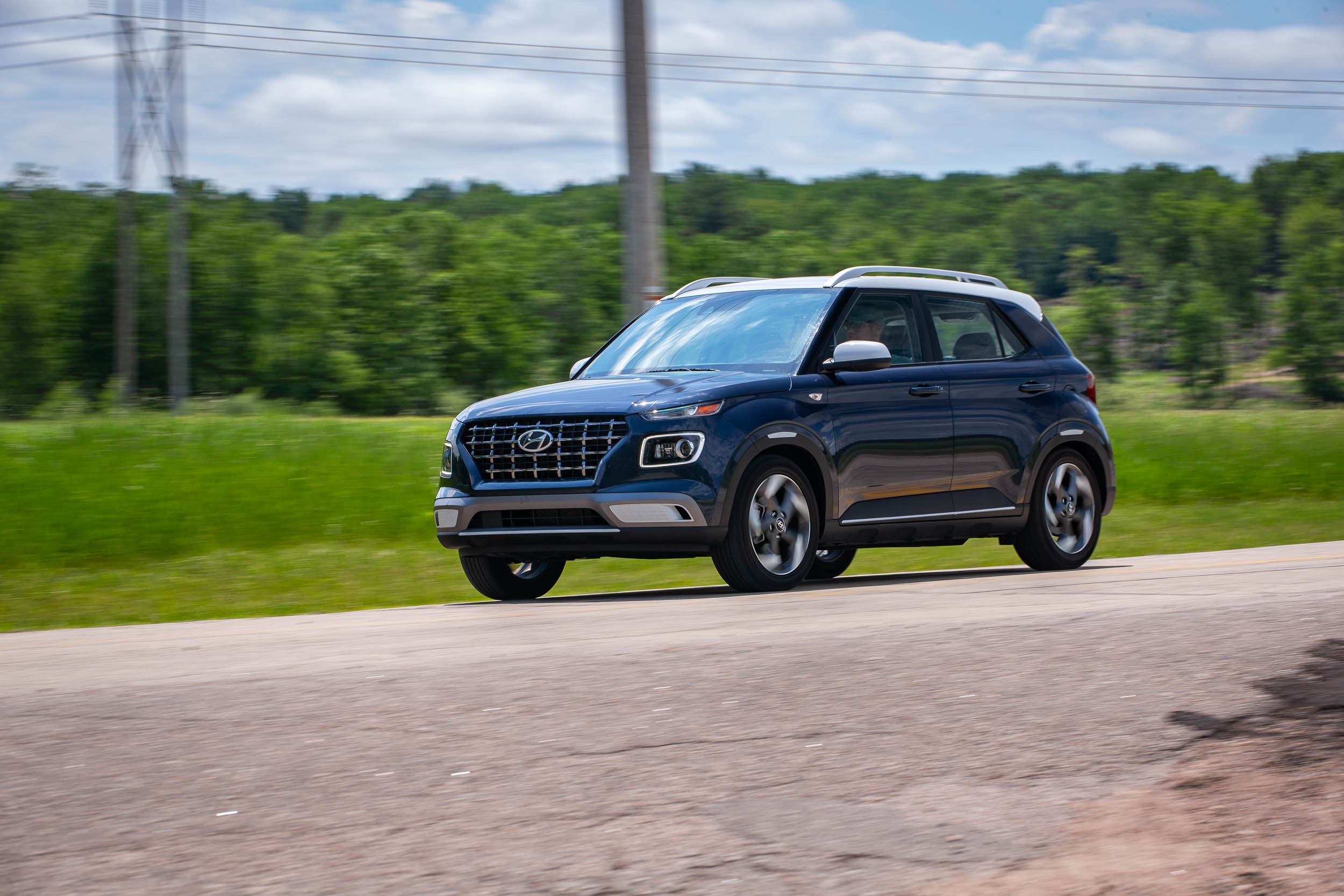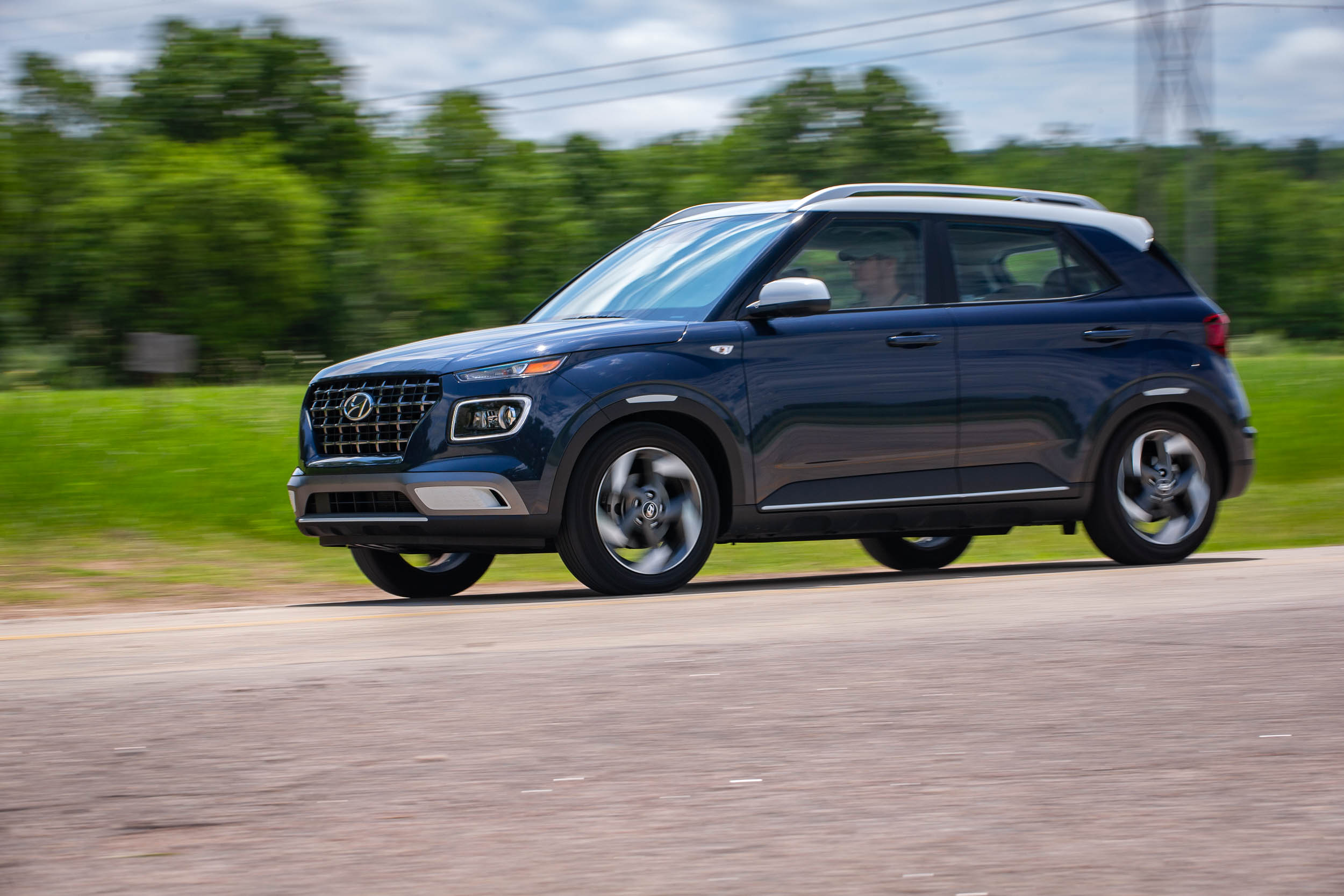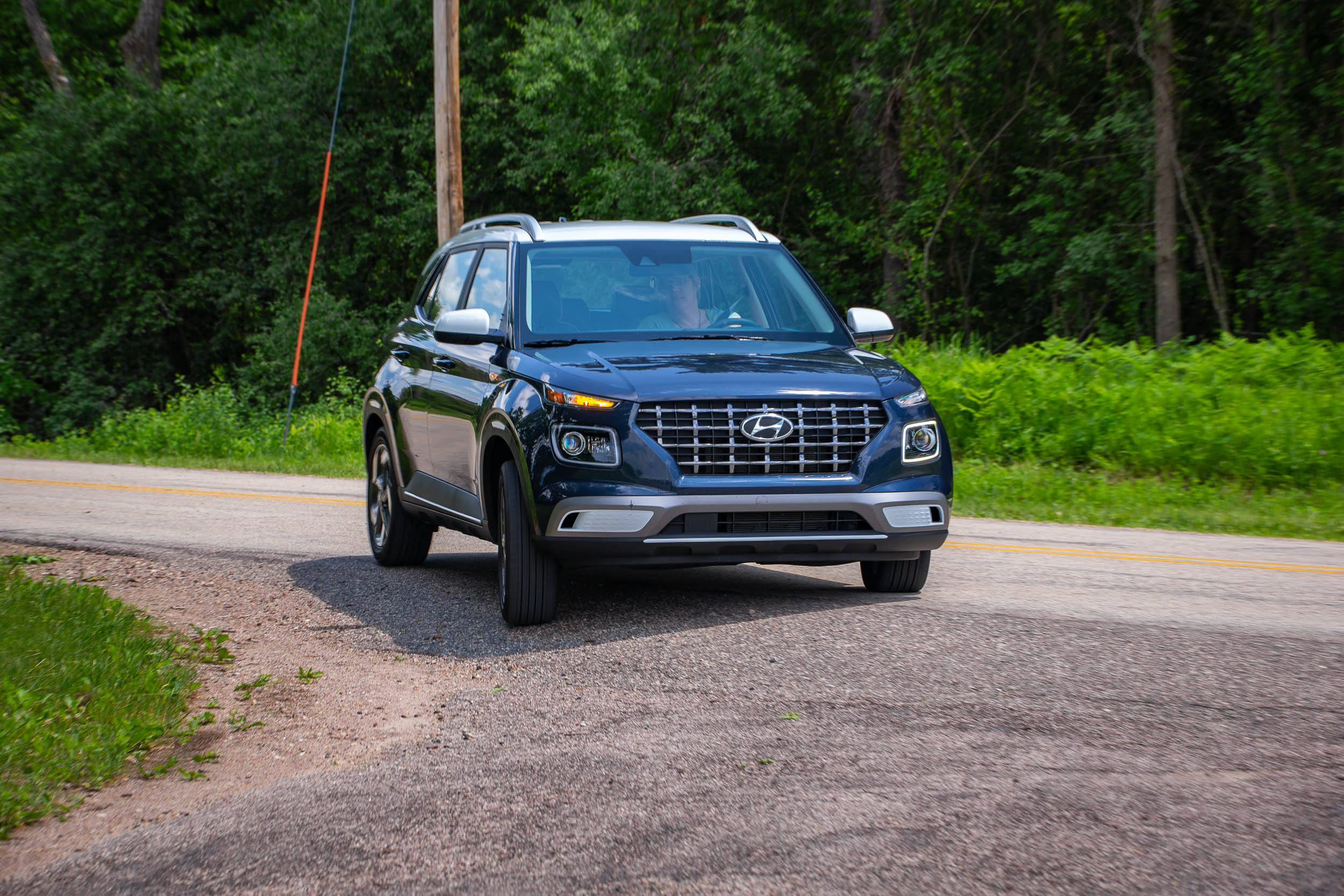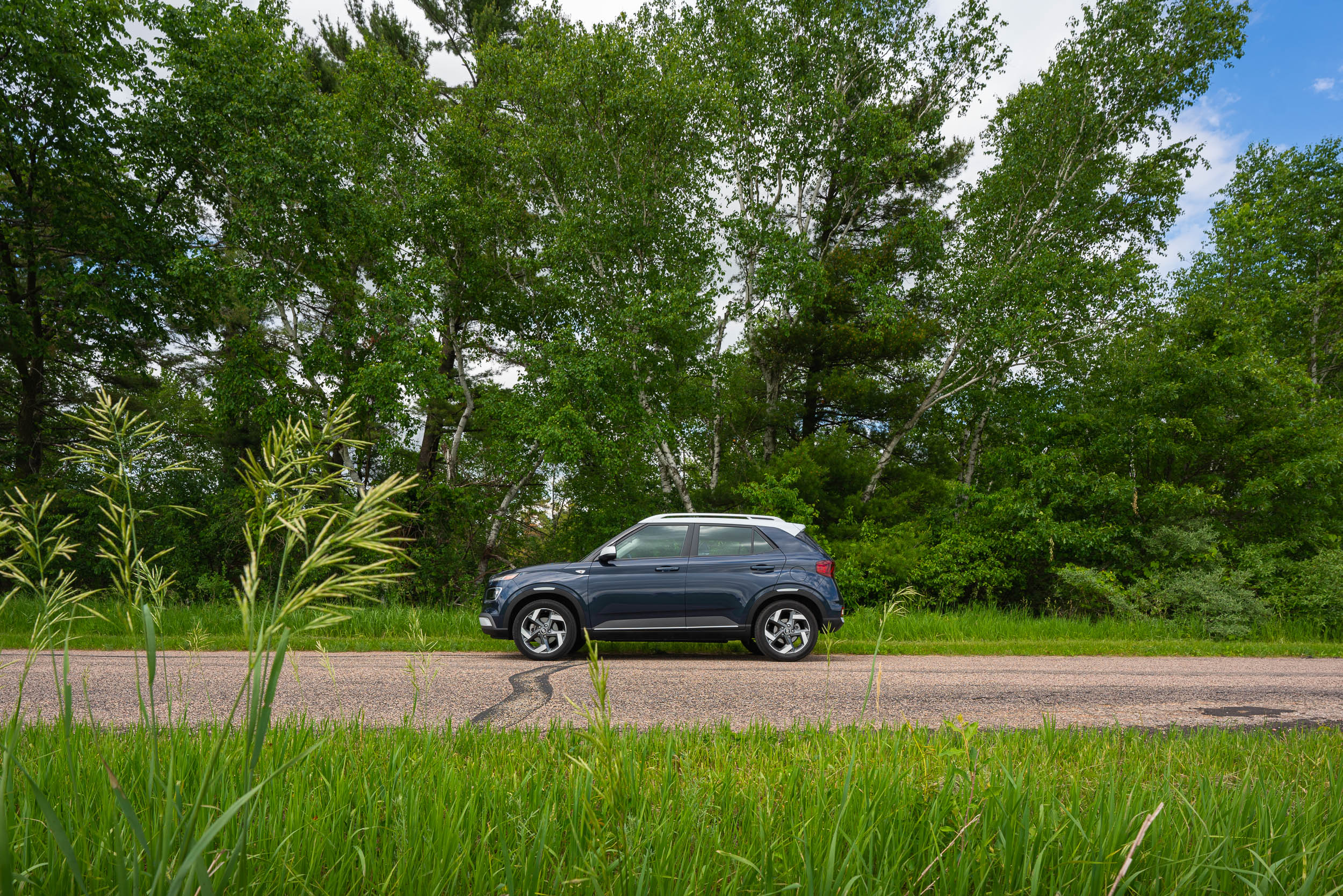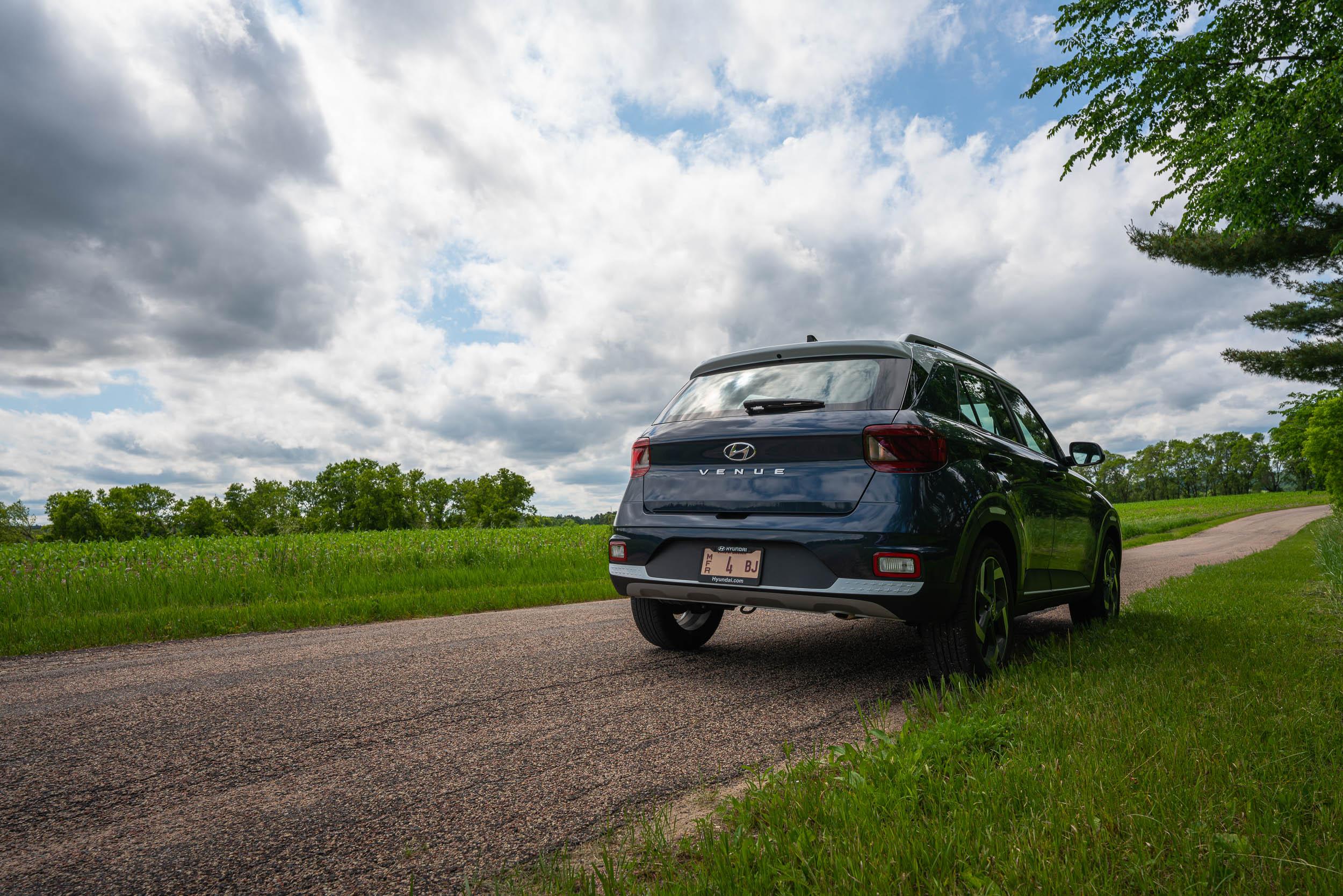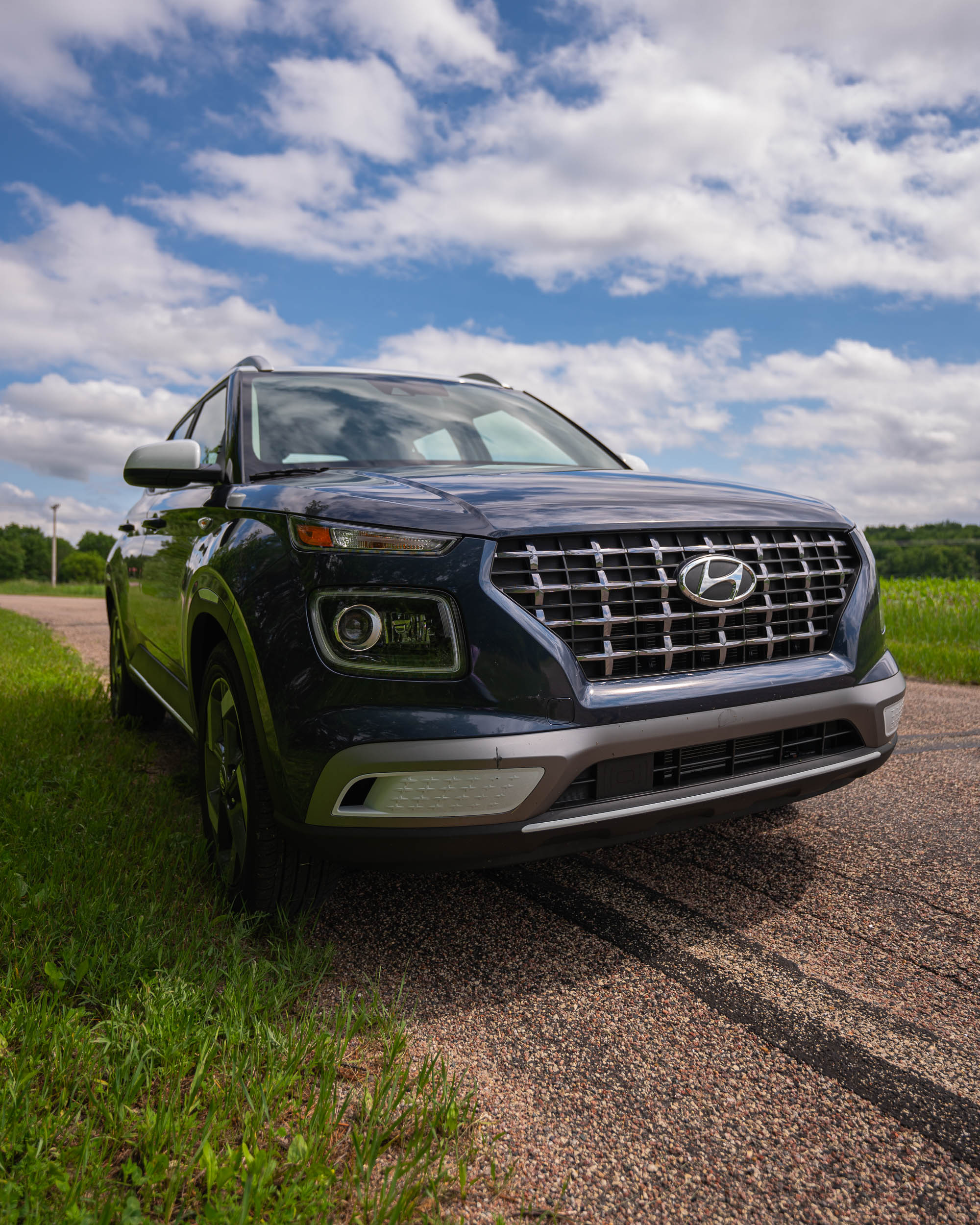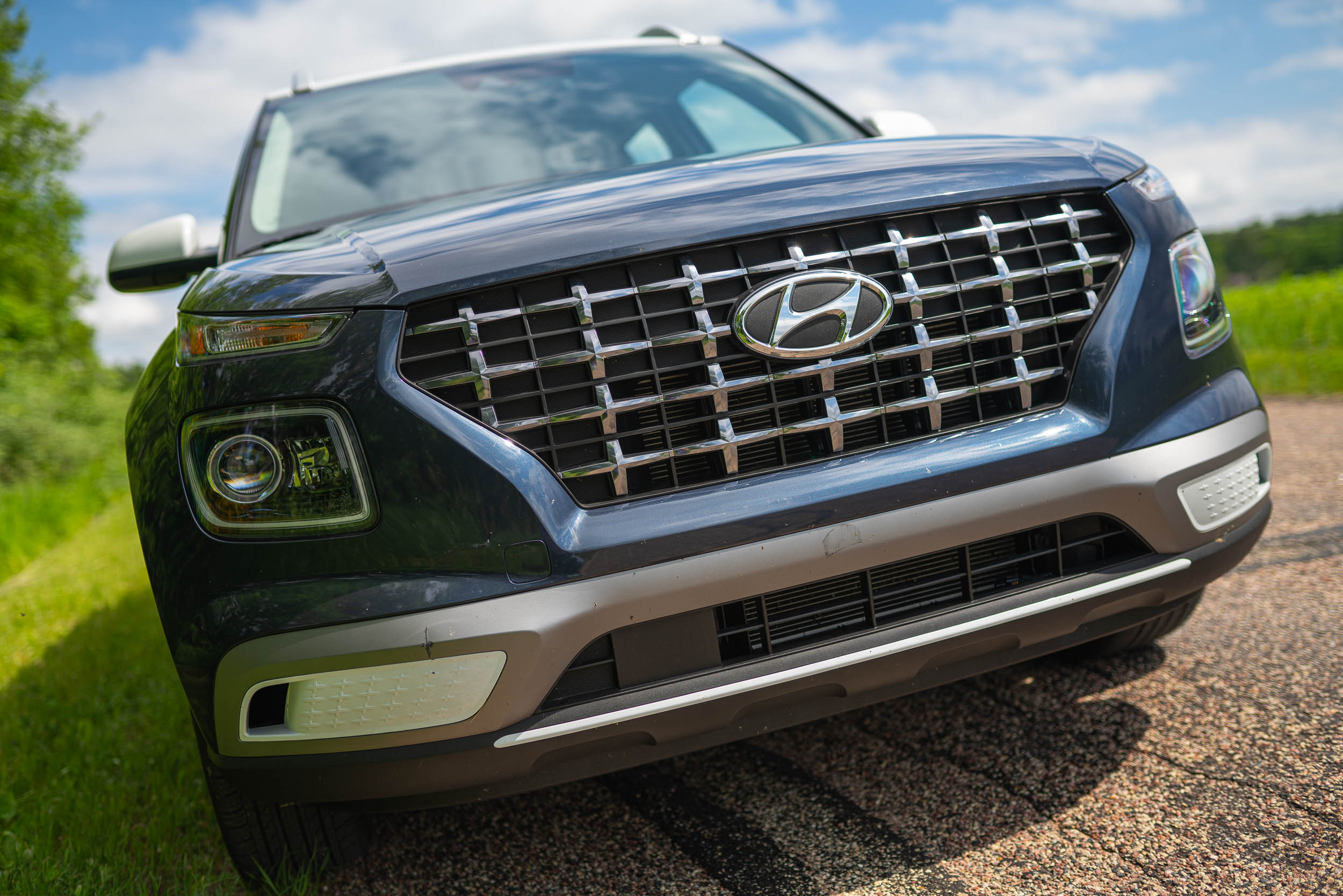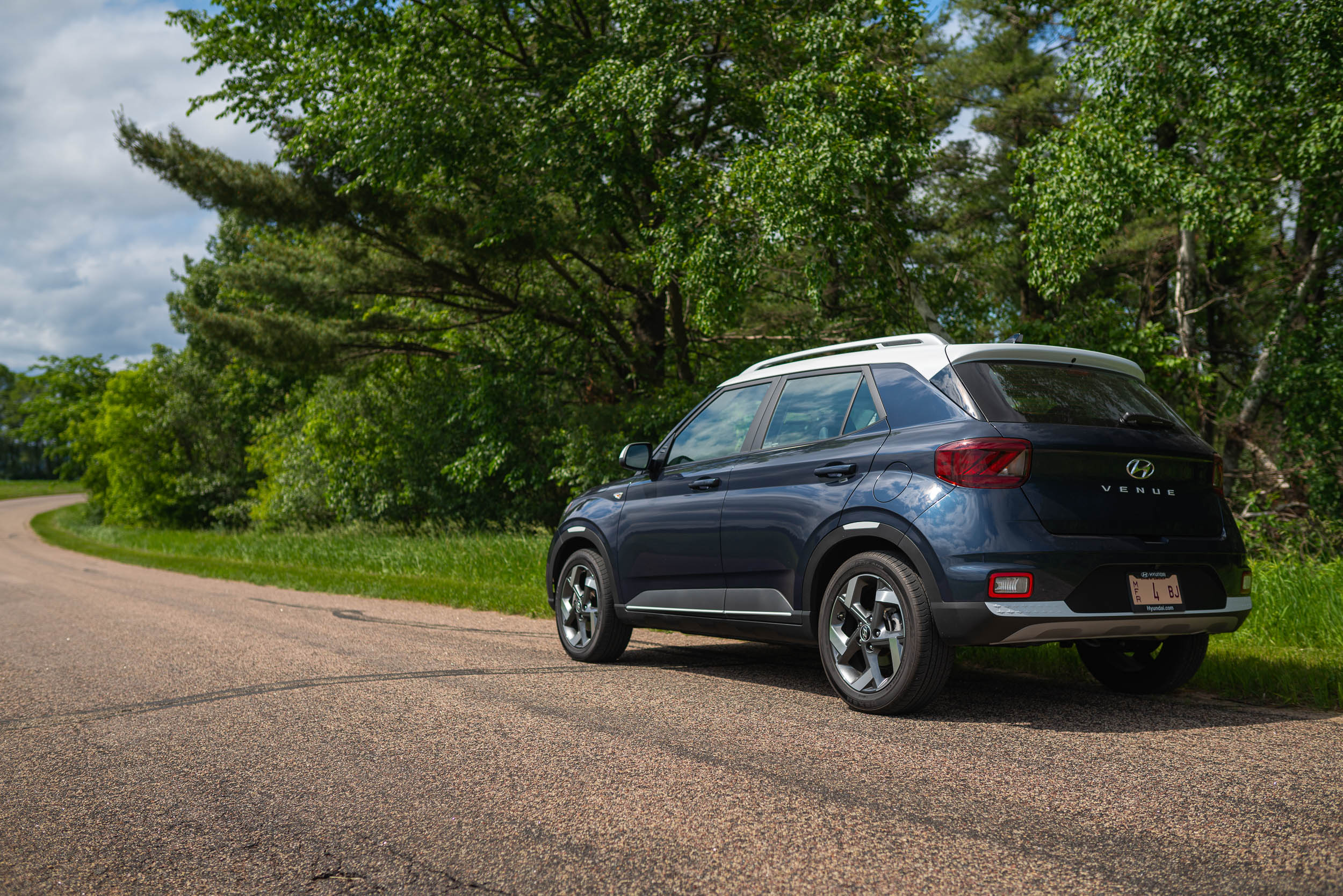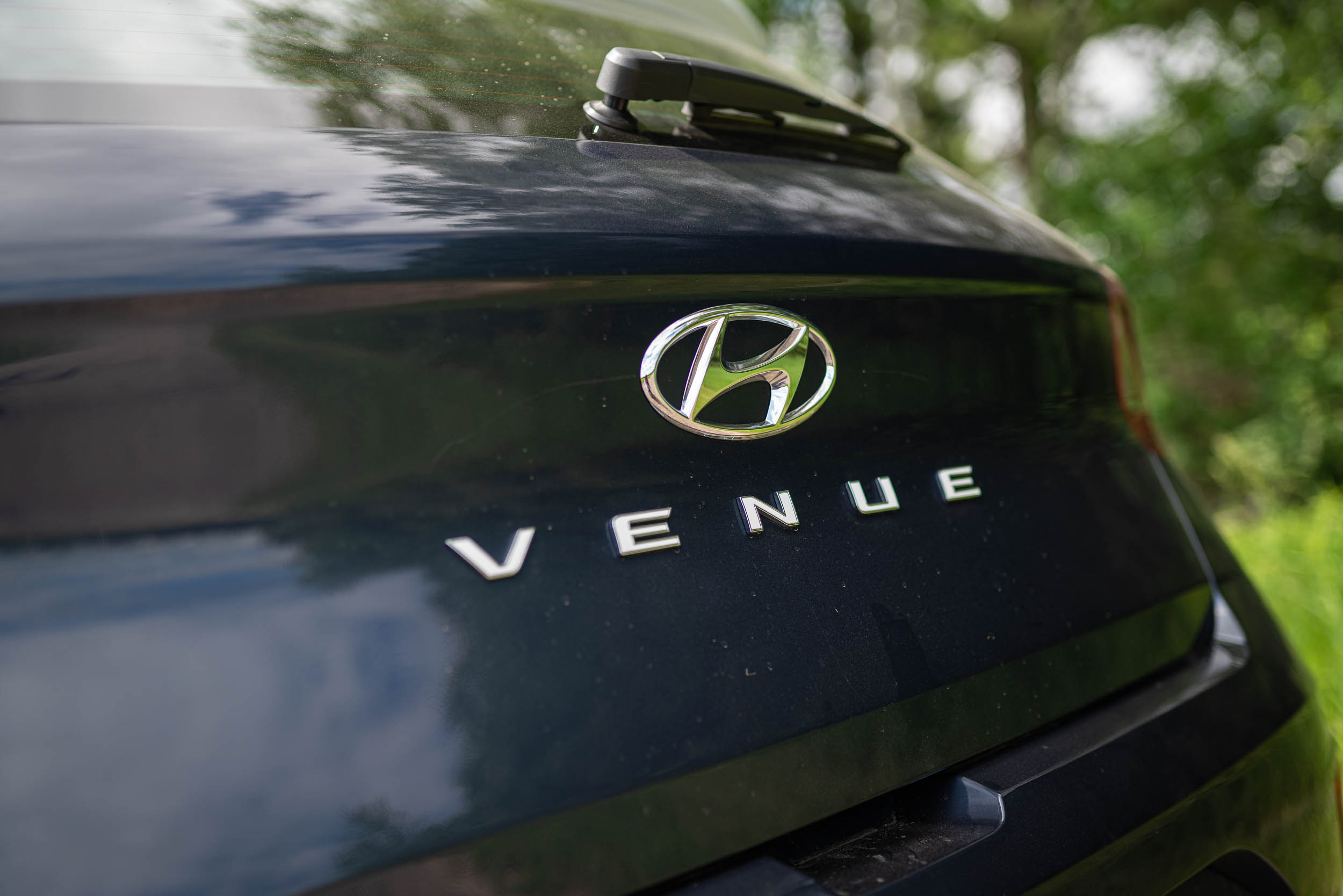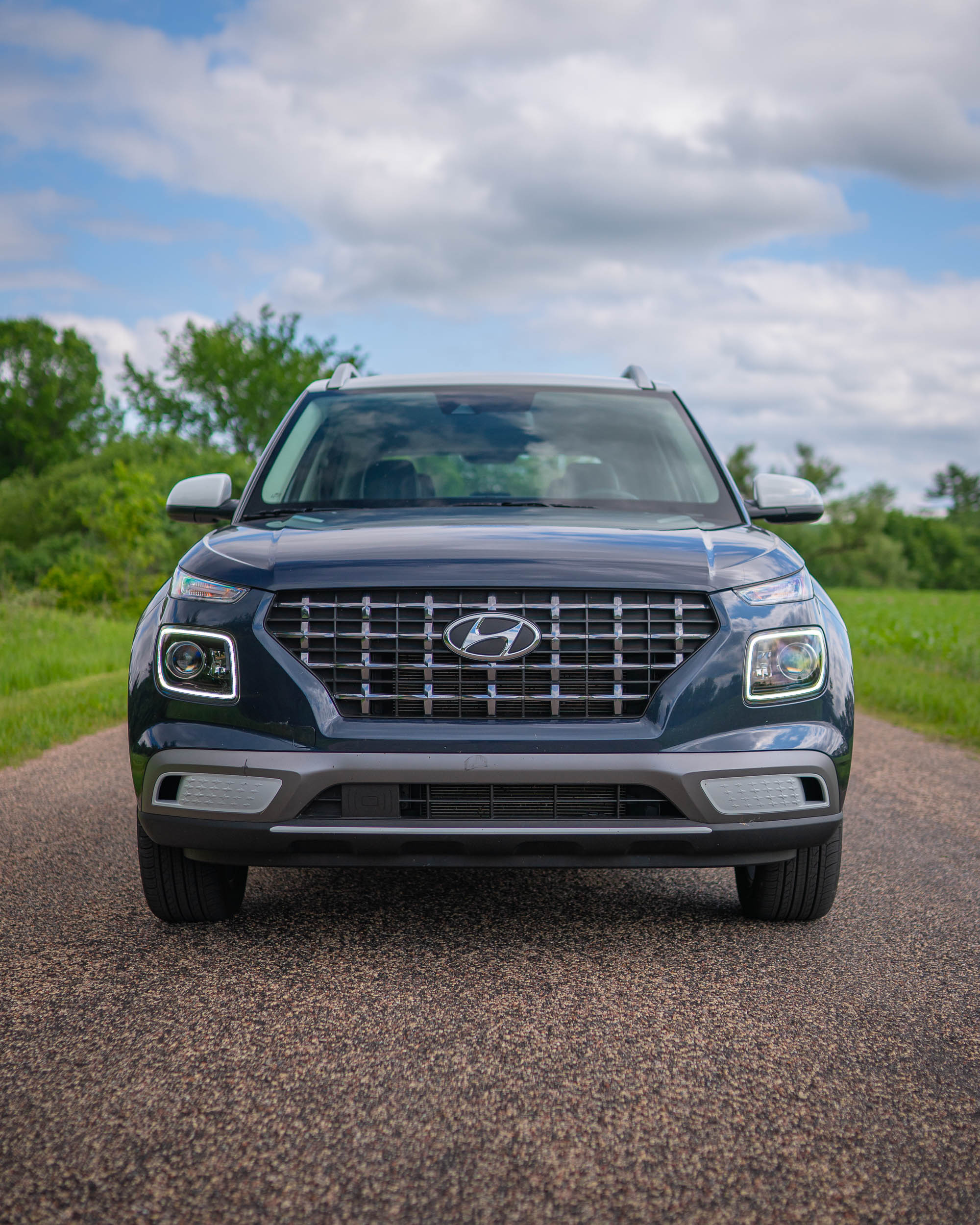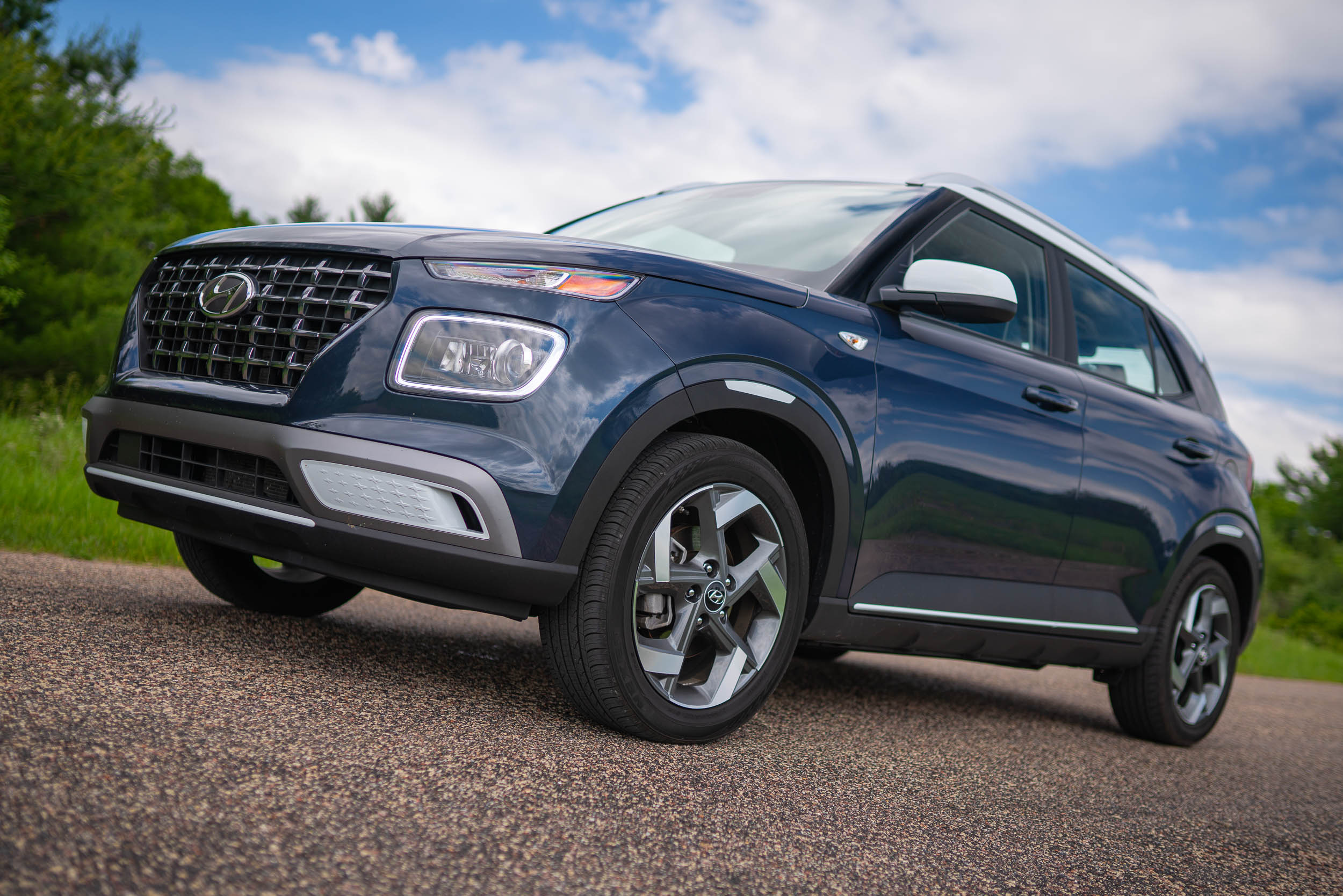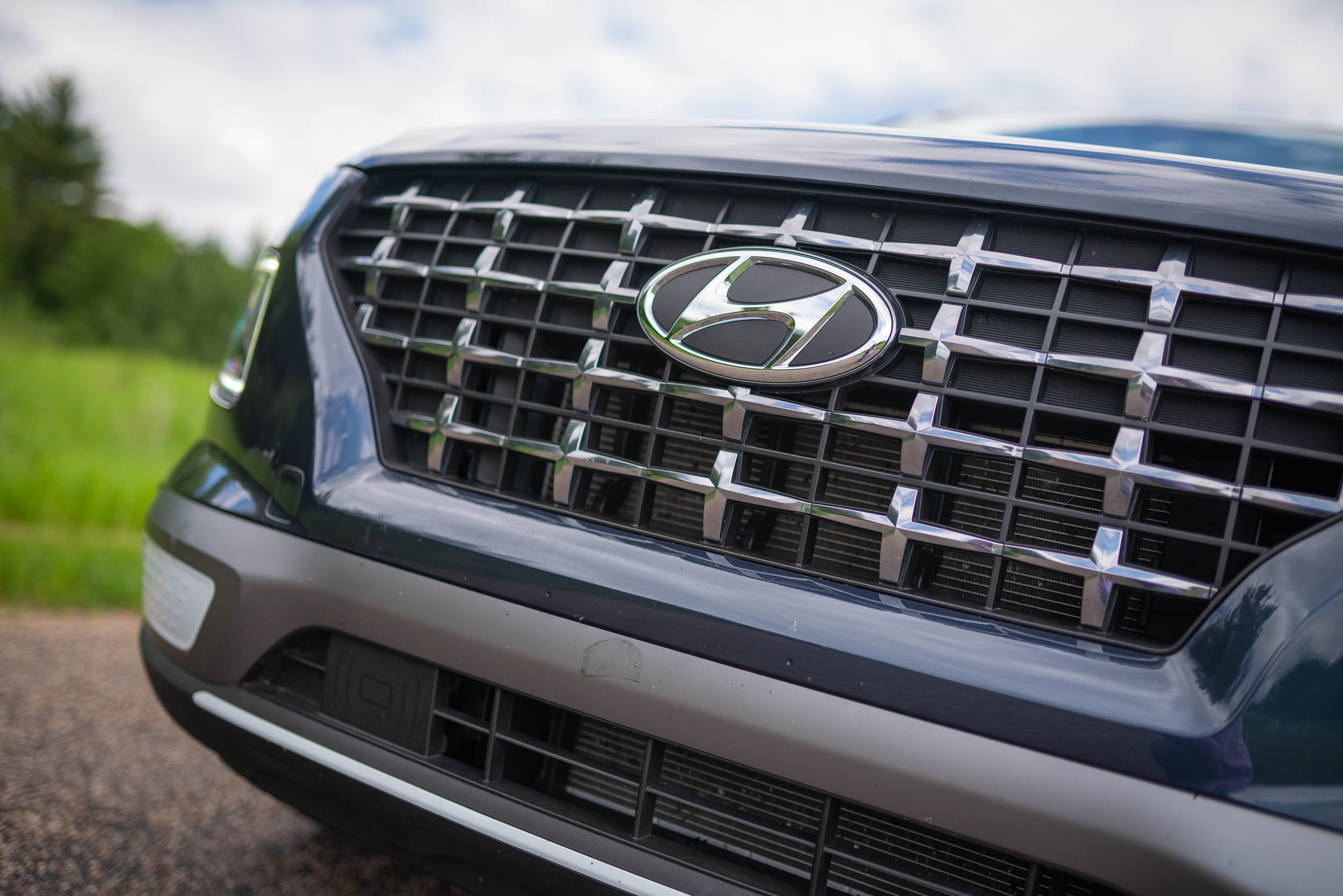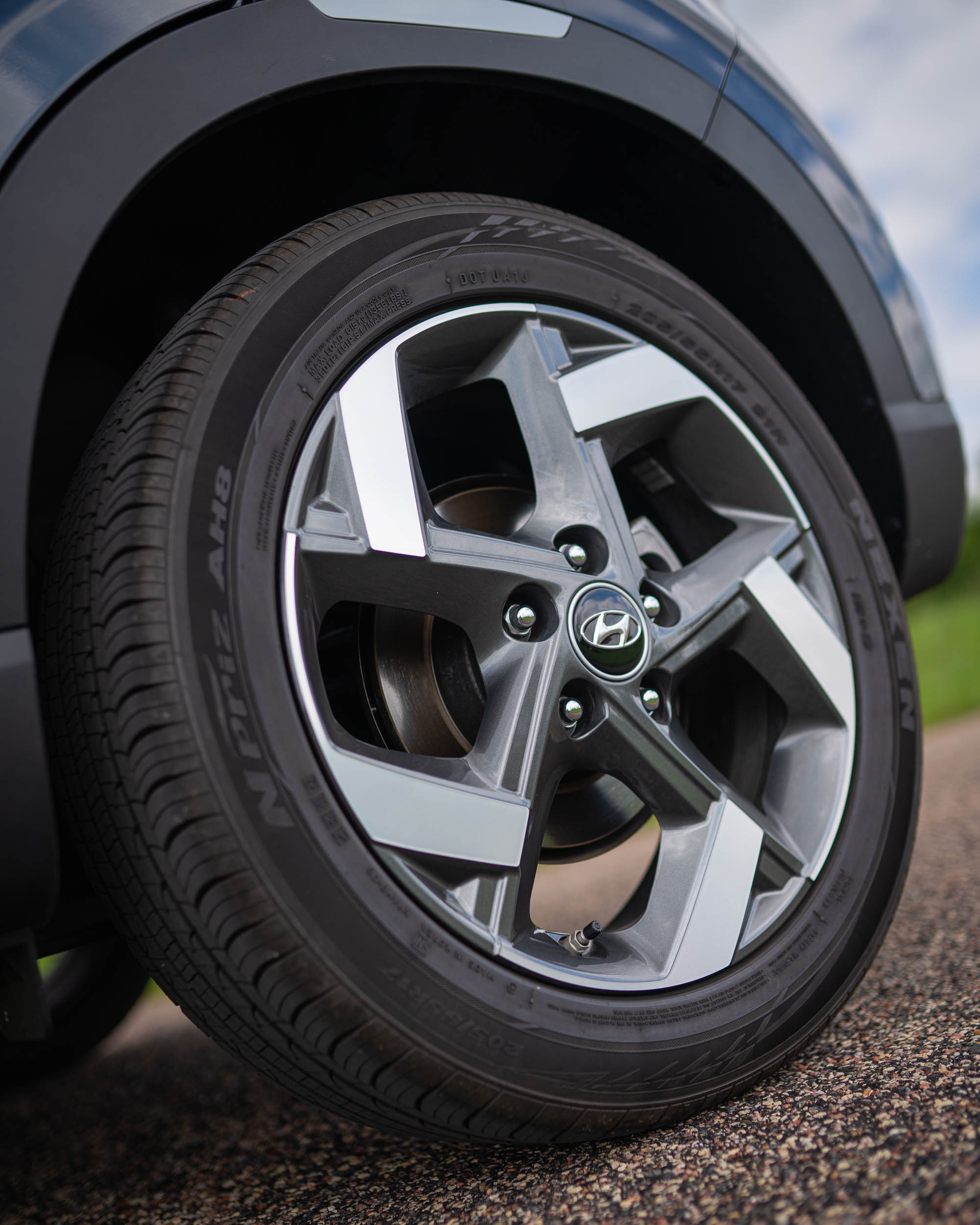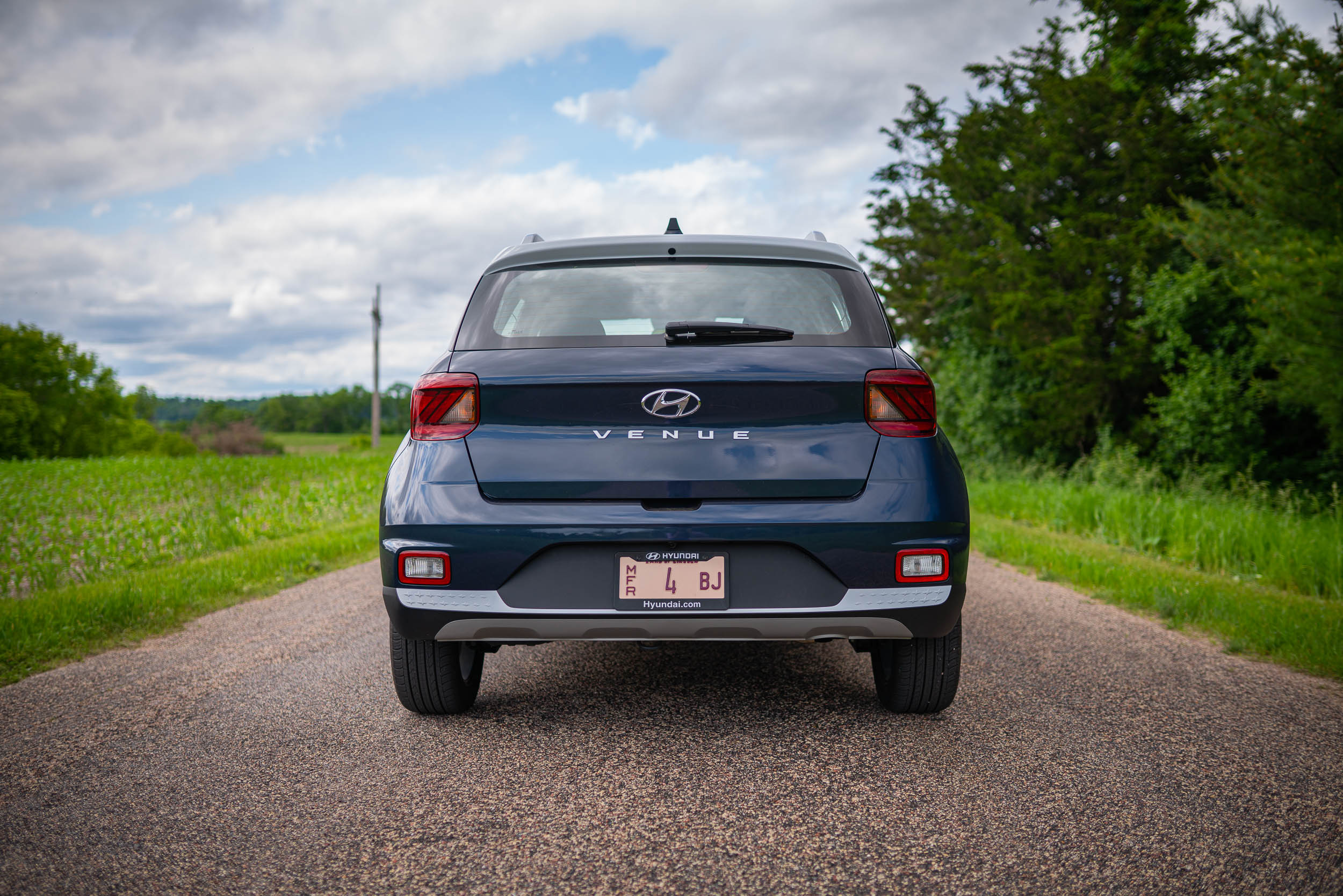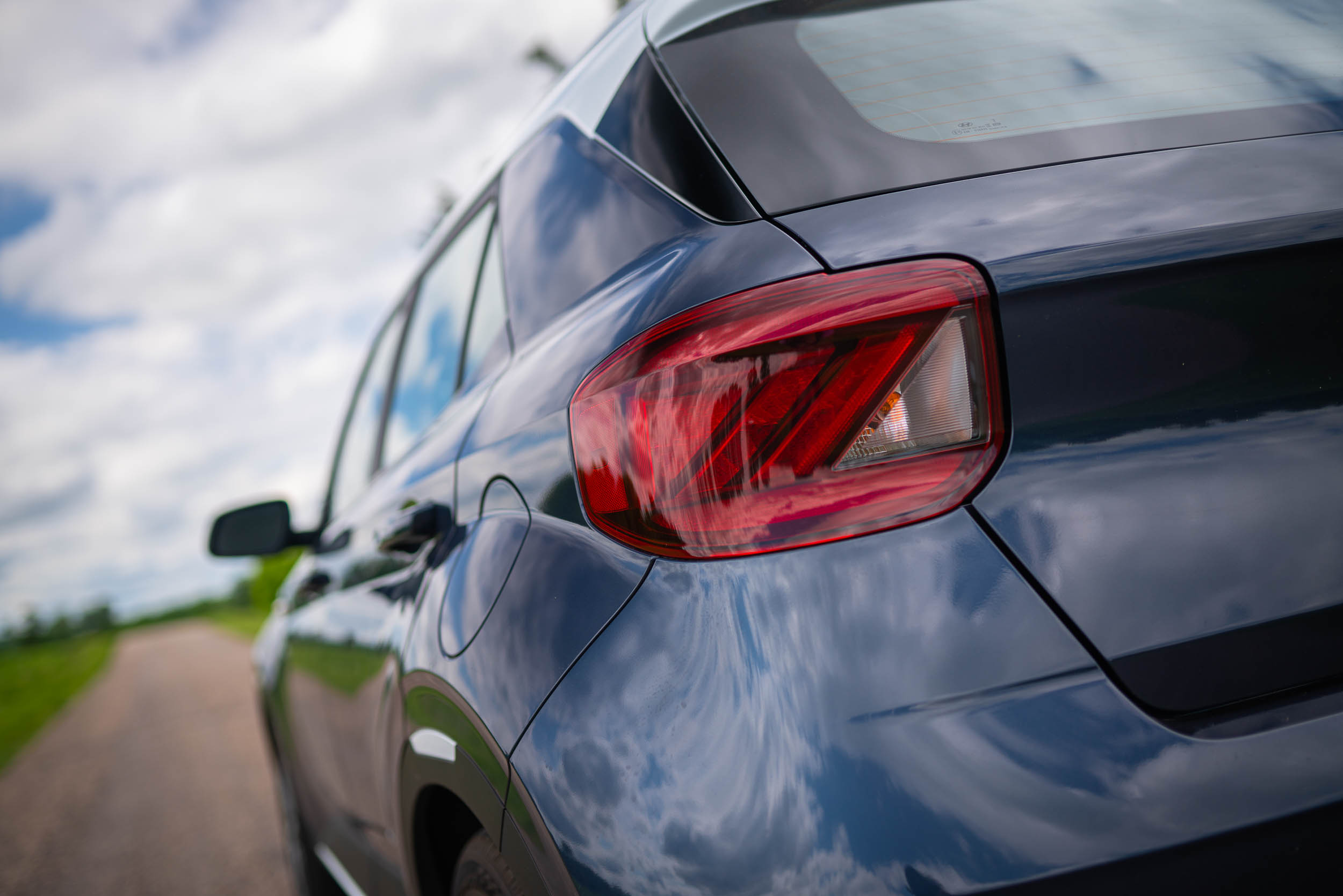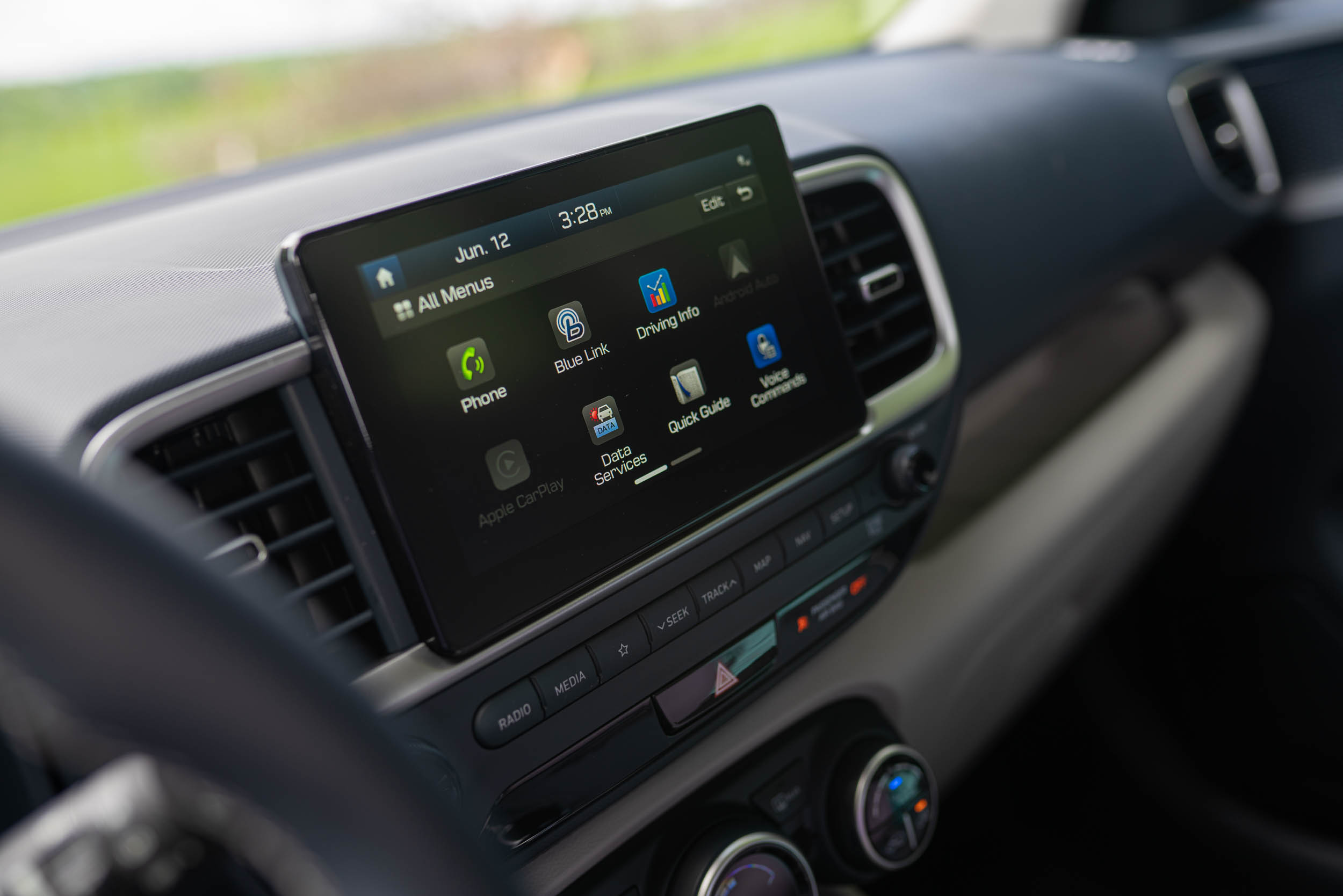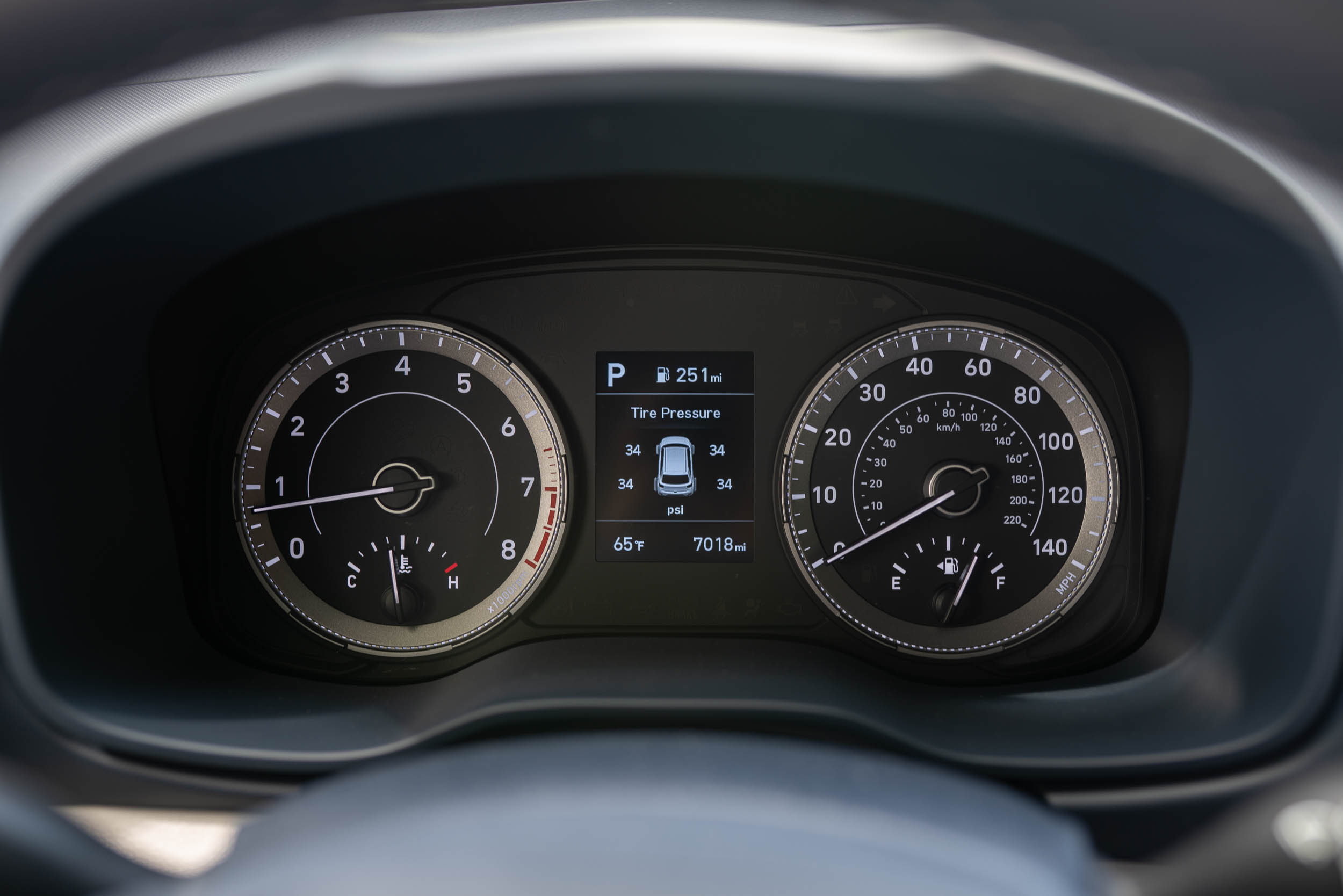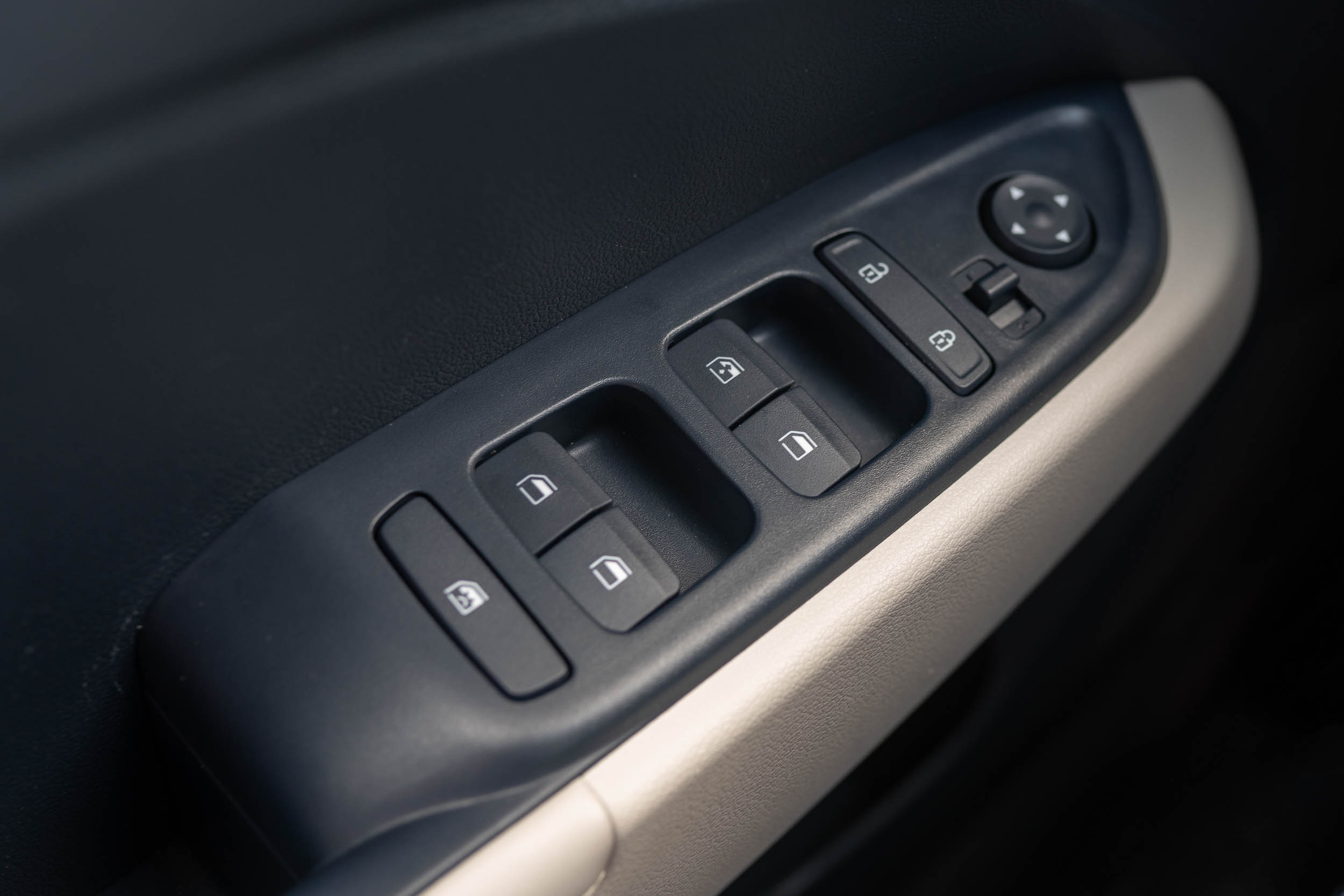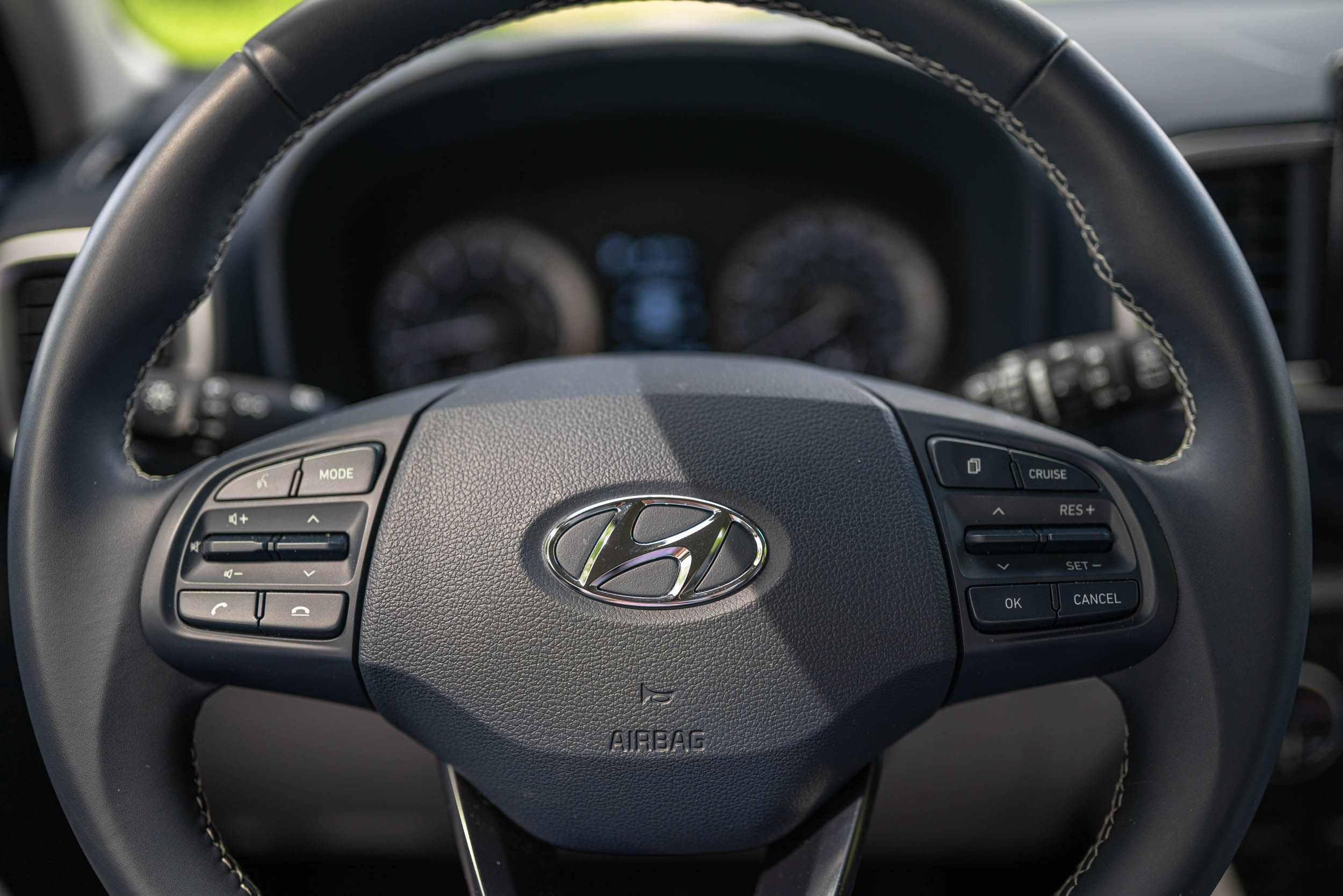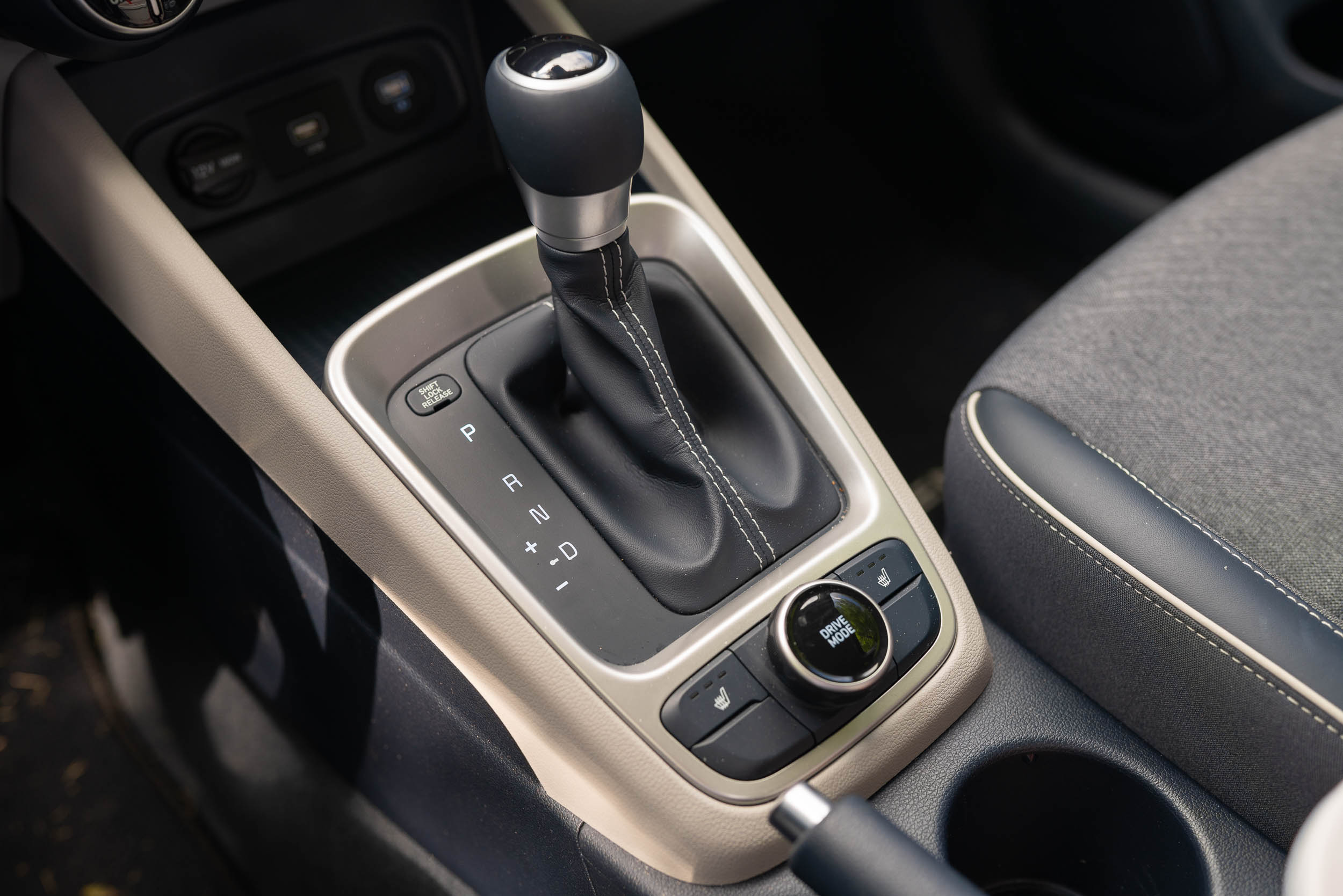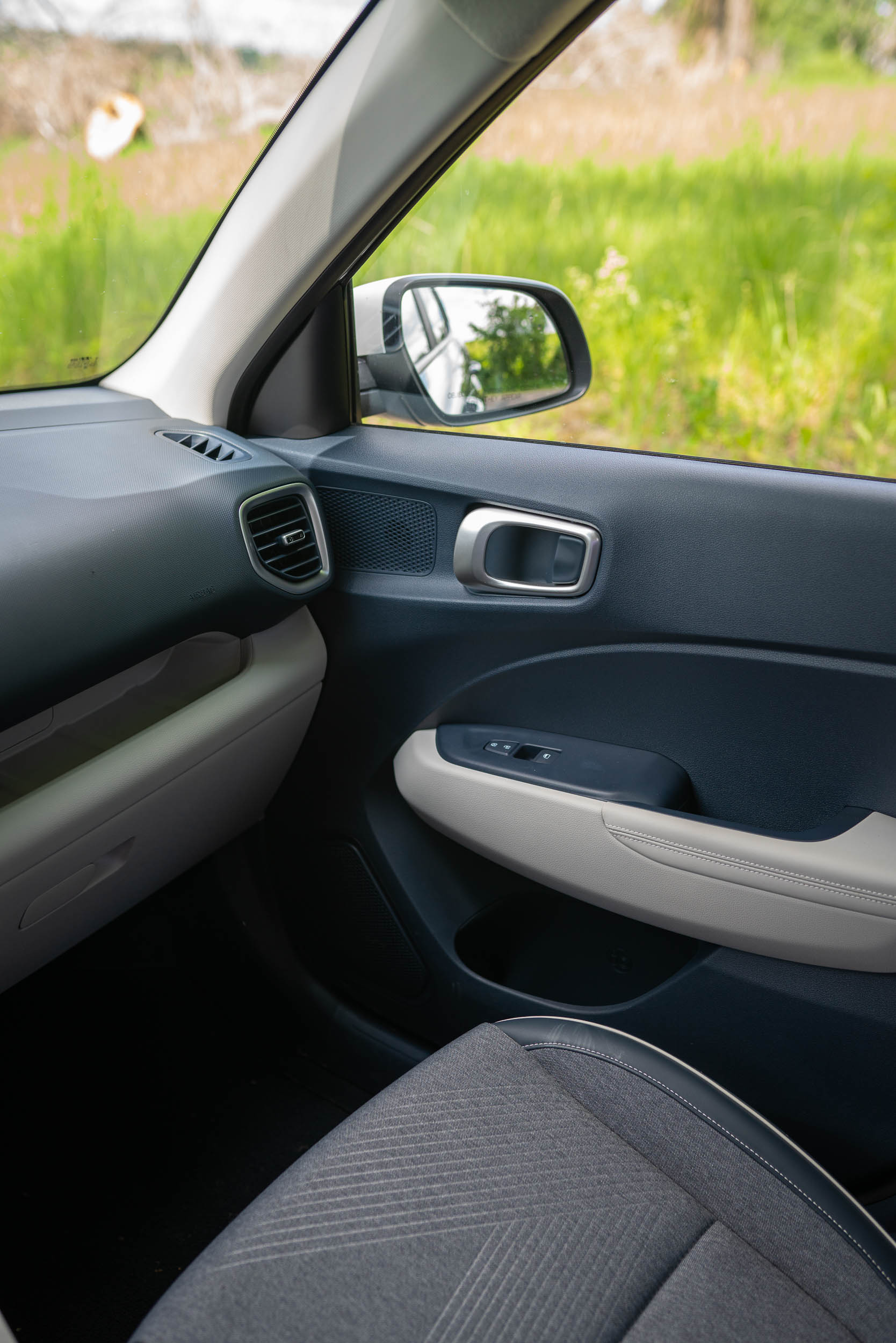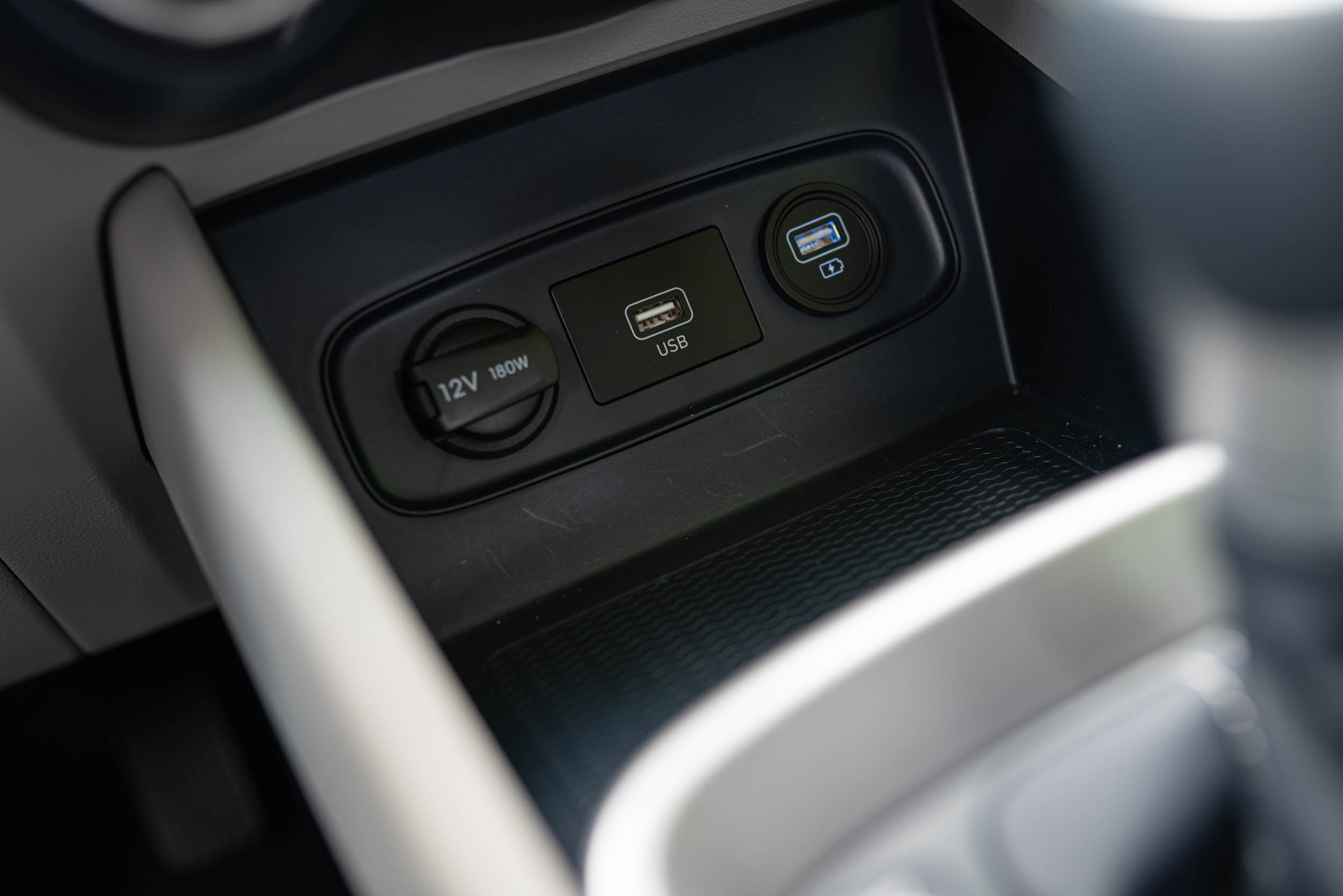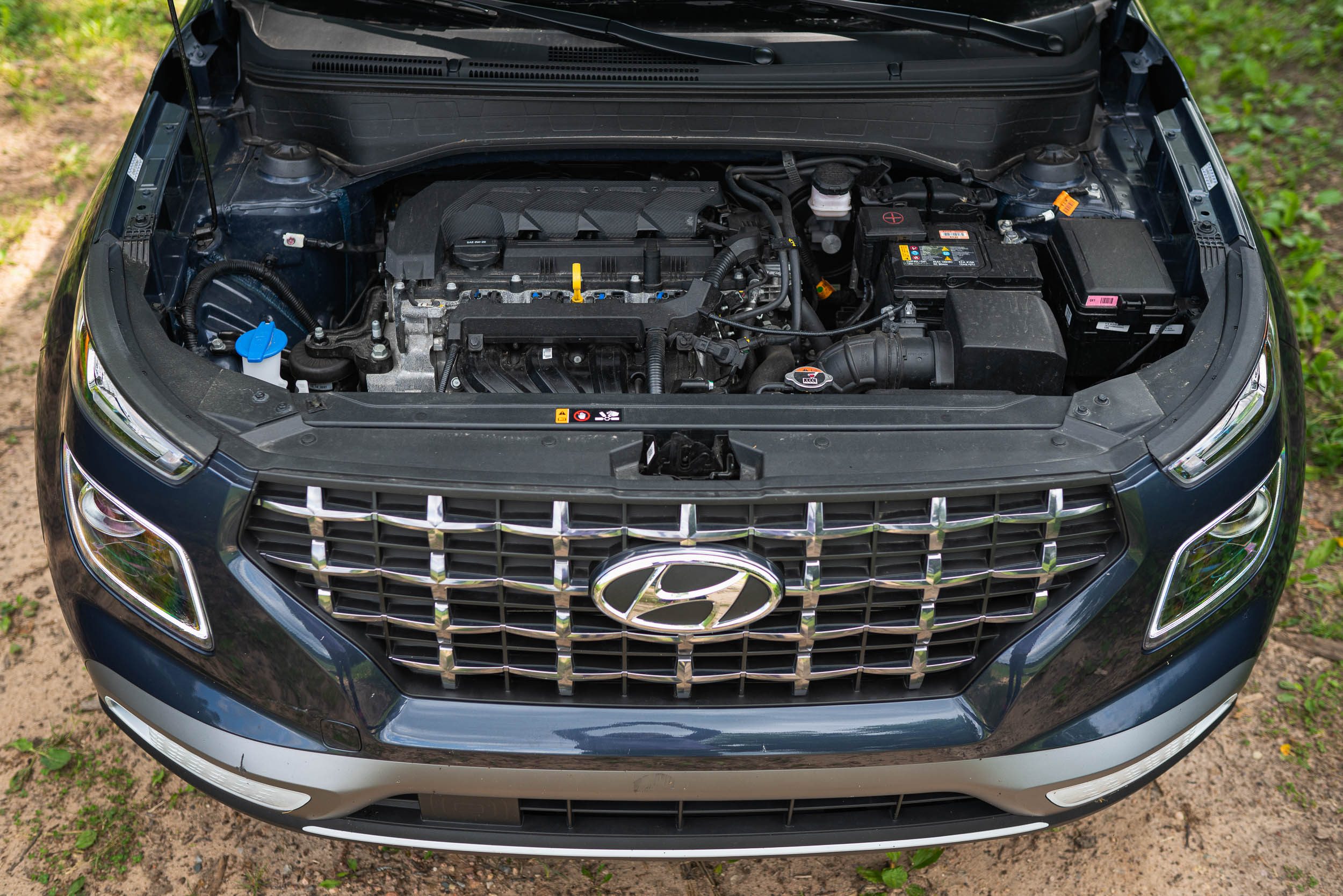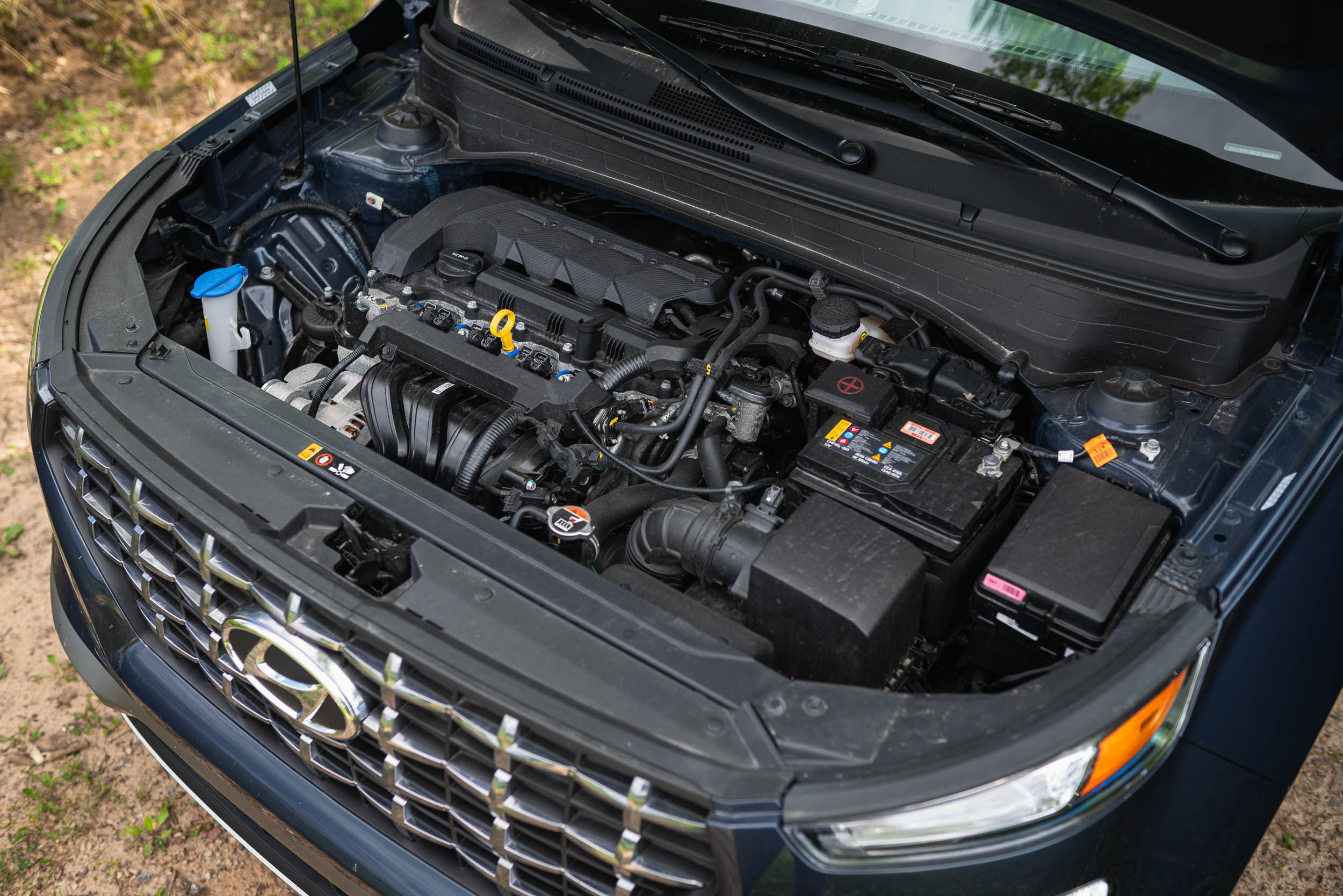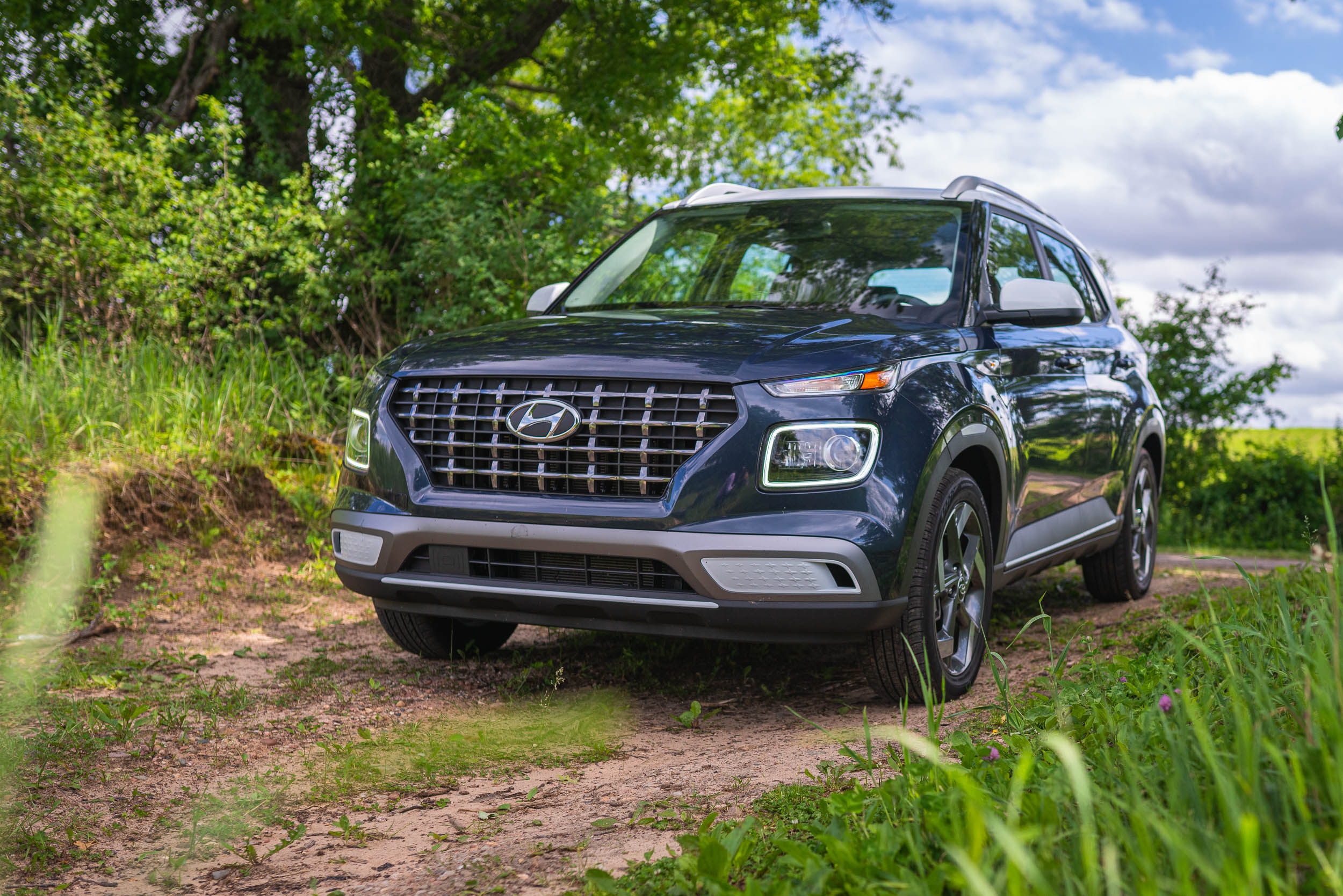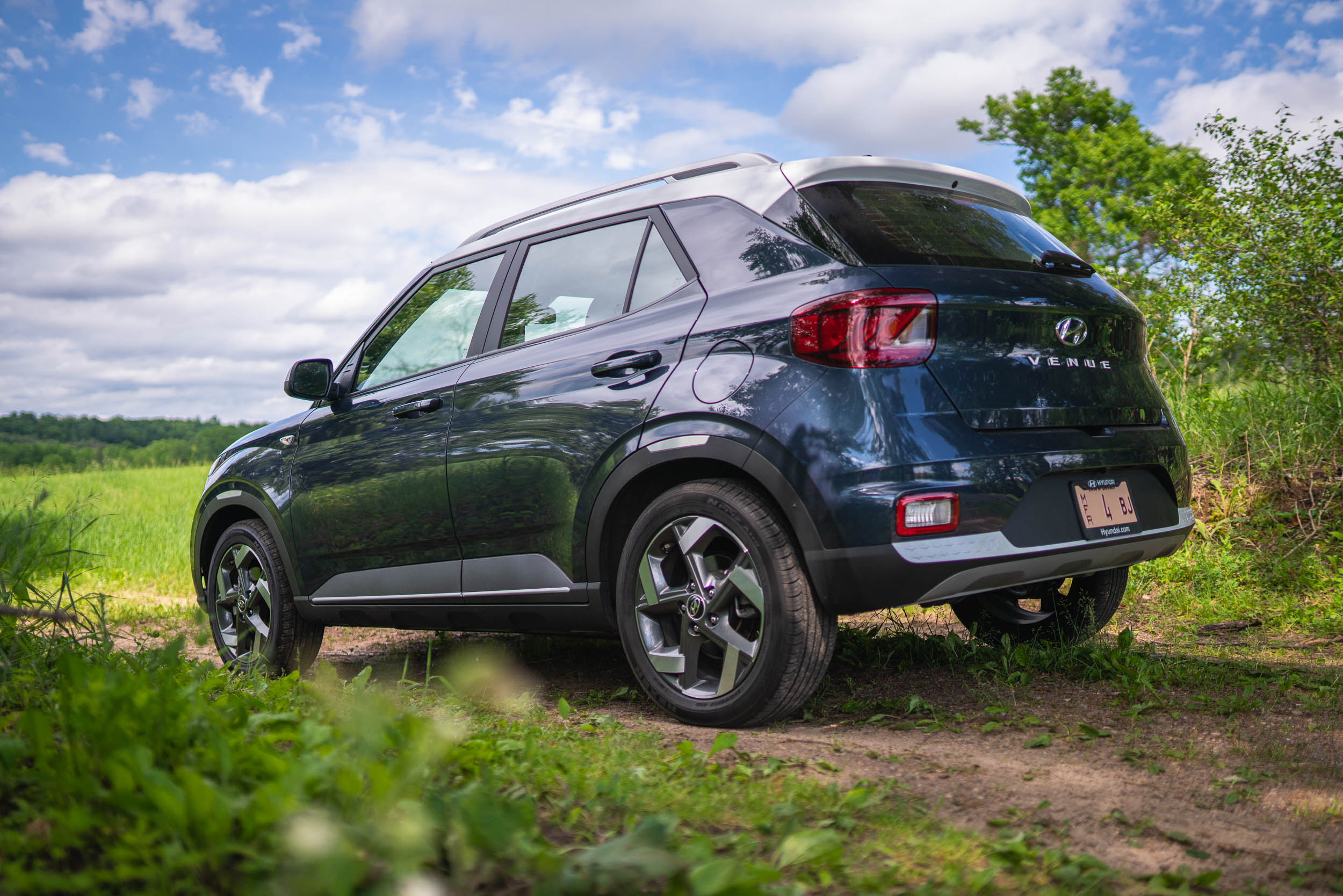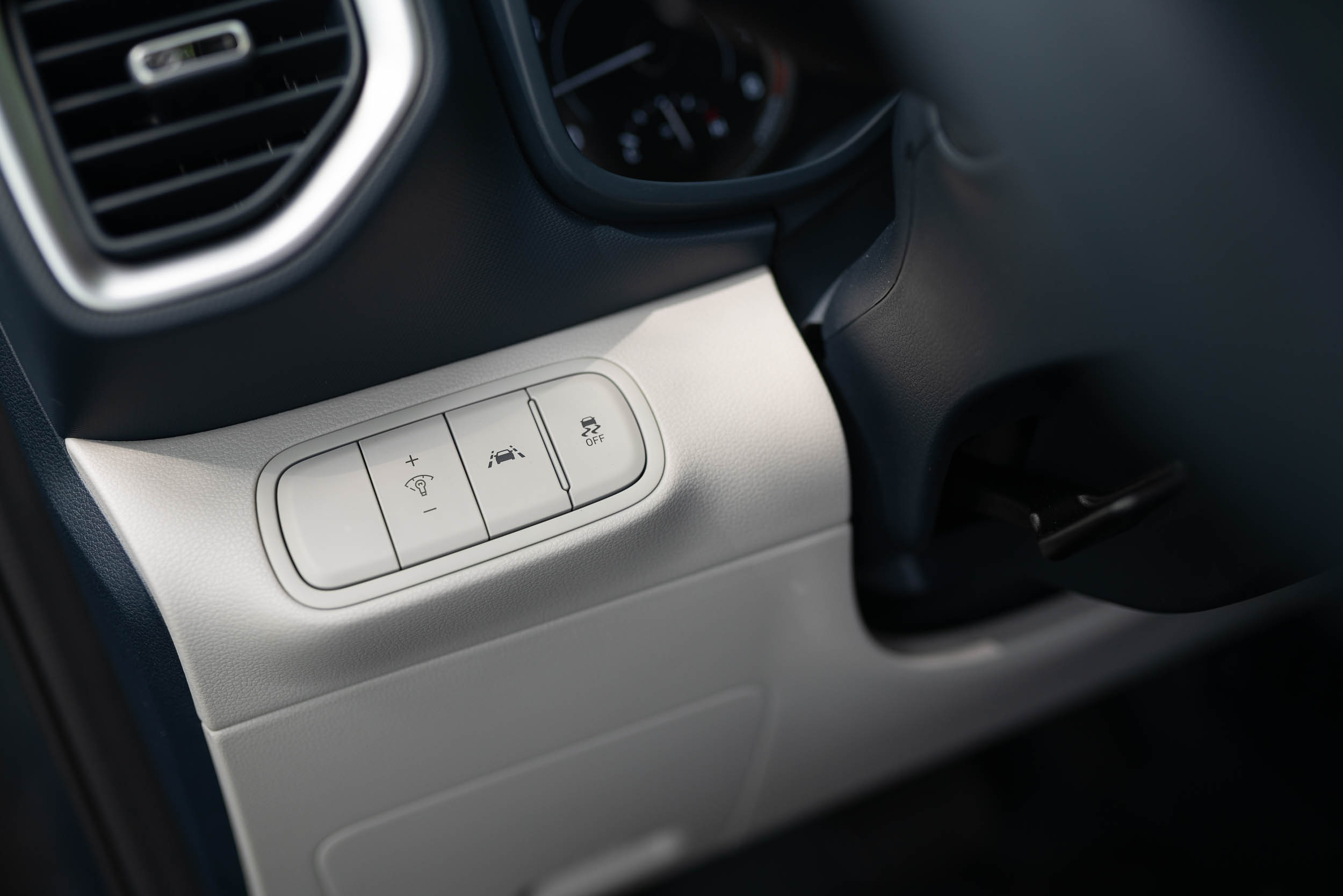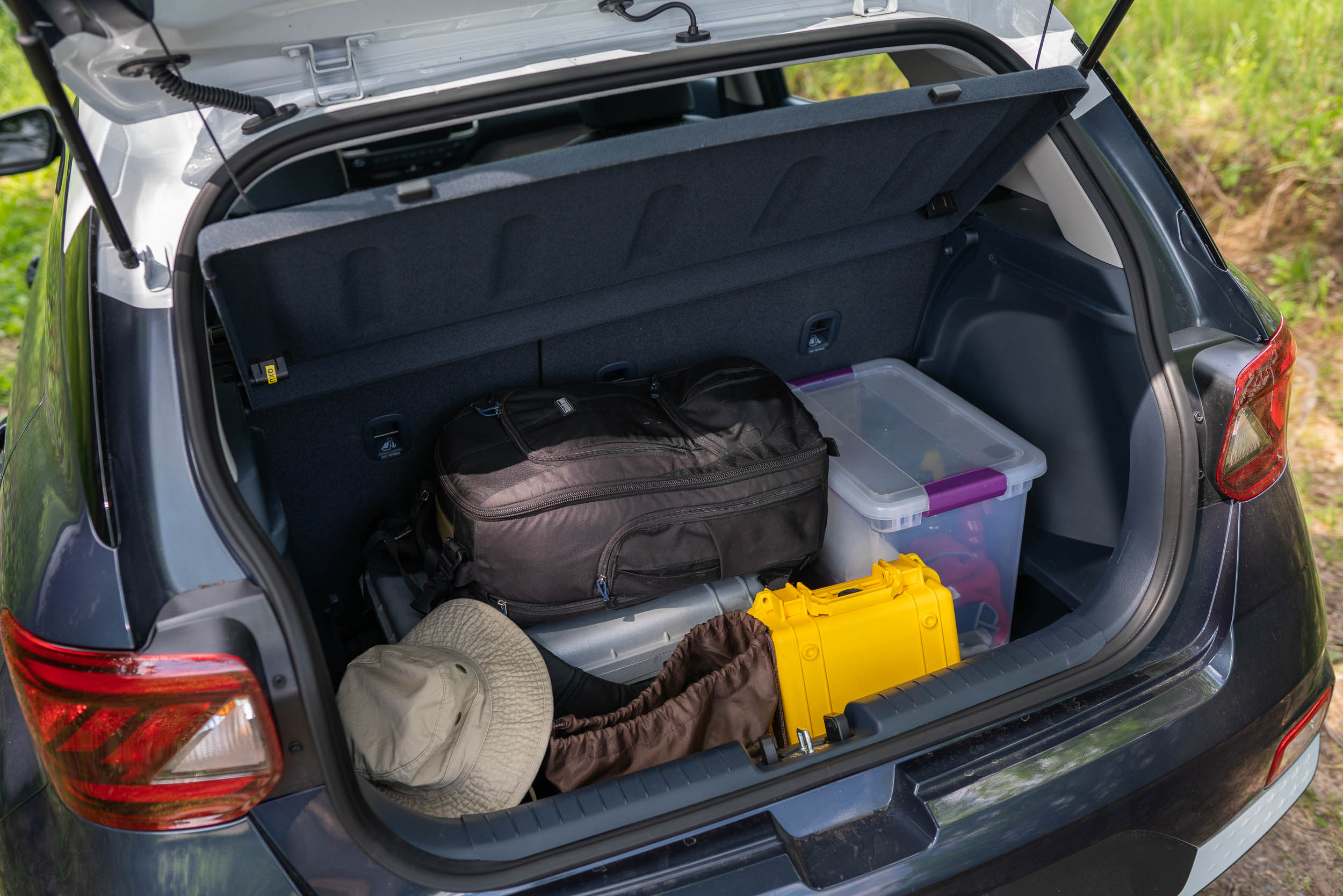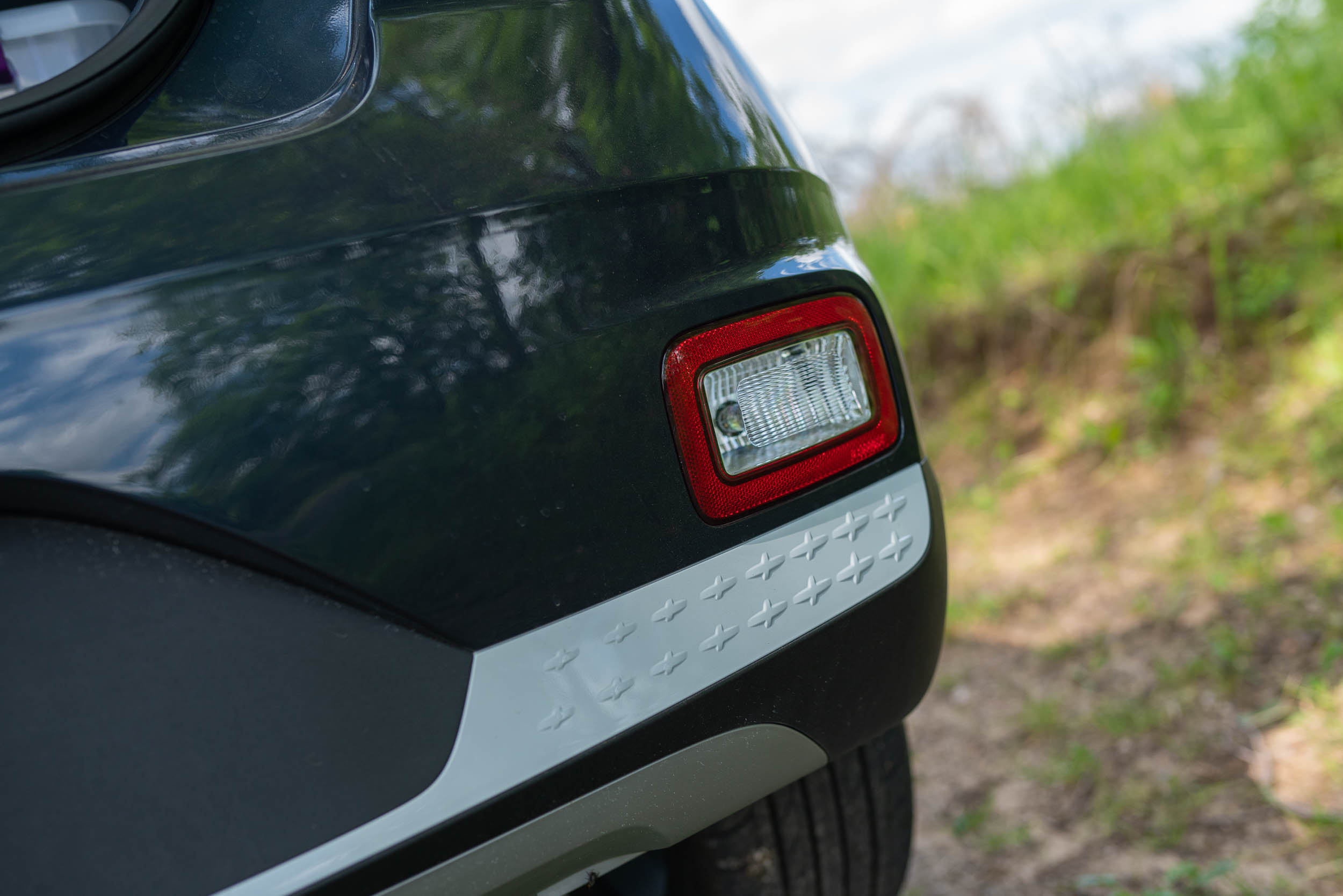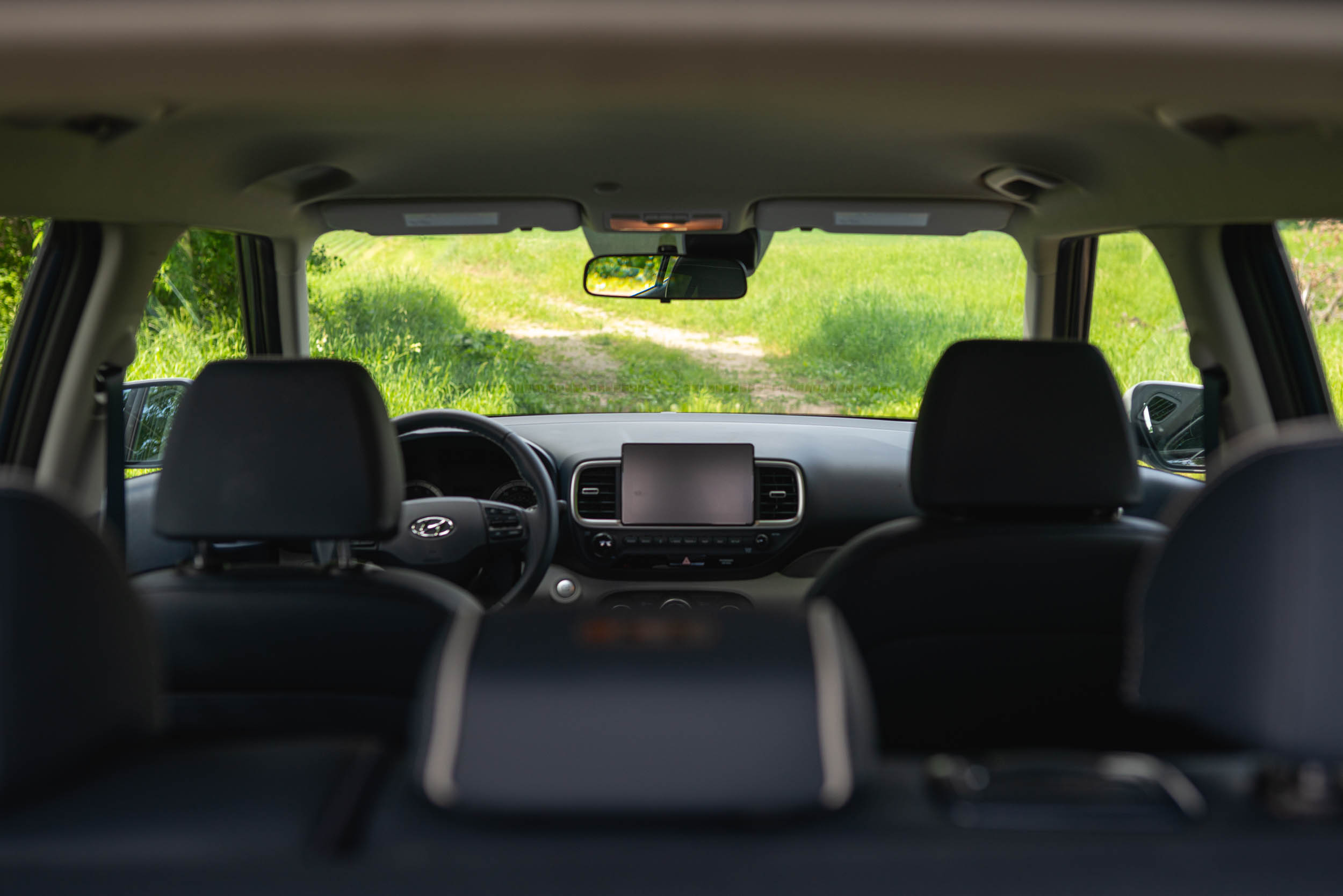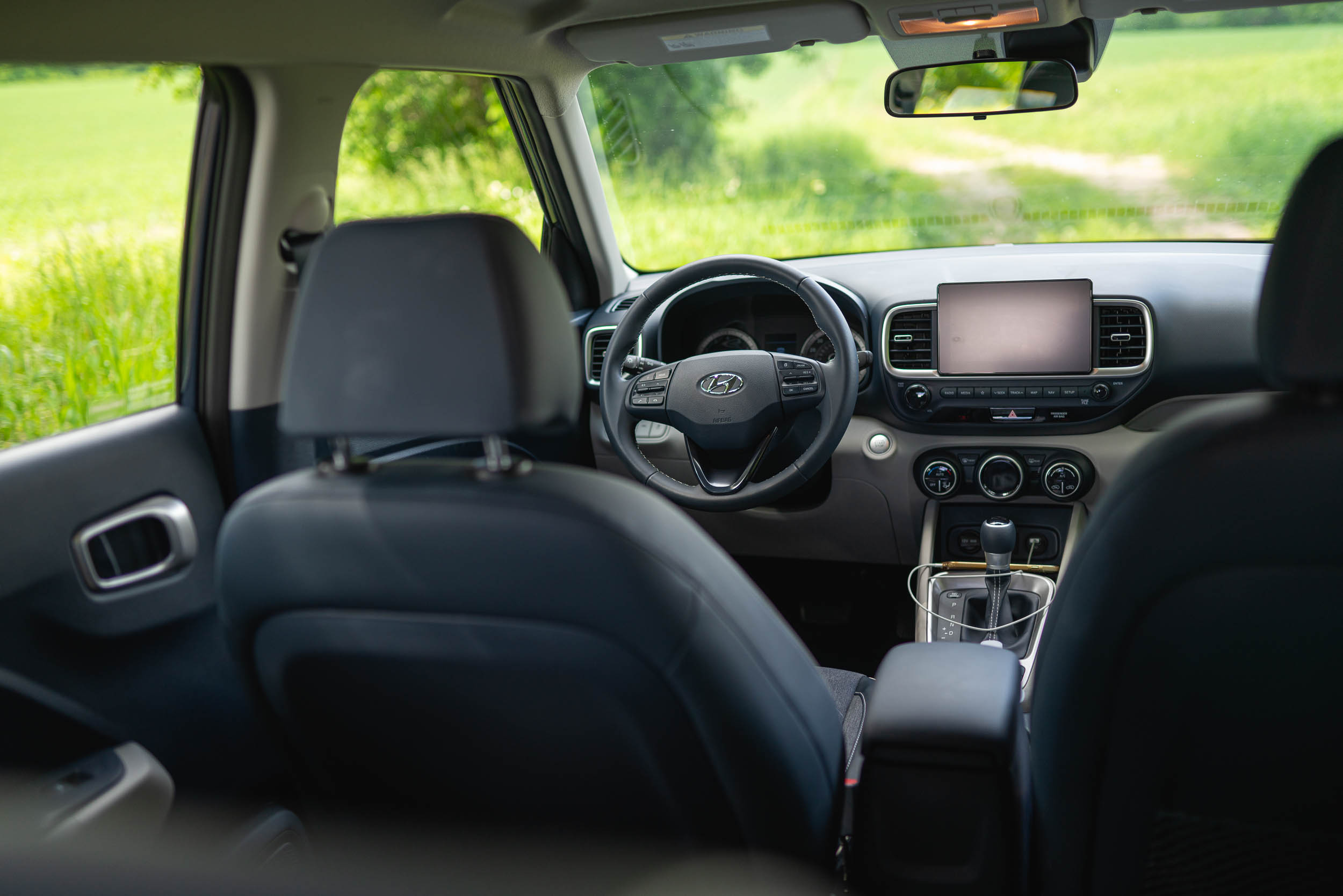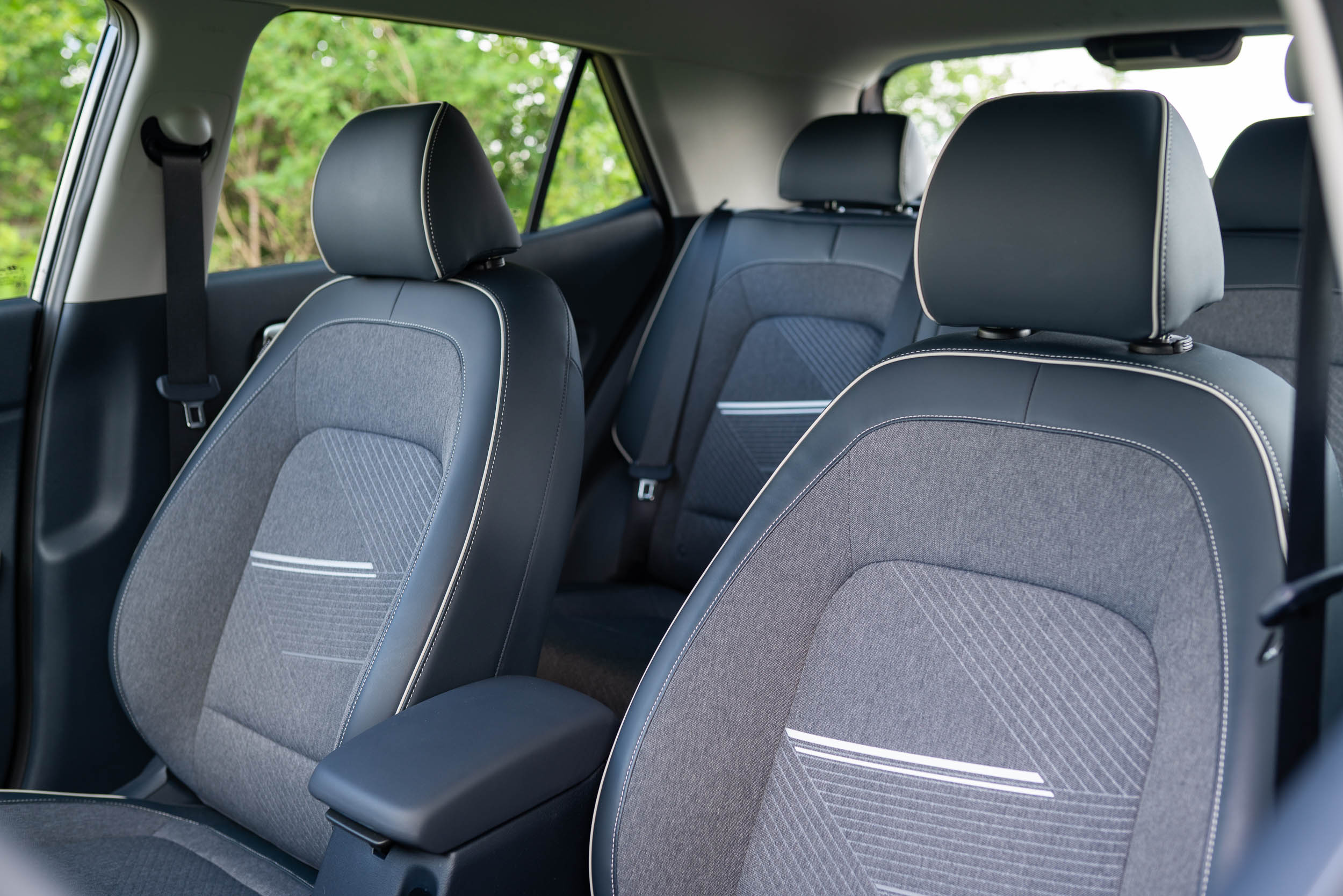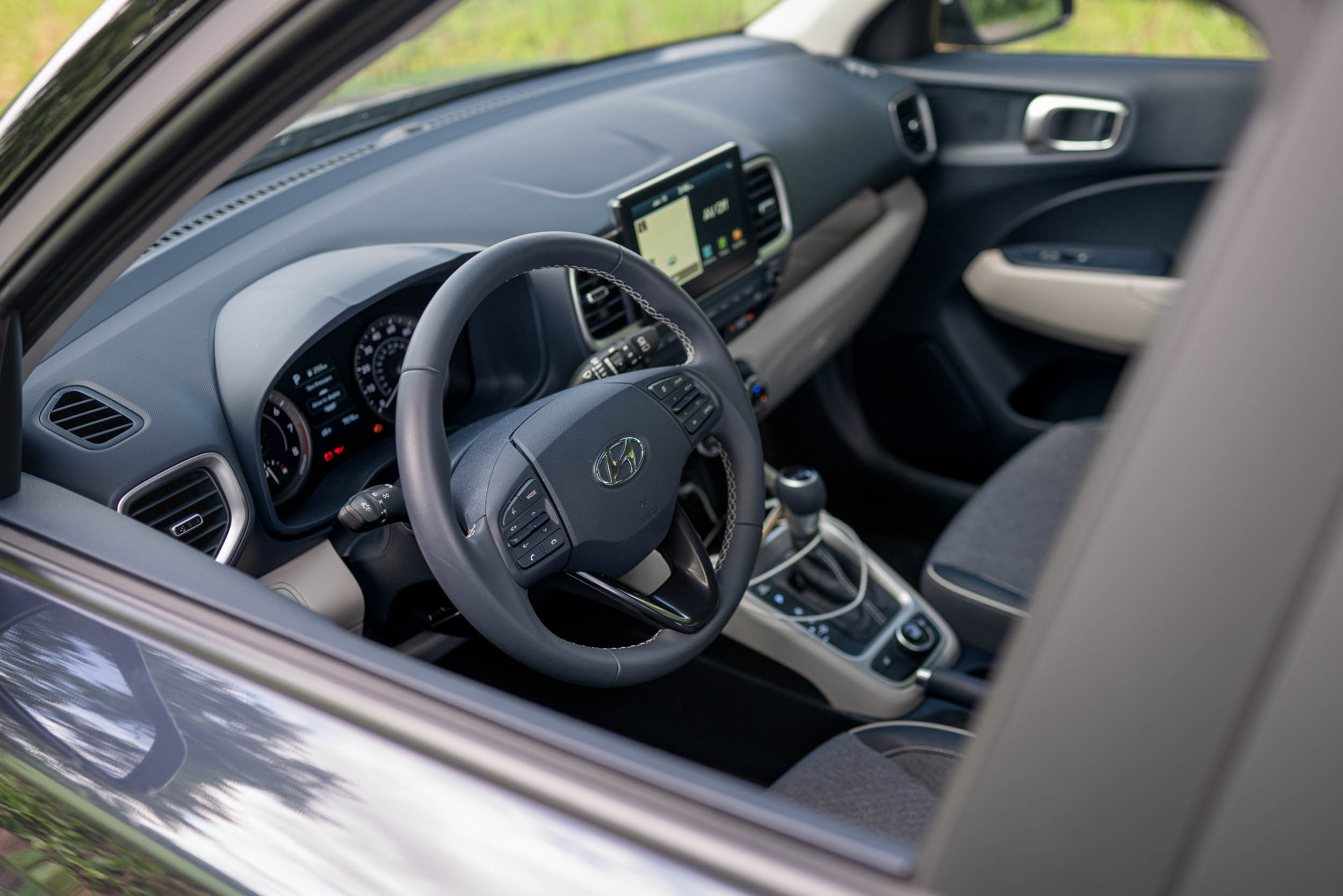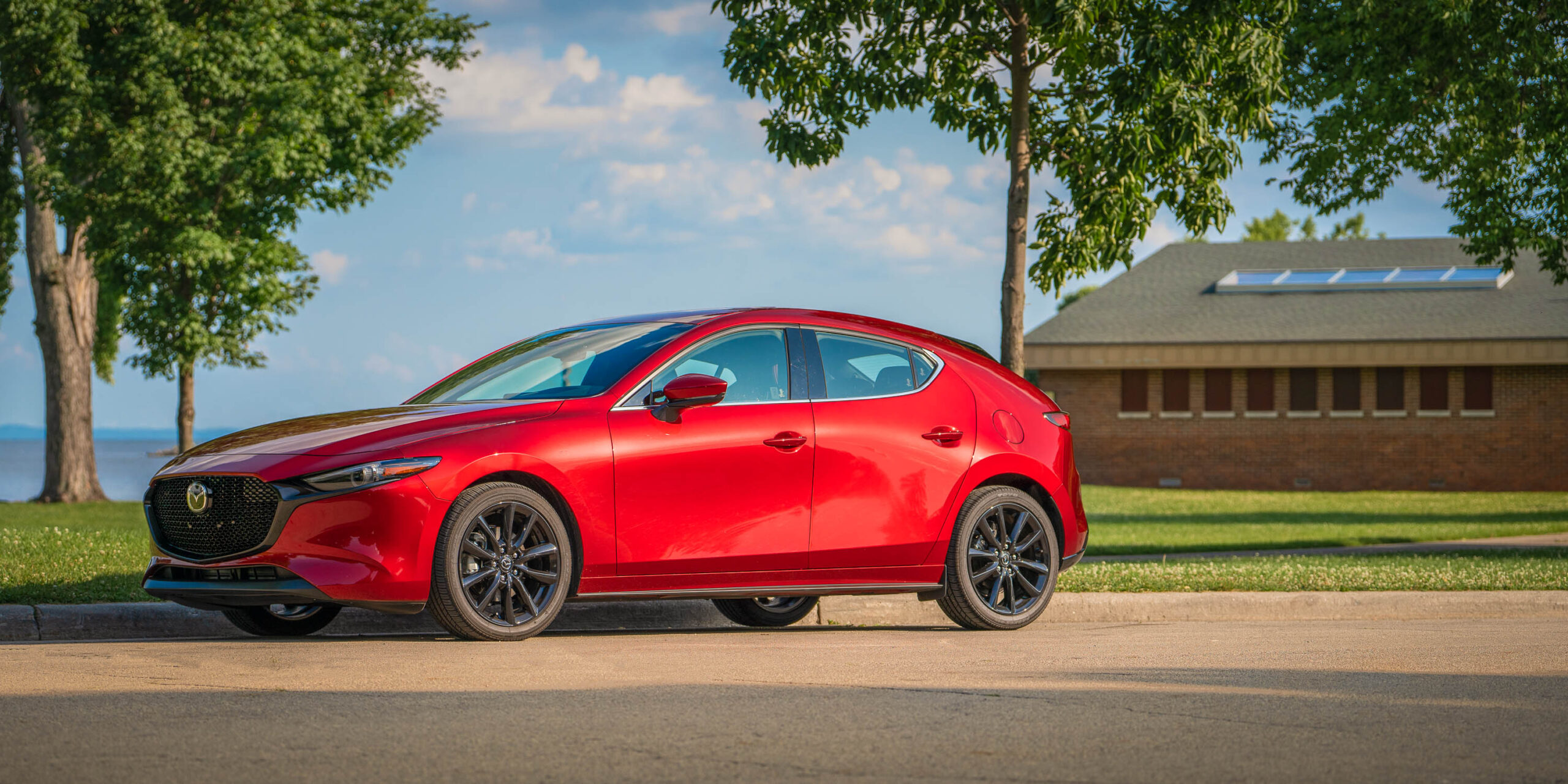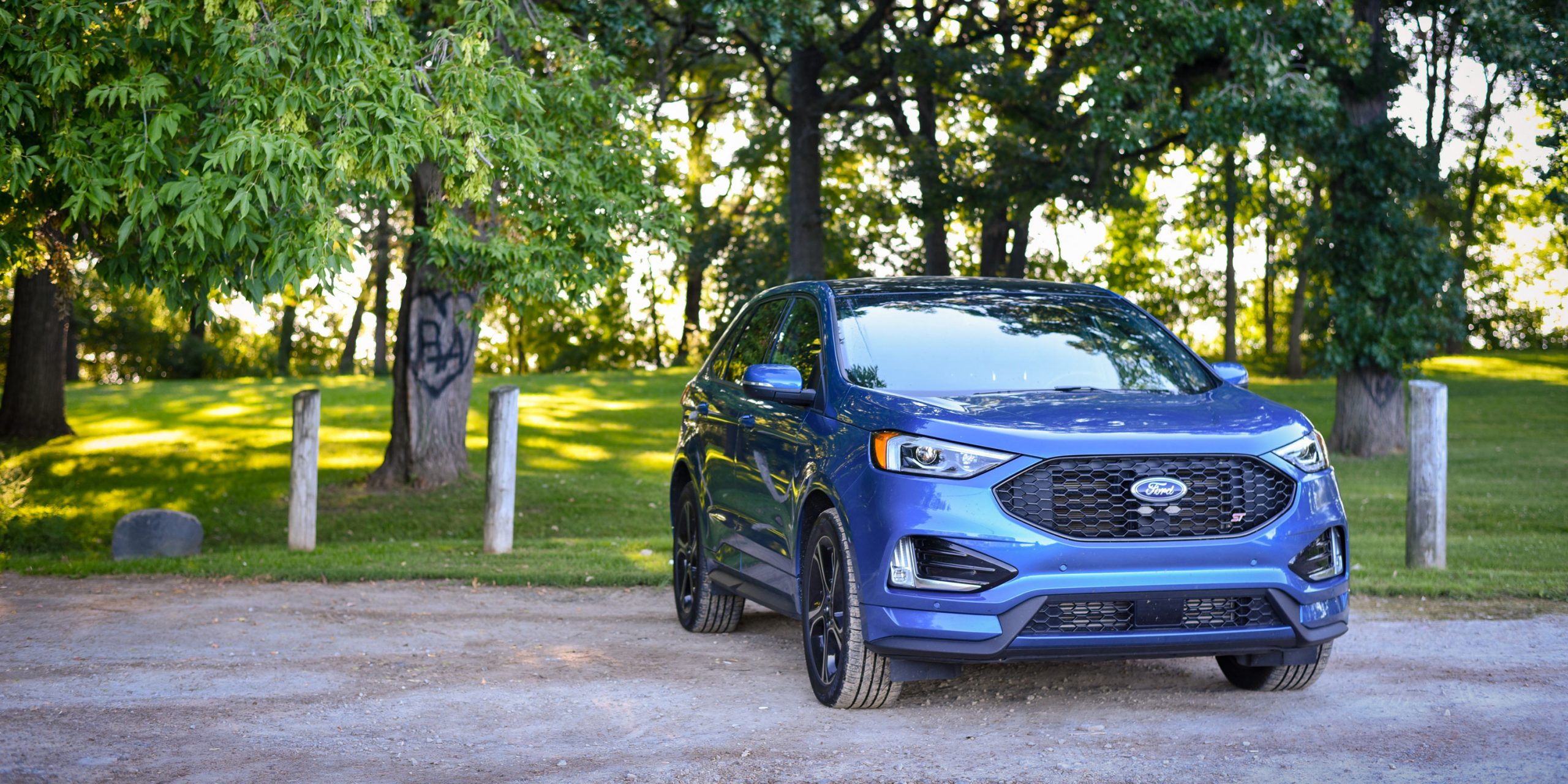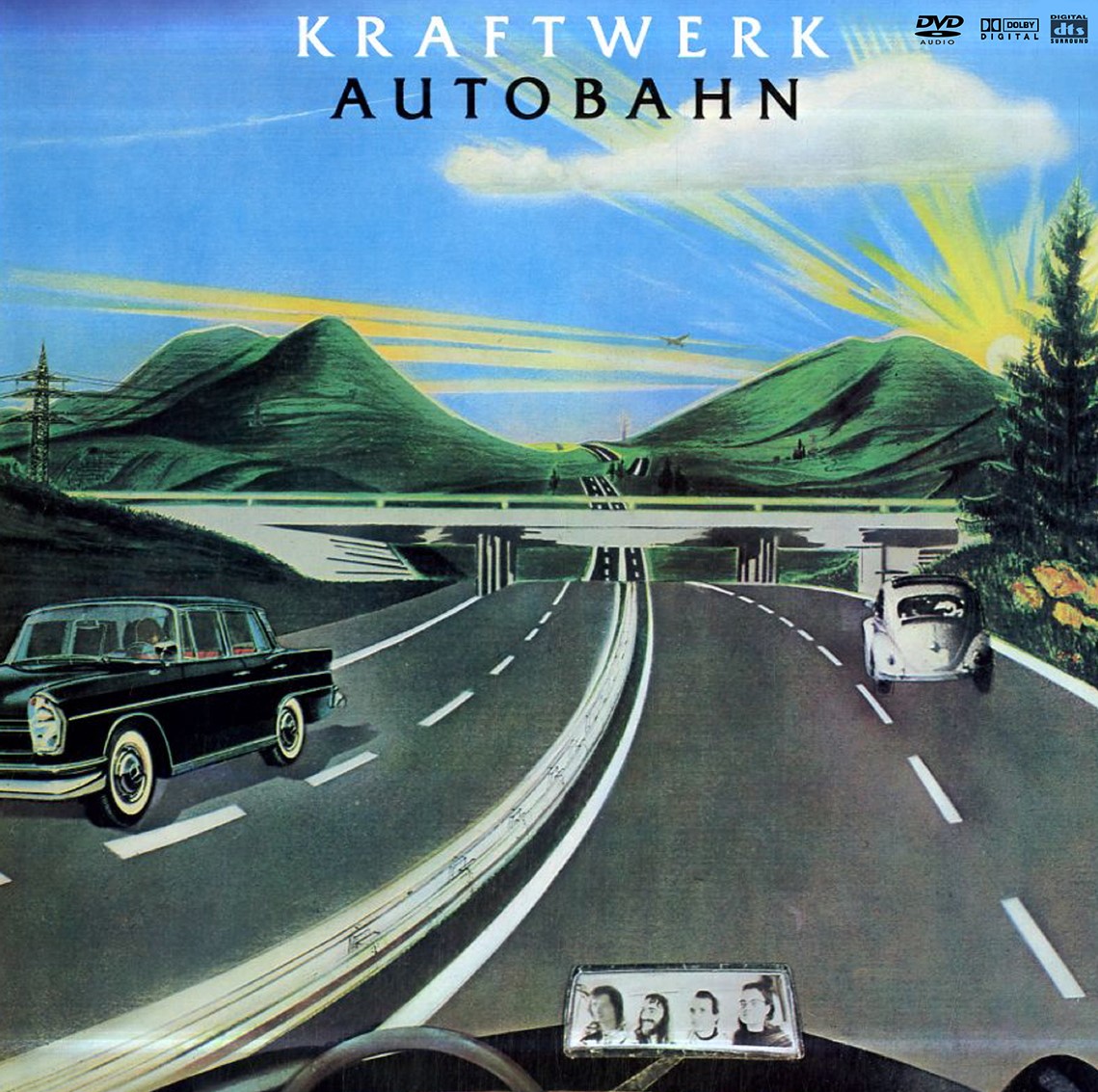2021 Kia Seltos versus 2020 Hyundai Venue: New entries in the highly competitive small SUV market

Words by Jennifer Jensen
Photos by Jessica Voruda
COMPETITION
The Hyundai Venue debuted at the 2019 New York Auto Show for the 2020 model year and I don’t care what anybody else says, I think it’s adorable.
Add the “Denim Edition” looks and materials to the mix and I don’t know how you would think this cute-ute is anything but delightful.
Then there is the all-new Kia Seltos. Premiered at the Los Angeles Auto Show in the fall of 2019 and available this past summer as a 2021 model, the Seltos name is, “inspired by Greek mythology and the legend of Celtos, the son of Hercules. The story has it that Hercules had a son with Celtine, a daughter of a Celtic King, Bretannos, and named him Celtos, who was the forefather of the Celts. While representing the brave and assertive spirit of Celtos, the ‘S’ in the vehicle’s adapted name implies speed and sportiness.” Well, at least according to Kia.
The Seltos looks more country than the citified Venue. But both serve as modest runabouts packed with features and tech at a reasonable price. Let’s dig in!
SOPHISTICATED STYLE
As the corporate cousin to Kia’s Soul, the original hamster mobile, the Venue is the smallest SUV offered in Hyundai’s current vehicle lineup. And that is a considerable lineup.
While the Soul has been around for awhile and its boxy form are well known to most drivers on the road, the Venue looks a little more sophisticated to me. It is certainly packed with character, especially in the Denim trim.
Inspired by, well, denim jeans, the Denim trim is blue with blue and some blue added in for good measure. Seriously, there is blue everywhere. Though the roof is white, like whipped cream on top of a blue jean sundae.
The interior carries the blue theme even further.
The seats look like a denim material but are just cloth with contrasting stitching and off-white highlights. The edges of the seats are a blue leatherette with off-white piping. It looks good.
Blue and off-white abound in the rest of the cabin and while I was initially concerned the interior would be overwrought I felt the entire cabin was a cohesive package. The only downside was the vast amount of plastic. Even if that plastic was blue.
There is more than ample headroom in both the front and second rows though legroom in the back is somewhat inhibited.
Because the Venue is basically a box with windows, visibility is fantastic all around.
THE TECH
The instrument cluster in the Hyundai Venue has two easy-to-read circular analogue gauges with a small digital screen splitting them.
The center console is dominated by an eight-inch touchscreen that is inset between two air vents. Again, the design aesthetic is pleasing if not ground breaking.
There is a single row of push buttons underneath the screen to interact with the optional navigation system and the infotainment.
Below that are massive twist knobs for the HVAC. Seriously, the twisty dials are huge and you could easily use them when wearing winter gloves over your regular gloves. You could probably turn on the heat with your foot when you step into the Venue and get your morning stretch in as well.
The little Venue is also packed to the hilt with safety technology, especially for an entry-level vehicle.
We’re talking forward collision-avoidance, lane keeping, blind spot monitoring, and rear cross-traffic alert. All of that is standard. There is even a driver attention warning system that monitors your driving to make sure you don’t doze off while behind the wheel.
BAD TECH BAD
While there is no denying that the Venue has loads of equipment for its smallish price of entry, some of the tech felt like it could use a little more development.
That lane keep system did surprise me on a longer drive. Allow me to elucidate.
I was driving on a four-lane highway with very clear lane markings. The cruise control was set at a modest 3 miles-per-hour above the posted speed limit and I was still being passed by most traffic.
Lane keep assist was actively keeping me in my lane. We have tested several of these systems and it is very interesting how some systems will hug the left side of the lane, others the right and occasionally one will settle for the actual middle line. The Venue favored the left.
As I was approaching an exit that I had no intention of taking, another car was overtaking me on the left. Two things then happened almost simultaneously.
First, the overtaking car entered my blind spot and second, the exit lane opened up to the right.
Like a bloodhound locked on a scent, the steering wheel angrily pulled me towards the side of the road and the exit ramp. I had to aggressively yank the wheel back to keep the Venue on the highway.
The rest of the safety systems worked as expected.
ON THE ROAD
A 1.6-liter four-cylinder engine with an underwhelming 121 horsepower and 113 lb-ft of torque powers the Venue.
It’s enough juice to get things rolling and keep them going just make sure you lean on the throttle a little more when approaching a hill of any stature. It just sounds like the hamsters under the hood are working really hard.
The ride quality in the Venue is a little bouncy but that is the result of a short wheelbase, taller ride height and light weight.
There is a fair amount of road noise that makes its way into the cabin but it is not overly intrusive and you can still hold conversations with other passengers without resorting to shouting.
But what happens if you need a little more space, or a little more quiet, or a little more power?
ENTER SELTOS
The Kia Seltos can pretty much be summed up as a little more of everything good that makes up the Venue.
The Seltos is longer, wider and taller than the Venue with a larger loading area in the back. Its appearance is more akin to a mid-size SUV than a small crossover. In fact, the side profile of the Seltos is very similar to that of the Volvo XC40.
Kia’s press materials refer to the “adventurous spirit” of the Seltos and it is clear when walking around the outside that they mean it.
The Seltos has 7.2 inches of ground clearance with skid plates on both the front and rear. There is also some black plastic-like cladding around the wheel wells meant to provide that rugged look so common on soft roaders.
Kia extends the tough factor of the Seltos by adding torque vectoring and a locking differential that will lock the all-wheel-drive system in a 50:50 split.
THE NITTY GRITTY
There is 175 horsepower along with 195 lb-ft of torque on hand from a turbocharged version of the same 1.6-liter four-cylinder that powers the Venue. That extra power does wonders for the joy of your right foot.
That turbo engine is mated to a seven-speed double clutch transmission instead of the base model’s intelligently variable transmission (Kia’s version of a CVT), which is also in the Venue.
Inside the Seltos is far more capacious than the Venue yet none of that space feels wasted.
The second row benefits the most from the longer wheelbase with ample room for tall adults.
The touchscreen is 10.25-inches in the Seltos and it sits on top of the center console rather than blended in like the Venue. Those extra few inches make things easier to read and touch on the screen.
The Seltos maintains a single row of buttons underneath that larger screen to interact with the nav and infotainment systems.
The HVAC controls are smaller on the Seltos than those large knobs in the Venue but they still work just fine.
Drivers also face a pair of round analogue gauges in the instrument cluster but there is a larger and more informative digital screen in between them.
The Seltos really just has more of all the good stuff.
THE DRIVE
I immediately noticed how much softer the Seltos is out on the road. The longer wheelbase really does wonders for smoothing out road imperfections.
The turbo on the four cylinder is far more rewarding under load but it also sets your mind at ease knowing the engine will deliver some extra punch whenever you need it, like merging into traffic.
Both vehicles have adjustable drive modes but I would suggest neither one needs them. The changes in shift response, steering and ride are not discernible enough to warrant the extra technology on hand to make these changes happen.
Interestingly, the Seltos does not have paddle shifters for the DCT. I was surprised by this as so many other vehicles have paddle shifters even if the transmission is a standard automatic or even a CVT!
You can shift gears with the PRNDL but like we have said before, there is no need in a vehicle like this.
IN THE END
Both the Venue and the Seltos are great value propositions. The standard content and inexpensive optional equipment mean the price of entry is quite affordable.
Our Venue Denim Edition rang in at $23,305 and our Seltos SX at $29,485. Both of those prices include destination fees.
There are some creative solutions in both vehicles like the bi-level load floor in the back that can be lowered to provide more storage and raised back up to make a flat loading surface with the back seats folded down.
If you need an economical vehicle that can surprise and delight in its content, drive and general offerings, the Venue might fit the bill. If you need more room and fancy a little more power, than you couldn’t go wrong with the Seltos.
